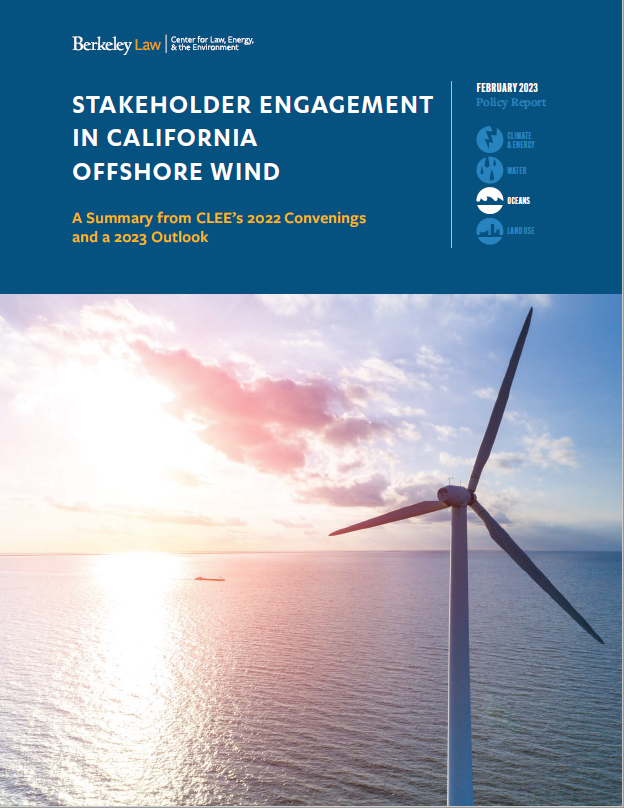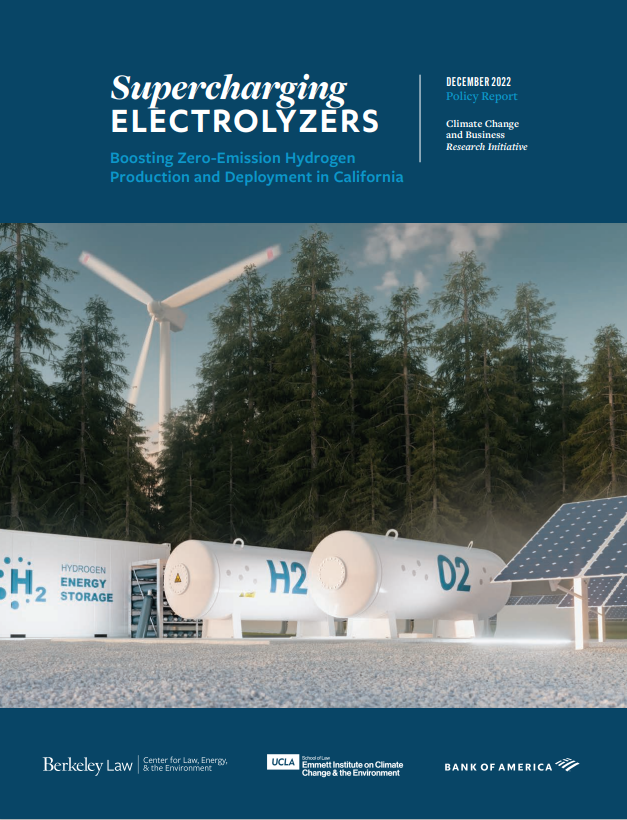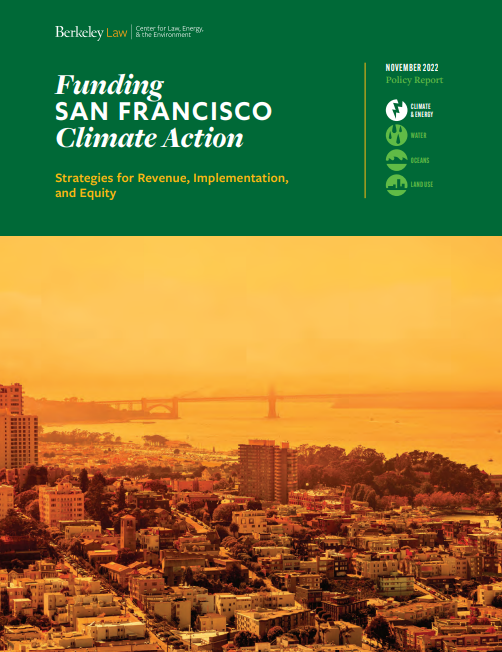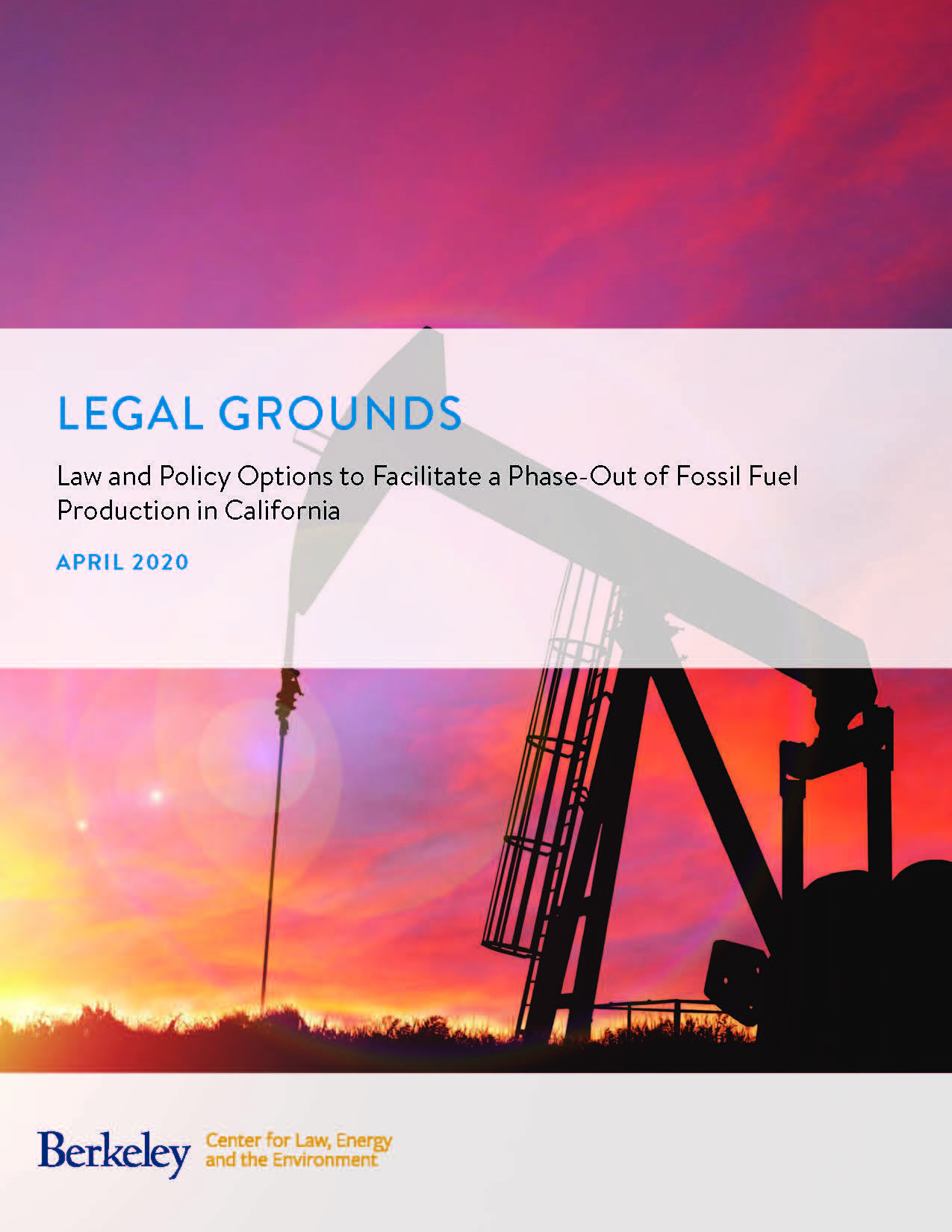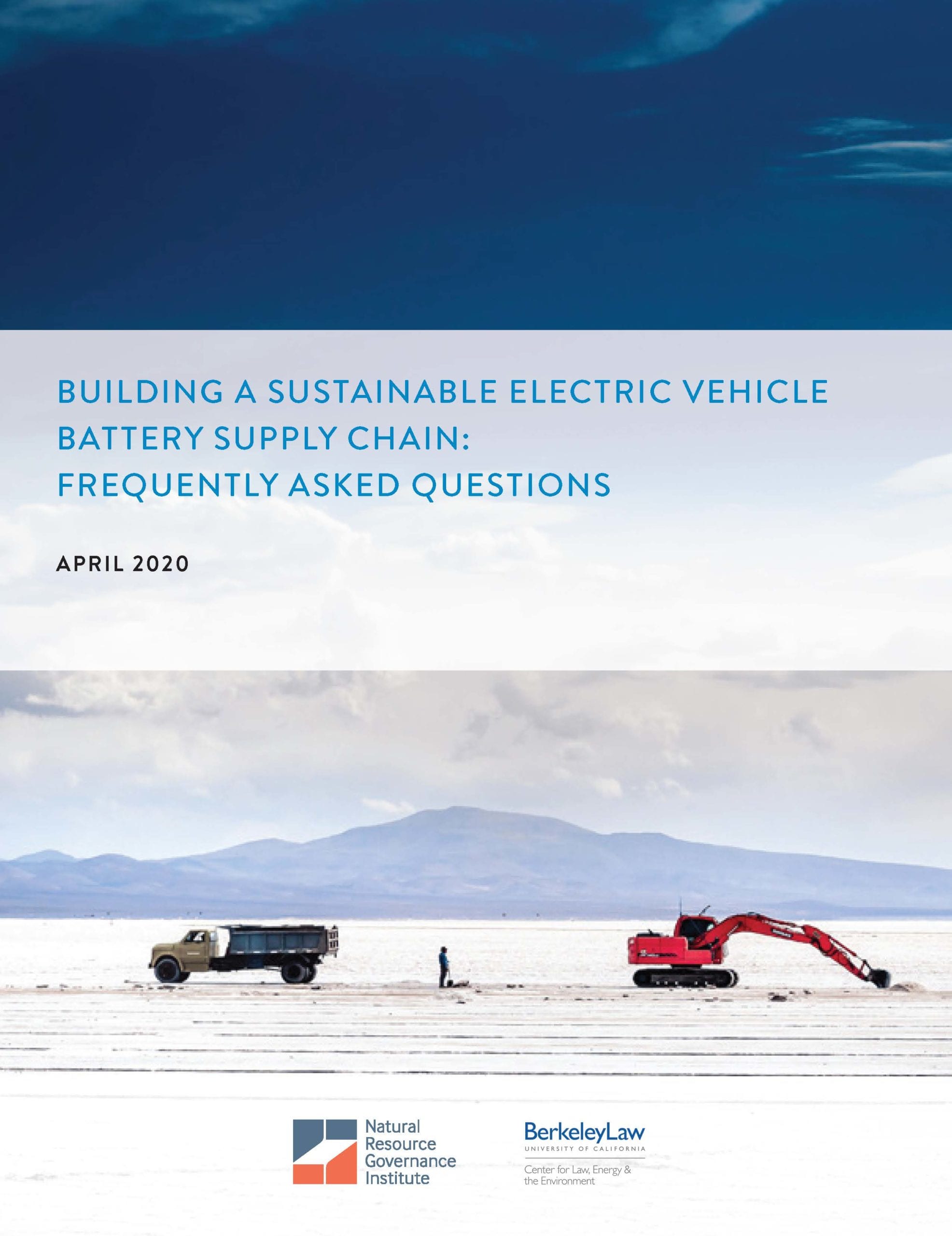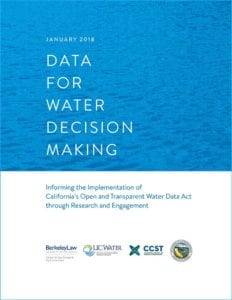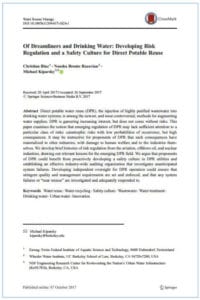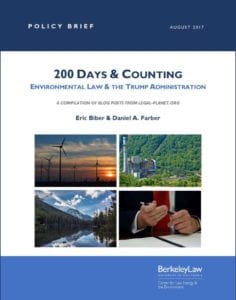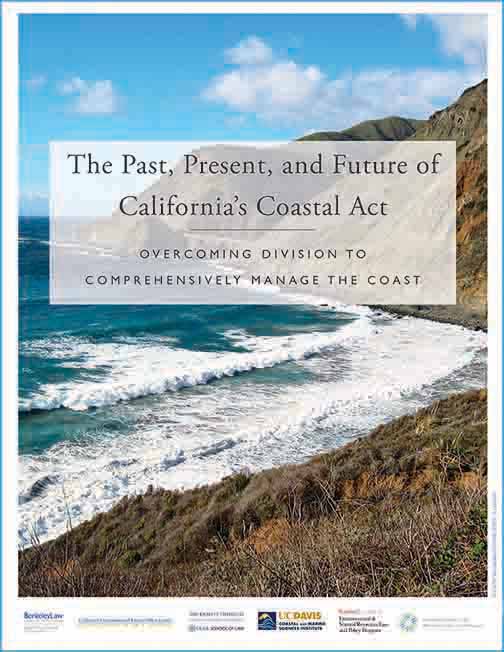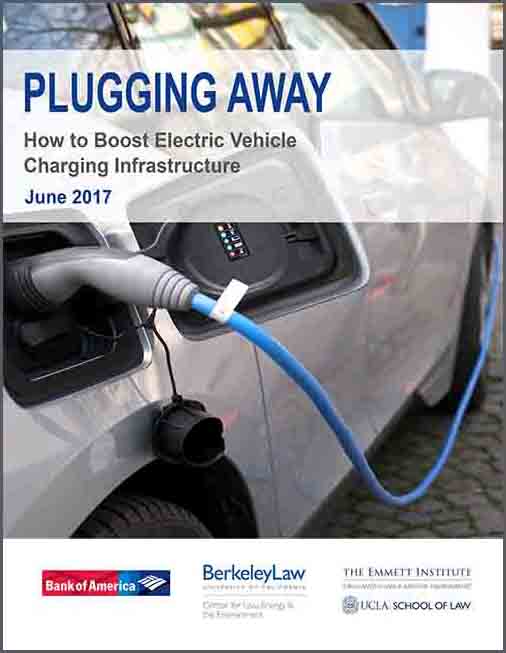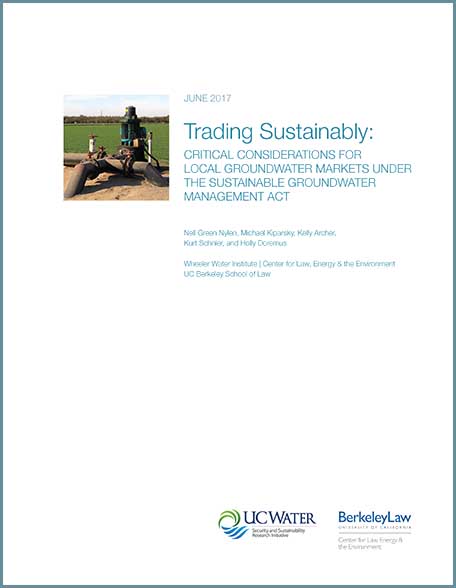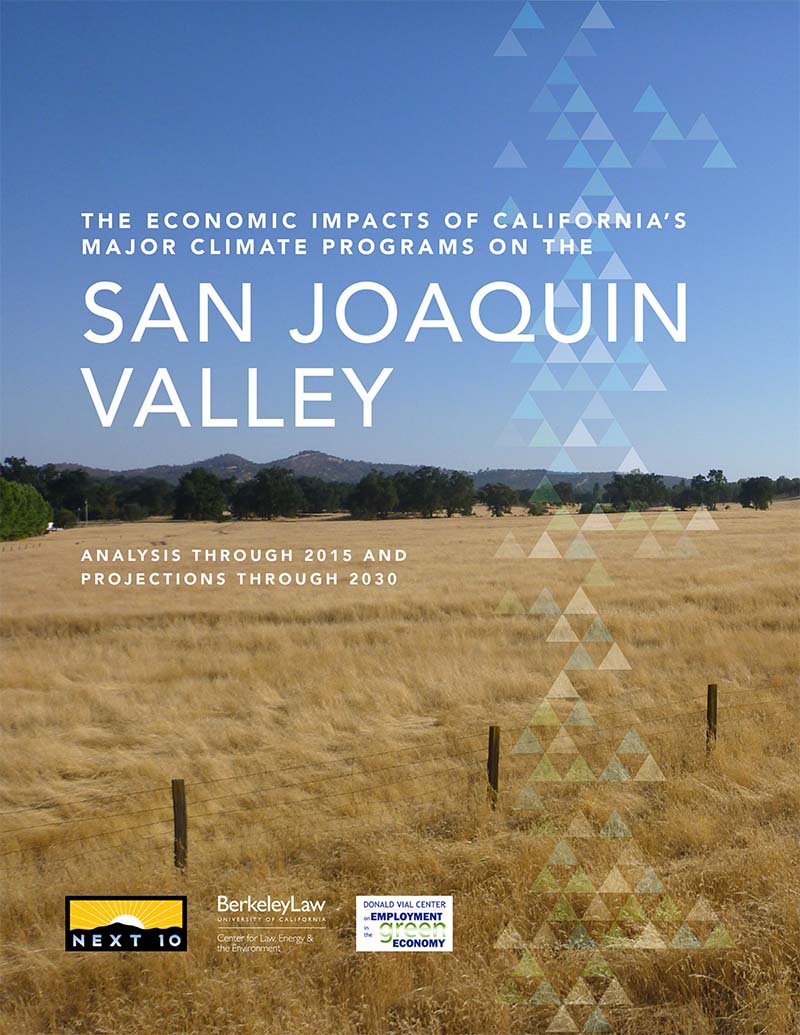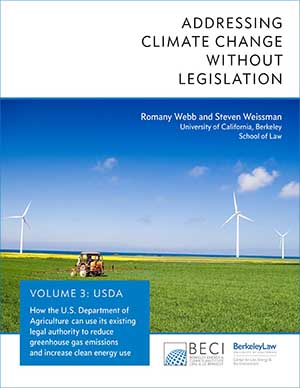—2024—
Offshore Wind & Community Benefits Agreements in California: CBA Examples
April 2024
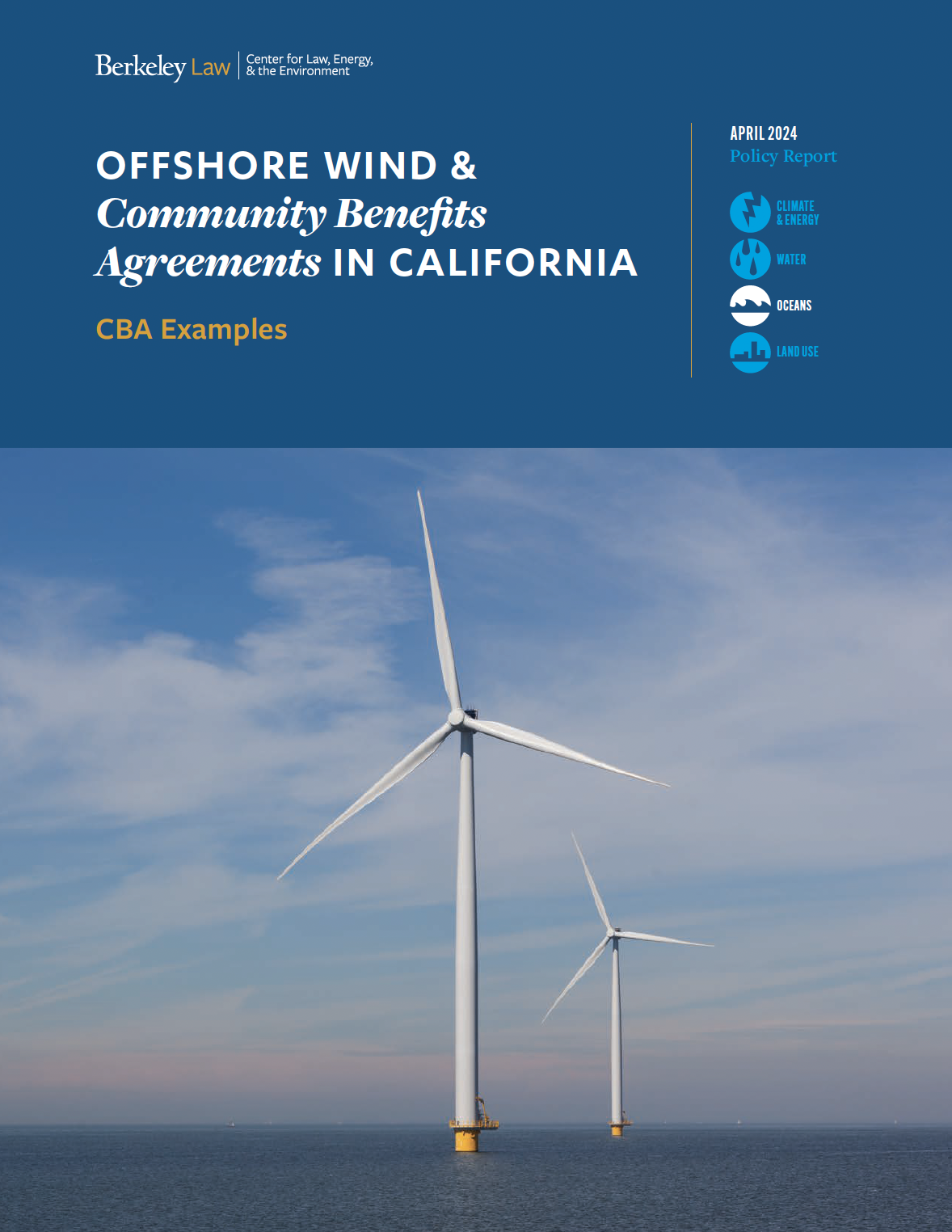 California’s goal of achieving 25 gigawatts of offshore wind electricity by 2045 will help the State meet its carbon neutrality target and will also have transformative effects on the State’s economy and communities. Community Benefits Agreements (CBAs) are tools that can enable local communities to have a voice in the development of new projects and ensure that the state’s transition to offshore wind creates sustainable, equitable economic opportunity, and local investment. CLEE’s report, Offshore Wind & Community Benefits Agreements in California: CBA Examples, highlights the community-oriented measures and CBAs in California’s existing offshore wind leases and presents select CBA examples and community benefits provisions from the real estate and manufacturing sectors, as well as from east coast and UK wind farm projects. These examples can provide important models and lessons for offshore wind development in California. The report also lifts up important considerations and elements—such as CBA structure, process and representation, and oversight and accountability—that can help ensure future California CBAs are rooted in impacted communities and reflect stakeholders’ values and needs.
California’s goal of achieving 25 gigawatts of offshore wind electricity by 2045 will help the State meet its carbon neutrality target and will also have transformative effects on the State’s economy and communities. Community Benefits Agreements (CBAs) are tools that can enable local communities to have a voice in the development of new projects and ensure that the state’s transition to offshore wind creates sustainable, equitable economic opportunity, and local investment. CLEE’s report, Offshore Wind & Community Benefits Agreements in California: CBA Examples, highlights the community-oriented measures and CBAs in California’s existing offshore wind leases and presents select CBA examples and community benefits provisions from the real estate and manufacturing sectors, as well as from east coast and UK wind farm projects. These examples can provide important models and lessons for offshore wind development in California. The report also lifts up important considerations and elements—such as CBA structure, process and representation, and oversight and accountability—that can help ensure future California CBAs are rooted in impacted communities and reflect stakeholders’ values and needs.
Watch our Lunch & Learn Webinar, “California Offshore Wind & Community Benefits Agreements: CBA Examples,” here.
Case Studies: City Public & Curbside Charging Strategies
March 2024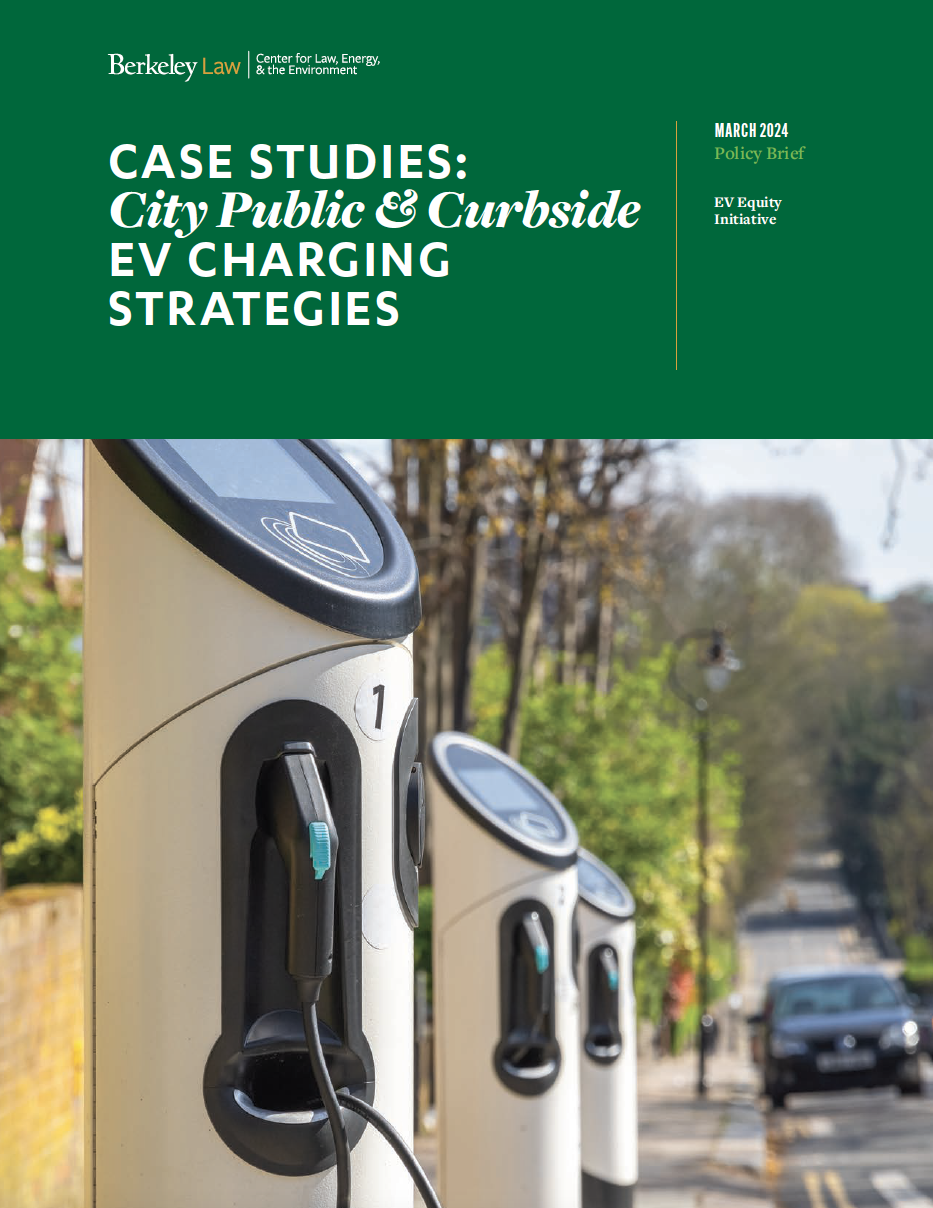
As California and other states transition to one hundred percent zero-emission new vehicle (ZEV) sales by 2035, local governments will play a crucial role in addressing inequities in the ZEV transition. Curbside and public right-of-way (PROW) locations are a key venue for city governments to lead electric vehicle (EV) infrastructure development and deliver a more equitable charging network for residents. Publicly accessible areas may provide particularly useful charging options for residents in underserved communities who are likely to lack access to charging in private driveways or garages, in multifamily dwelling parking lots, or at workplaces.
Our case study report, informed by interviews with city leaders and EV charging project directors, gathers insights from city programs that are leading efforts to expand charging infrastructure in the PROW. This policy brief is intended to guide local leaders as they plan and execute public EV charging infrastructure development with a focus on equitable investment.
California’s 2021 Year in Fire: Fire and Resilience Impacts Beyond Acres Burned
February 2024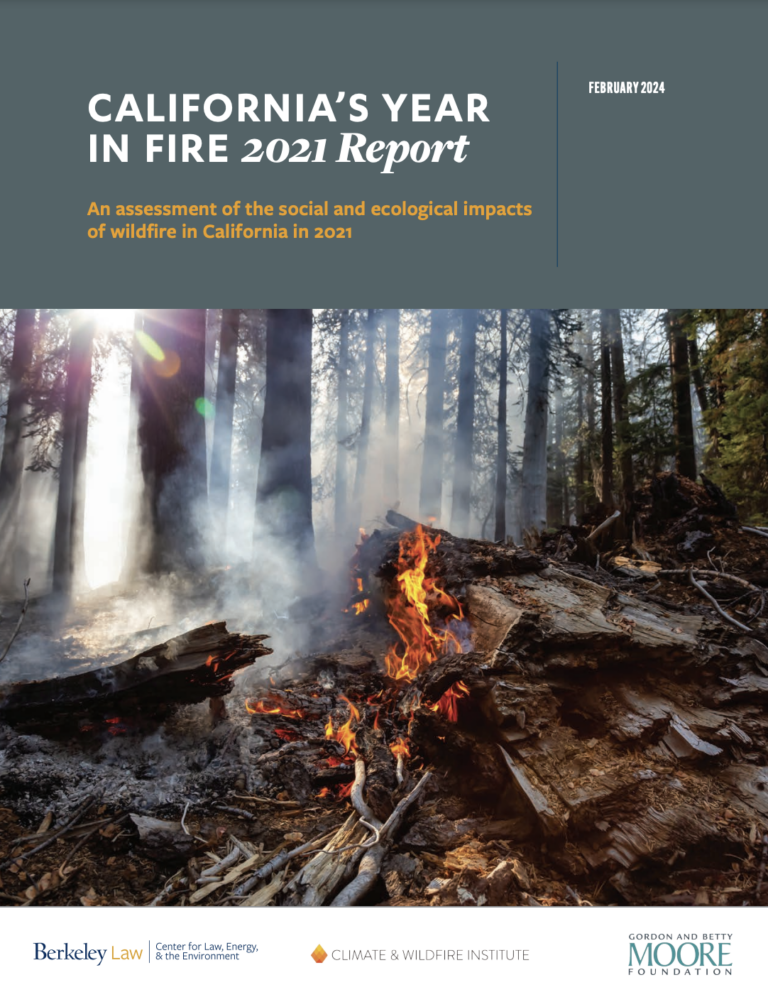
How are wildfires impacting California, and how are those impacts evolving? A wide variety of wildfire impacts are either not tracked or not reported, thereby limiting our ability to make informed decisions in wildfire mitigation and recovery efforts. And this truncated access to essential information and data has the potential to lead us to unsustainable solutions; for example, if we judge wildfire impacts by the number of acres burned each year and focus primarily on reducing that number, the rational response might be to bolster fire suppression. To do so, however, would ignore a wide range of other social and ecological impacts and the opportunity to improve overall ecological and community health and resilience.
The California’s Year in Fire project, in partnership with the Climate & Wildfire Institute and the Gordon and Betty Moore Foundation, advances a framework for a more complete picture of evolving impacts and consequences, and provides more robust data points to inform meaningful solutions.
January 2024
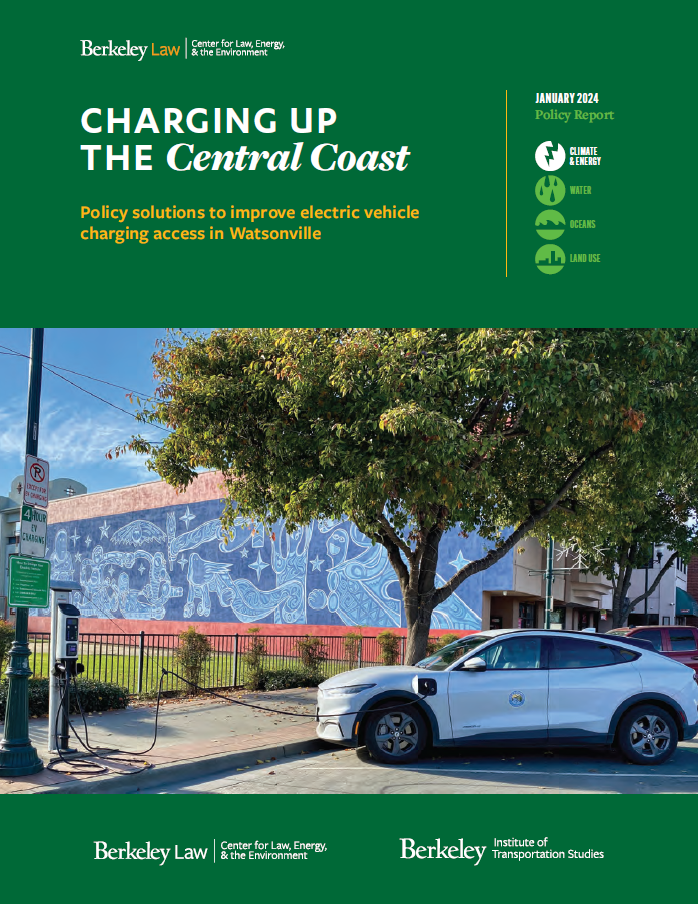
In pursuit of the state’s goal to end the sale of new internal combustion engine passenger vehicles by 2035, California leaders face a critical challenge in ensuring equitable access to zero-emission vehicles (ZEVs), particularly for lower- and moderate-income residents. A significant barrier to this transition is the limited access to electric vehicle (EV) charging stations, especially in communities with lower home ownership rates and inadequate grid infrastructure. To address these challenges and ensure more and equitably distributed chargers across California, state and local policymakers can learn lessons from representative communities and the practical challenges they face to installing EV chargers.
To further this objective, UC Berkeley School of Law’s Center for Law, Energy & the Environment (CLEE) partnered with Watsonville, a diverse city of 50,000 in Santa Cruz County’s agricultural heartland. Due to its location, demographics, and ambitious policy goals, Watsonville represents a potential model and case study for other cities around the state grappling with how to boost zero-emission vehicle charging infrastructure.
January 2024
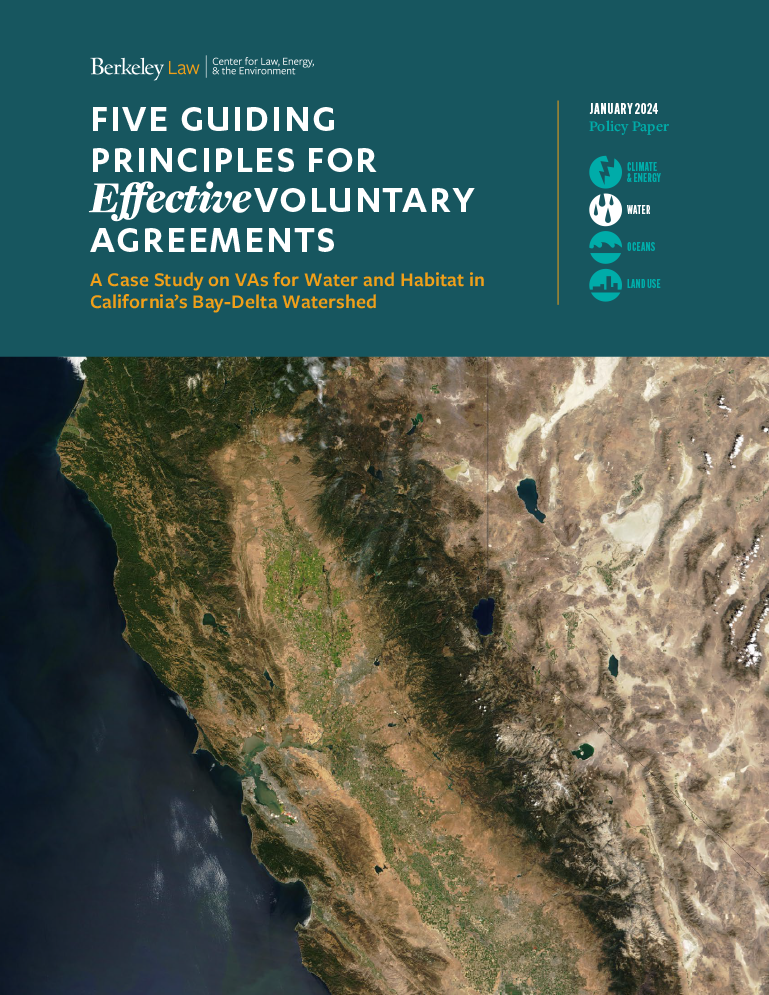
California has increasingly emphasized efforts to develop voluntary agreements (VAs) with water users as a means of achieving regulatory goals in certain watersheds. In theory, a VA can combine the protectiveness of a regulatory backstop with the creativity and flexibility of a negotiated deal to produce outcomes as good as, or better than, those achievable through strict application of regulatory requirements alone. However, reality has not always measured up to this ideal. This policy paper uses the Bay-Delta watershed as a case study to inform five principles to guide the appropriate use and evaluation of VAs.
—2023—
International Monetary Fund Reform
November 2023
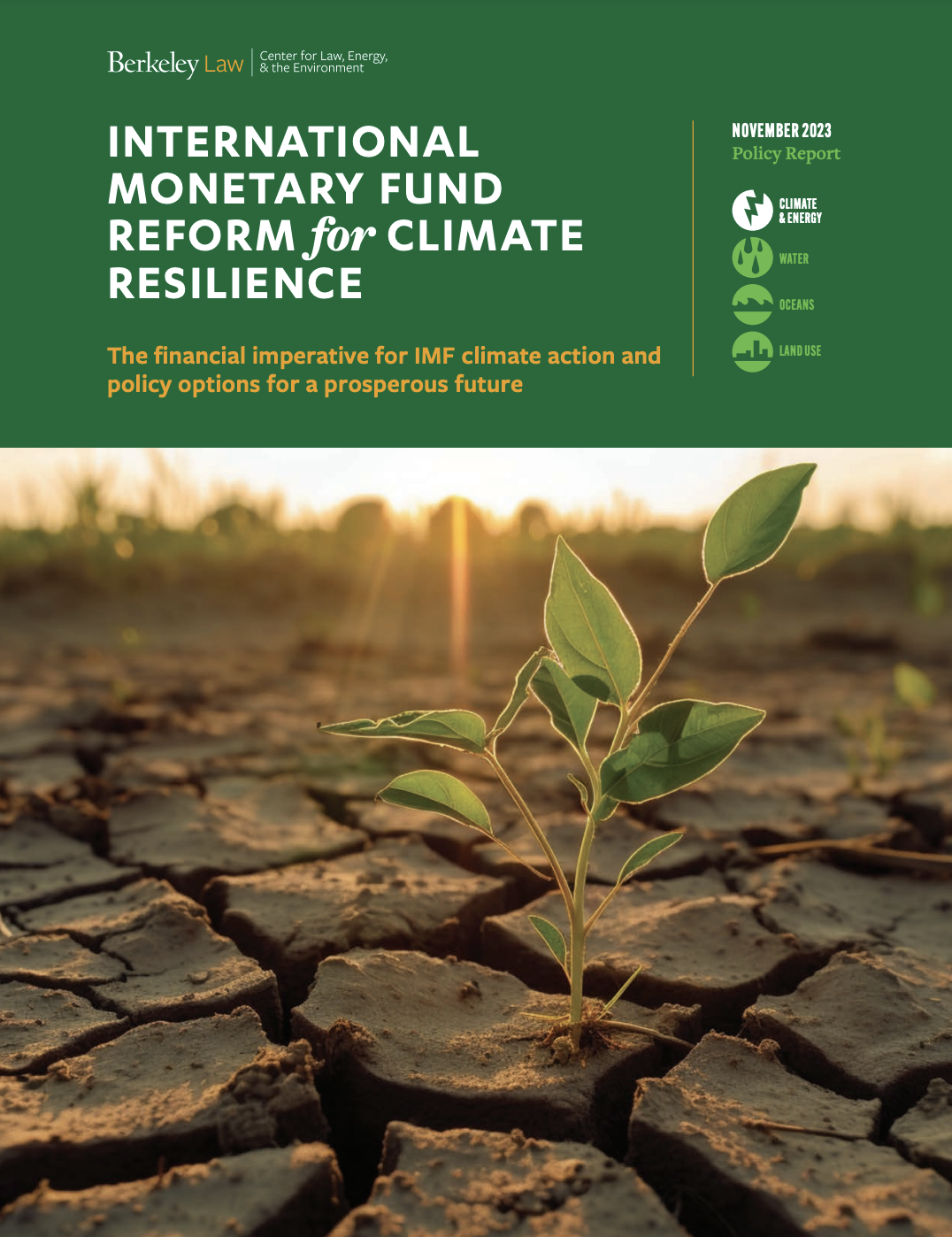
CLEE’s new report, “International Monetary Fund Reform for ClimateResilience,” describes how the International Monetary Fund (IMF), a multilateral institution charged with maintaining global economic stability and growth, can help steer the international community toward a more sustainable economic future.
The report analyzes how current IMF lending and advising practices inadvertently worsen the climate crisis and the associated financial risk, and it outlines a comprehensive approach to address these challenges and overcome political, financial, technical, and institutional barriers to action.
November 2023
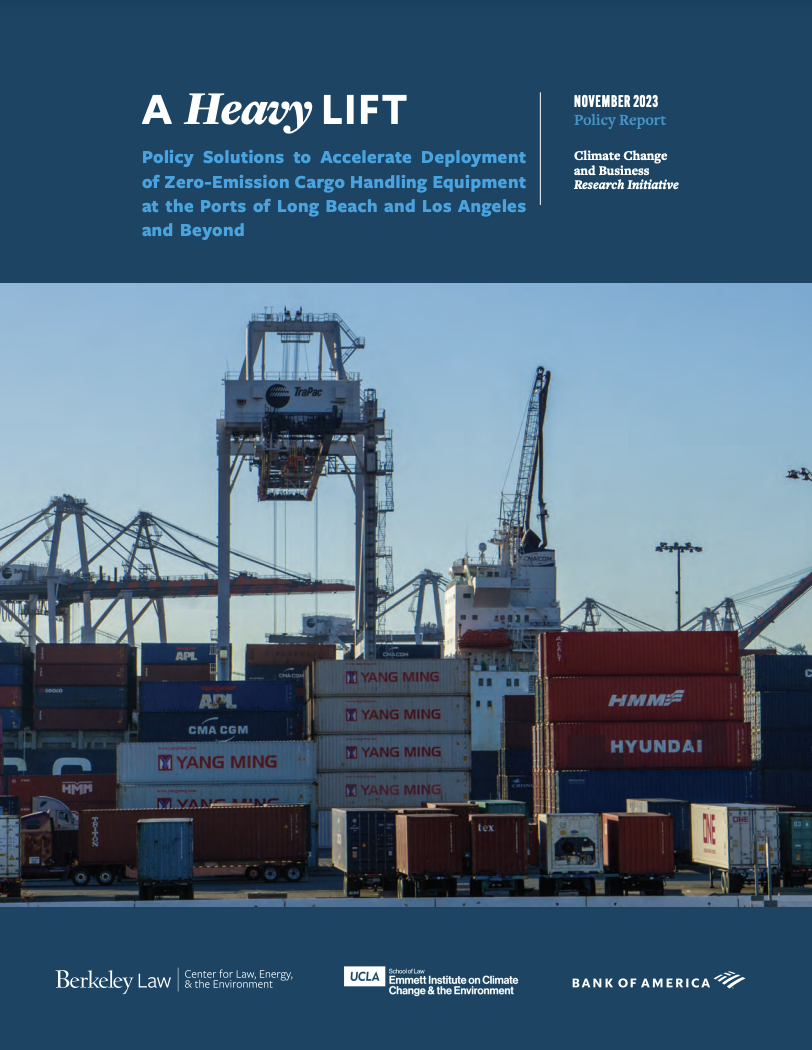 The movement of goods through the Ports of Los Angeles and Long Beach is a major source of air pollution and greenhouse gas emissions in the L.A. region. The South Coast Air Quality Management District has reported that the Ports are “the single largest fixed source of air pollution in Southern California.” And neighboring communities—predominantly low-income communities of color—bear the brunt of this pollution, suffering from smog and toxic air pollution from port equipment.
The movement of goods through the Ports of Los Angeles and Long Beach is a major source of air pollution and greenhouse gas emissions in the L.A. region. The South Coast Air Quality Management District has reported that the Ports are “the single largest fixed source of air pollution in Southern California.” And neighboring communities—predominantly low-income communities of color—bear the brunt of this pollution, suffering from smog and toxic air pollution from port equipment.
This new report surveys the biggest obstacles to speedy electrification, including inadequate grid and charging infrastructure, evolving zero-emission technology for cargo handling equipment, and fear among communities and workers of job loss and of increased emissions from expanded port activities. The report also presents policy solutions to get around these obstacles.
Getting to Implementation: The Status of Local Climate Action in California
November 2023
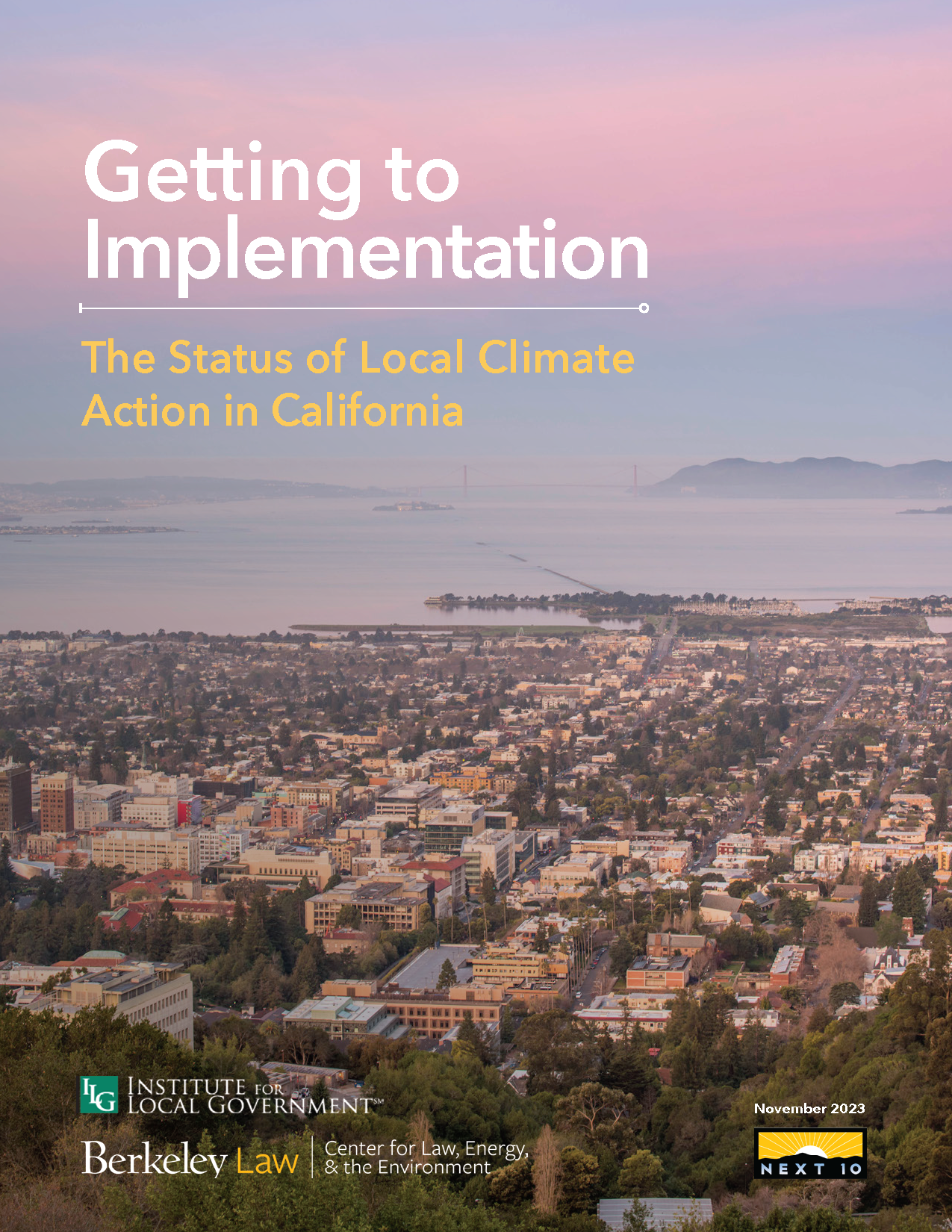
California’s local governments, which include cities, counties, and special districts, play a pivotal role in shaping the State’s transition to a decarbonized economy. However, jurisdictions across the state have varying levels of success in implementing climate policies and programs. CLEE’s new report, Getting to Implementation: The Status of Local Climate Action in California, summarizes the results of a statewide survey on local governments’ efforts to address climate change, conducted in partnership with the Institute for Local Government(opens in a new tab) (ILG).
The California Local Government Climate Activity Survey, which was open from April to May 2023, gathered information on existing efforts to address climate change, opportunities for strategic climate policy and planning, and barriers to the timely implementation of climate solutions. The survey was designed to help assess the current status of climate action planning efforts and policy implementation, identify opportunities and barriers to move from planning to implementation, and increase understanding of resource constraints, barriers, and opportunities to advance action across a range of policy areas.
The report authors want to thank Next 10 for their support and partnership on this project.
October 2023
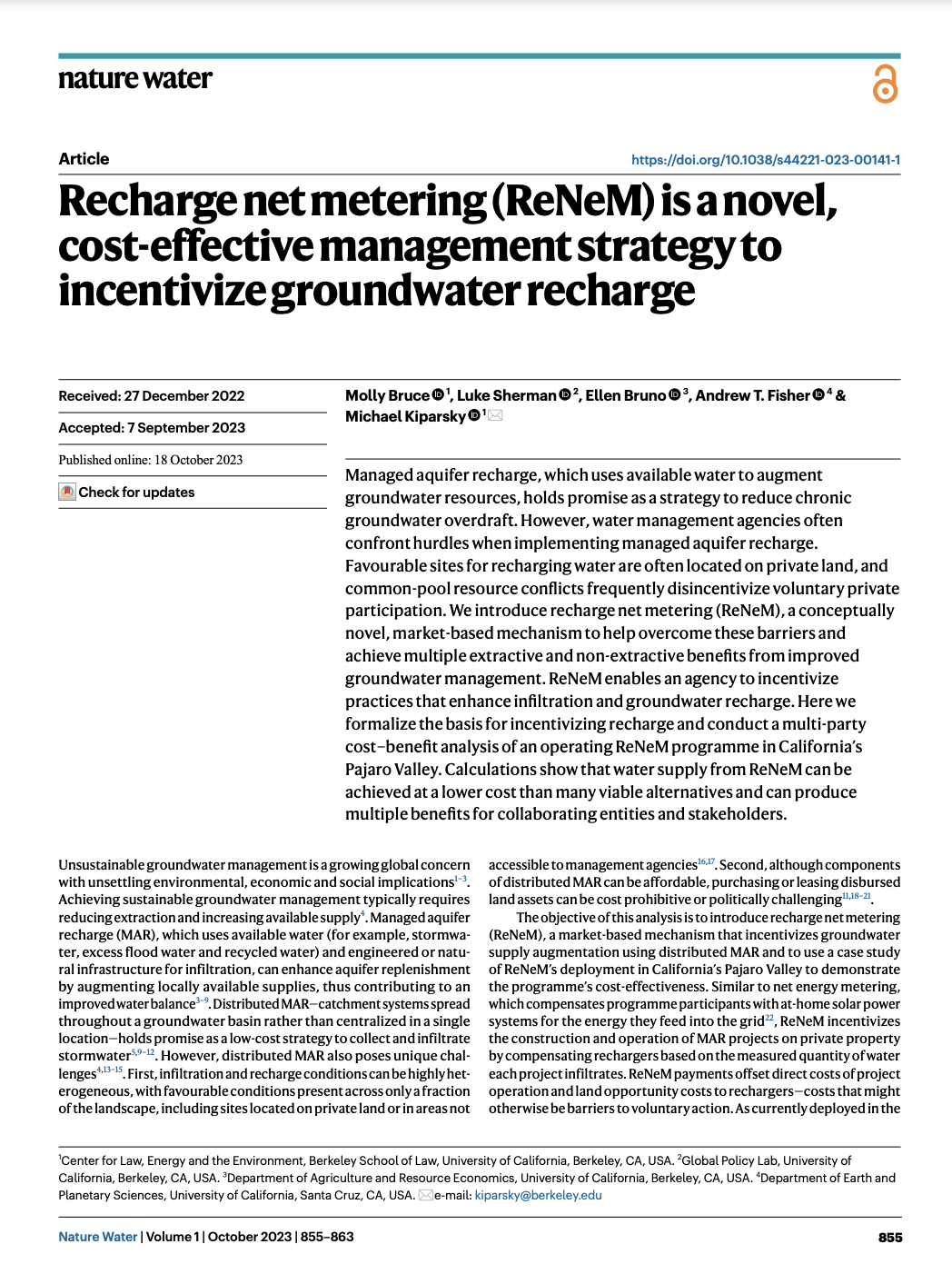
Groundwater basins are mismanaged throughout California and the world, with dire economic, social, and environmental consequences. Managed aquifer recharge is emerging as an important method for bringing groundwater budgets into balance. However, although the best sites for recharge are often located on private property, property owners typically are not incentivized to invest in groundwater projects for the benefit of the basin. To address this gap, our team is supporting the development of recharge net metering (ReNeM), a new incentive structure that compensates private entities for operating groundwater recharge projects on their land.
CLEE led a team of co-authors from UC Berkeley and UC Santa Cruz to publish an economic analysis of ReNeM in Nature Water, titled “Recharge net metering (ReNeM) is a novel, cost-effective management strategy to incentivize groundwater recharge.” The article showcases ReNeM’s affordability and cooperative promise; it provides water managers with a method for understanding ReNeM’s financial implications; and it enables expansion of this new approach to groundwater management elsewhere.
Comment Letter re: U.S. Department of Energy Responsible Carbon Management Initiative
September 2023
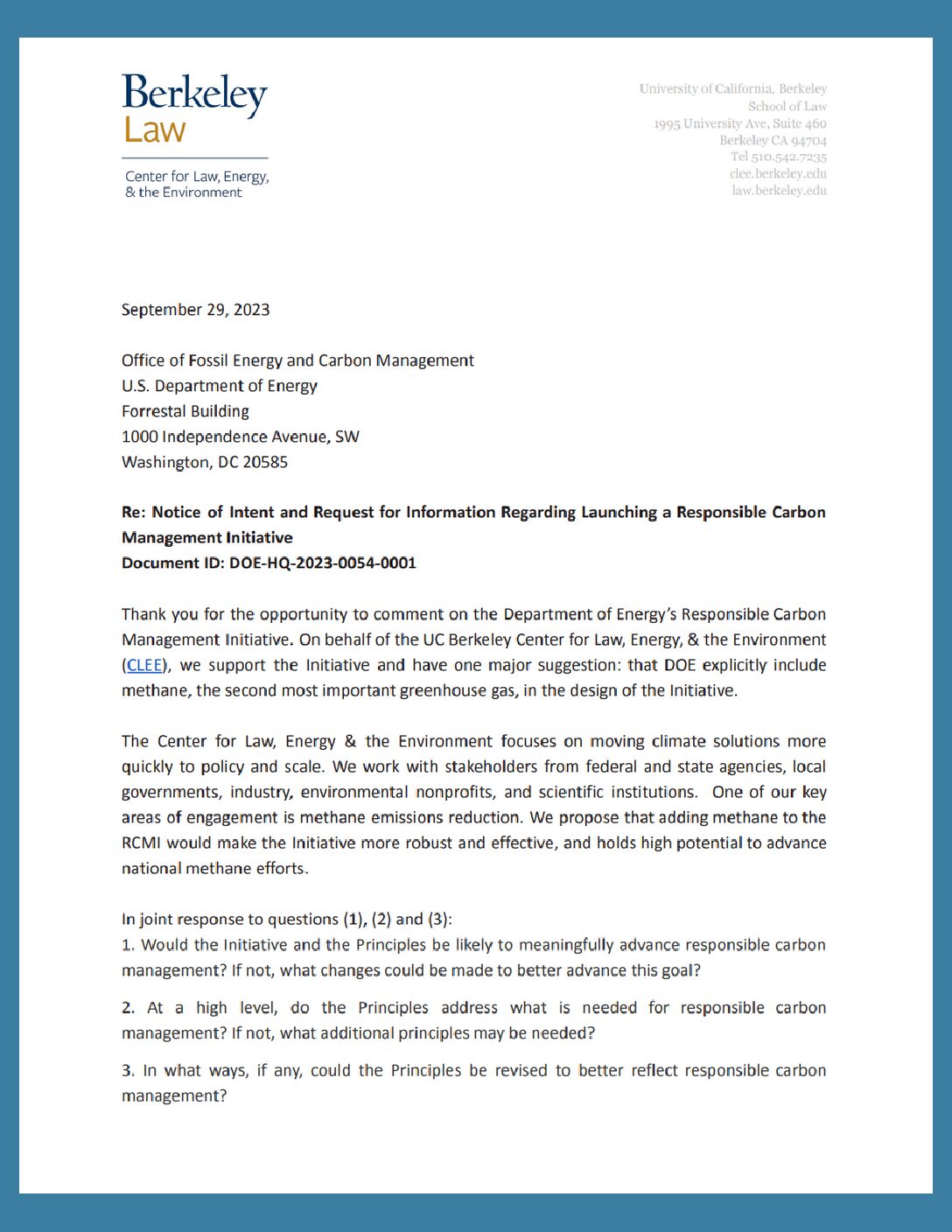
On August 11, 2023, the U.S. Department of Energy (DOE) announced the launch of the Responsible Carbon Management Initiative, outlining principles for industry developers to abide by, providing framework for the prioritization of “safety, environmental stewardship, accountability, community engagement, and societal benefits in carbon management projects.” (DOE) In an official comment on the initiative responding to their “Notice of Intent and Request for Information Regarding Launching a Responsible Carbon Management Initiative,” Ken Alex, Director of Project Climate, along with CLEE Research Fellows Shivani Shukla and Gil Damon, urge the DOE to consider methane in the design of the Initiative.
September 2023
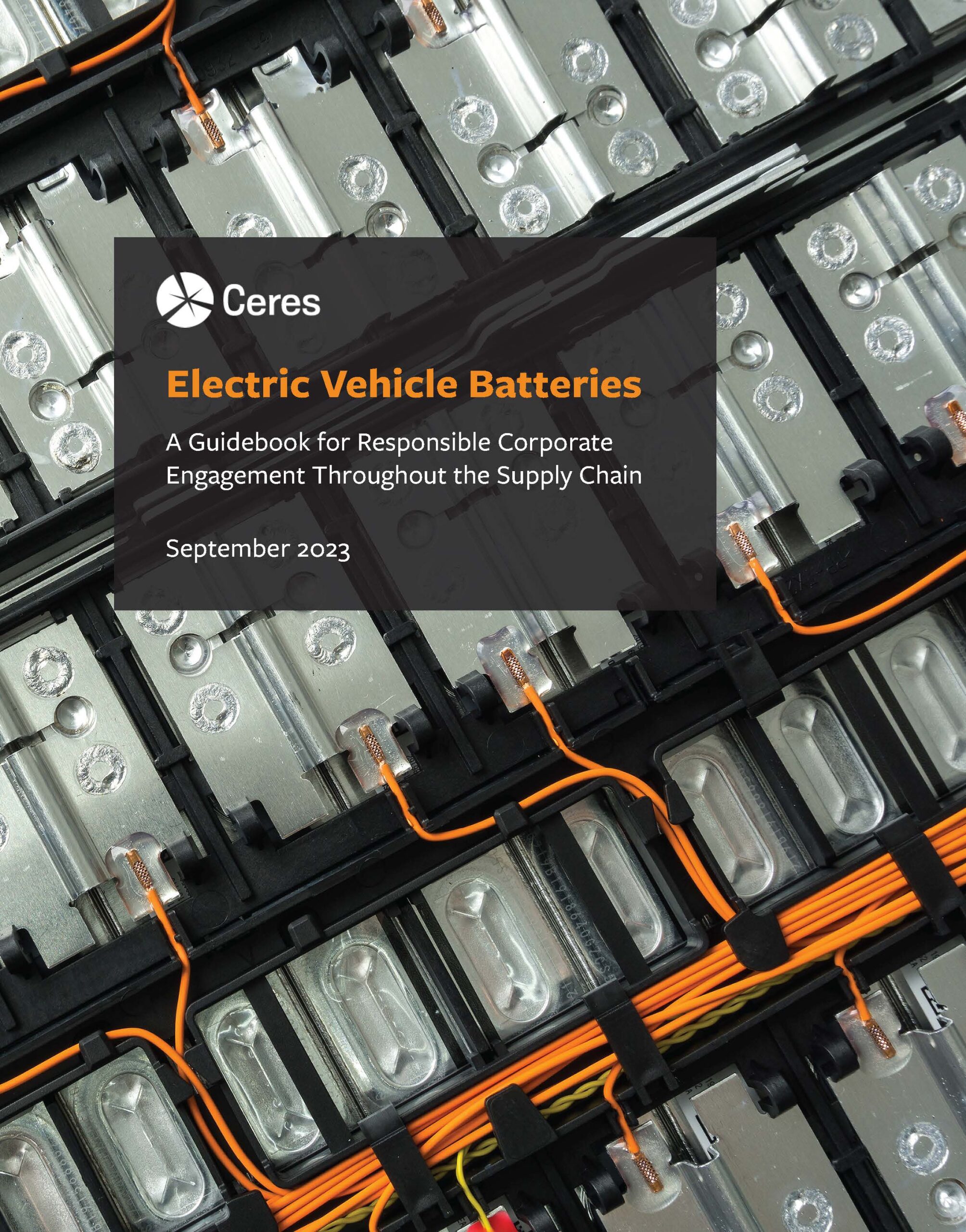 The Corporate Electric Vehicle Alliance (opens in a new tab)(CEVA), led by Ceres, is a collaborative group of companies focused on accelerating the transition to EVs. Our new report for CEVA, in partnership with Ceres, offers recommendations for major corporate EV fleet purchasers for how they can help ensure EV supply chain sustainability. It summarizes the market status of the batteries, U.S. policy context, and key initiatives for improvement.
The Corporate Electric Vehicle Alliance (opens in a new tab)(CEVA), led by Ceres, is a collaborative group of companies focused on accelerating the transition to EVs. Our new report for CEVA, in partnership with Ceres, offers recommendations for major corporate EV fleet purchasers for how they can help ensure EV supply chain sustainability. It summarizes the market status of the batteries, U.S. policy context, and key initiatives for improvement.
Offshore Wind & Community Benefits Agreements in California: An Introduction
June 2023
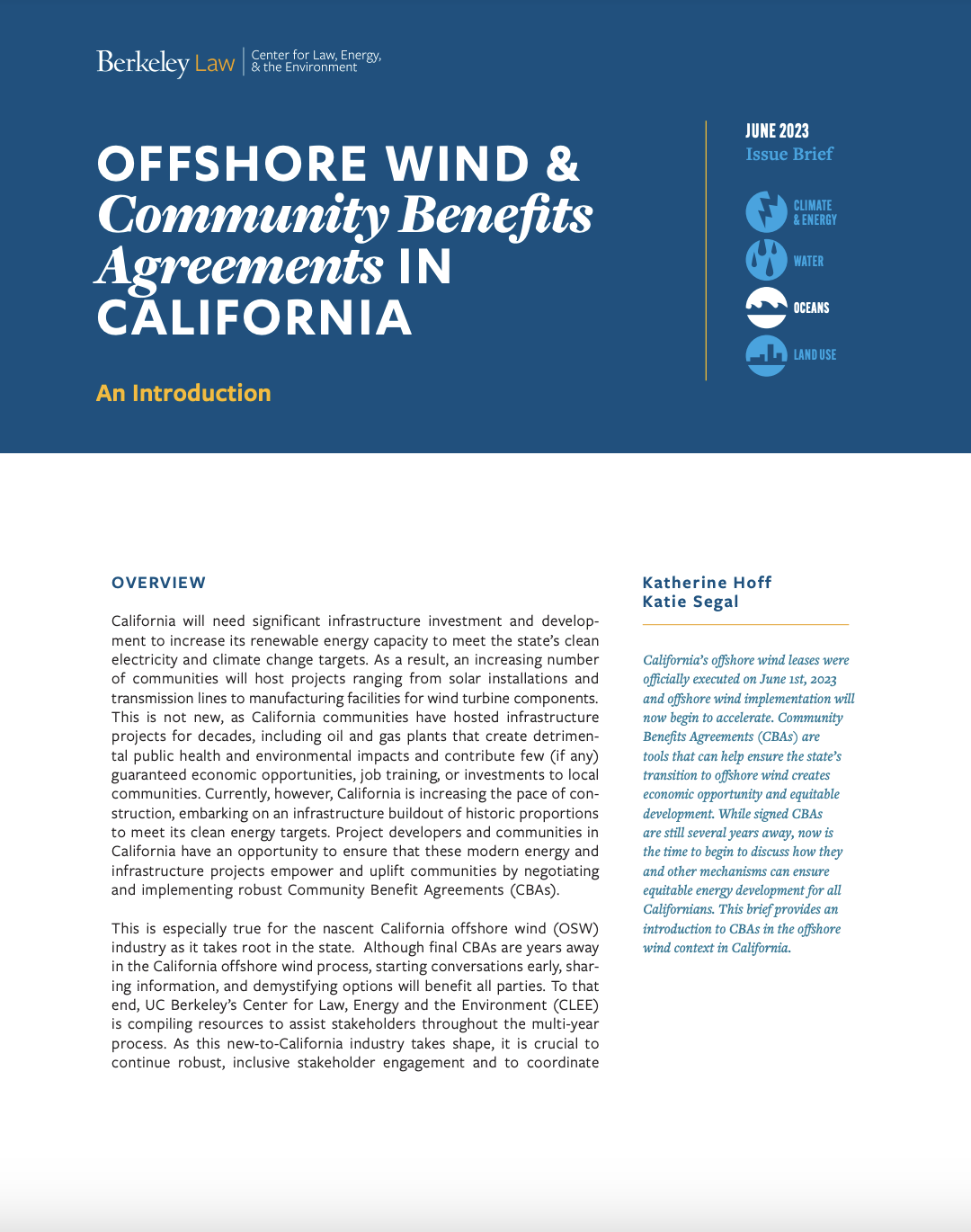 Developers and communities in California have an opportunity to ensure that offshore wind energy and infrastructure projects empower and uplift communities by negotiating and implementing robust Community Benefit Agreements (CBAs). A Community Benefits Agreement, or CBA, is a legally binding, enforceable contract signed by project developers and community groups or coalitions of groups. CBAs can help create space for residents to have a voice in the future of their communities and can expand economic opportunity and make development more equitable. CBAs can also increase transparency and enforceability of outcomes, boost coalition building, and clarify outcomes. CLEE’s Issue Brief, Offshore Wind & Community Benefits Agreements in California: An Introduction, examines Community Benefits Agreements and explores how they might be relevant in the California offshore wind context.
Developers and communities in California have an opportunity to ensure that offshore wind energy and infrastructure projects empower and uplift communities by negotiating and implementing robust Community Benefit Agreements (CBAs). A Community Benefits Agreement, or CBA, is a legally binding, enforceable contract signed by project developers and community groups or coalitions of groups. CBAs can help create space for residents to have a voice in the future of their communities and can expand economic opportunity and make development more equitable. CBAs can also increase transparency and enforceability of outcomes, boost coalition building, and clarify outcomes. CLEE’s Issue Brief, Offshore Wind & Community Benefits Agreements in California: An Introduction, examines Community Benefits Agreements and explores how they might be relevant in the California offshore wind context.
June 2023
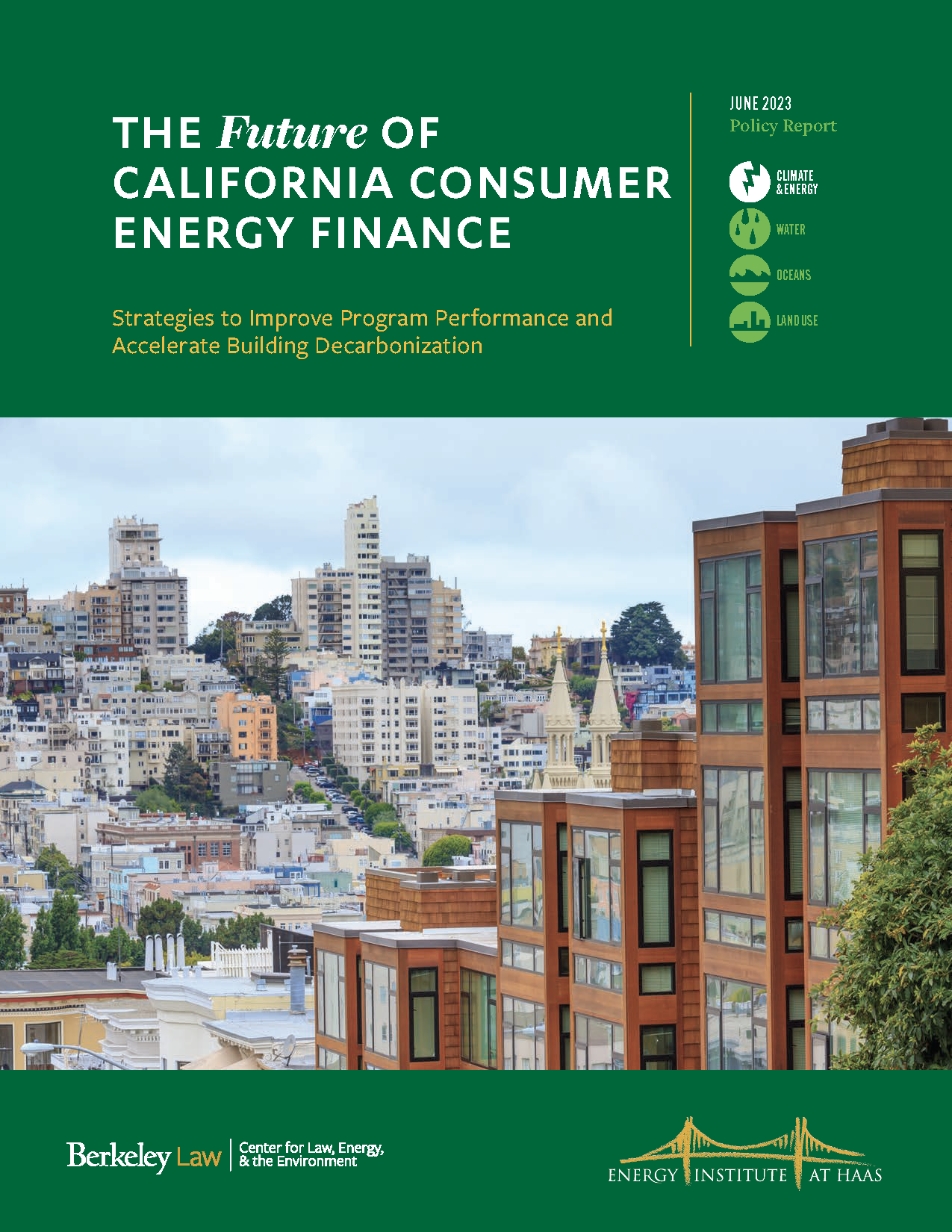 Among all the sectors California leaders need to address to achieve statewide carbon neutrality by 2045(opens in a new tab), existing buildings (which are responsible for over 10 percent of state emissions)—in particular existing residential structures—are among the most difficult to decarbonize. The state has established a range of different programs to address the problem, including a number of appliance-specific and whole-building retrofit subsidy programs, but public funds are inadequate to cover all the needed upgrades. Our report, The Future of California Energy Finance, a collaboration between CLEE and the Energy Institute at Haas(opens in a new tab), considers the future of California energy finance and lays out strategies to supplement and improve the reach of California’s consumer financing programs.
Among all the sectors California leaders need to address to achieve statewide carbon neutrality by 2045(opens in a new tab), existing buildings (which are responsible for over 10 percent of state emissions)—in particular existing residential structures—are among the most difficult to decarbonize. The state has established a range of different programs to address the problem, including a number of appliance-specific and whole-building retrofit subsidy programs, but public funds are inadequate to cover all the needed upgrades. Our report, The Future of California Energy Finance, a collaboration between CLEE and the Energy Institute at Haas(opens in a new tab), considers the future of California energy finance and lays out strategies to supplement and improve the reach of California’s consumer financing programs.
April 2023
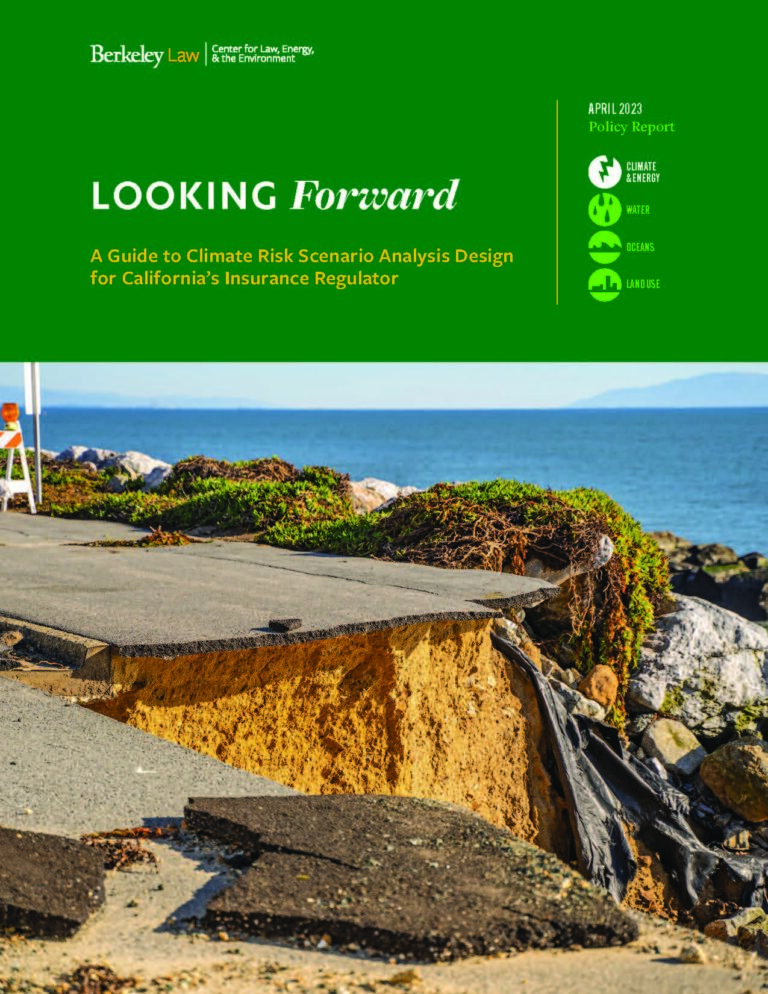
California’s insurance industry faces significant risks from climate change, including both the transition risks facing all financial institutions as the global economy shifts toward decarbonization and the singular combination of physical risks—wildfire, drought, coastal hazards, extreme heat—that threaten California’s communities and businesses.
CLEE’s report, Looking Forward, explores the field of climate risk scenario analysis—a key instrument to assess financial risk in projected future scenarios—and makes recommendations for the California Department of Insurance to design scenario analysis exercises and engage California insurance companies in forward-looking risk assessment. The report analyzes precedent and decision-making criteria for structural elements such as “top-down” (regulator-led) versus “bottom-up” (insurer-led) exercises, scope of risks assessed, time horizons, strategic partnerships, and more.
Managing Water Scarcity: A Framework for Fair and Effective Water Right Curtailment in California
April 2023
When there is not enough water to satisfy all demands, water must be allocated among competing human and environmental uses. California’s State Water Resources Control Board (SWRCB) is responsible for ensuring that surface water is diverted and used in accordance with state and federal legal requirements and policy priorities. Our new report, Managing Water Scarcity, explains how to bring the SWRCB’s capabilities in line with California’s needs. The report describes the legal context for water right curtailments in California, summarizes the history of curtailment practices in the state, and recommends actions California can take to build an effective framework for curtailment. The SWRCB can implement some of the actions we recommend on its own. But we also recommend swift and decisive legislative action to clarify and enhance the agency’s tools and authority.
March 2023
CLEE’s March 2023 whitepaper, Stakeholder Engagement in California Offshore Wind, summarizes key themes heard throughout the 2022 stakeholder engagement series about the general planning process, equity and environmental justice priorities, environmental considerations, tribal government input, developer perspectives, and fishing industry input. Examples include requests for greater inclusion and engagement with stakeholders, better transparency and accessibility of data sources that inform decision making, additional studies and data collection, prioritization of community and economic benefits, development of long-term workforce training opportunities, expansion of infrastructure development plans (e.g., transmission), and clarity on permitting requirements, among others.
—2022—
December 2022
Supercharging Electrolyzers: Boosting Zero-Emission Hydrogen Production and Deployment in California
California to decarbonize its electricity grid
and achieve carbon neutrality. Yet today zero-emission hydrogen is roughly triple the cost of traditional fossil-based hydrogen production. Electrolyzer project developers also face hurdles around producing, storing, transporting, and facilitating cost-effective purchases of their zero-emission hydrogen.
November 2022
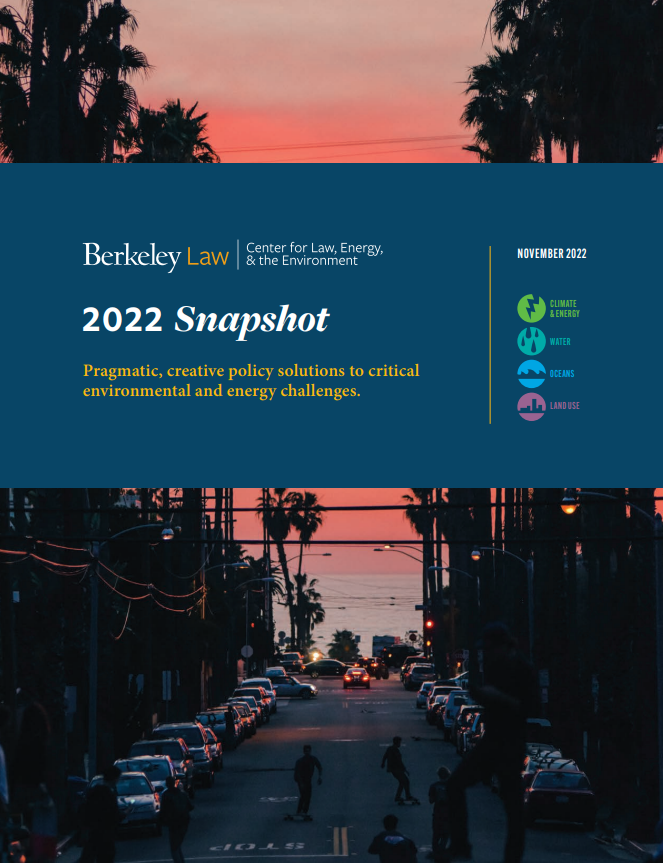
Significant policy actions in the past year create a new context for CLEE’s work and provide hope that systemic transformation is possible. At a federal level, the passage of the Infrastructure Investment and Jobs Act and the Inflation Reduction Act provide historic levels of investment for climate projects. In California, California Governor Newsom signed a suite of bills this fall that further solidify the state’s position as a leader in the fight against climate change. The breakthrough agreement on a new “Loss and Damage” Fund at COP27 breathed new life into the hope of finding equitable solutions to the climate crisis on the global level. These policy changes have provided new avenues for the Center to engage with policymakers and other stakeholders and have helped to increase the relevance and applicability of our work.
The Berkeley Law students provide incredible hope and confidence that our future is in good hands. These bright and motivated young people are the next generation of leaders in the field of environmental law and policy, and we are proud to support and guide them as they develop the skills and knowledge, they need to make a real difference in the world.
We are grateful for the continued support of our partners, donors, and other stakeholders, and welcome their continued engagement as we work together to build a more sustainable and equitable future for all. Thank you for your interest in our work and for your commitment to addressing the urgent environmental crises of our time.
We invite you to read the full Snapshot report to learn more about CLEE and the ways in which we have been working to promote collaborative, interdisciplinary solutions to climate and environmental challenges over the past year.
November 2022
Funding San Francisco Climate Action: Strategies for Revenue, Implementation, and Equity
In December 2021, San Francisco issued a Climate Action Plan (CAP) that envisions an ambitious and equitable climate future for the city. The CAP details emissions reduction strategies across six categories: energy supply, building decarbonization, transportation and land use, housing, green infrastructure, and waste reduction. The CAP puts forth 159 actions to achieve net-zero emissions citywide by 2040 while rooting decisions in racial and social equity, economic opportunity, public health, and community resilience.
CLEE’s report, Funding San Francisco Climate Action, analyzes funding and financing strategies to generate sufficient revenue for San Francisco’s CAP while advancing equity and ensuring smart implementation.
Drawing on over 50 interviews and two expert workshops with climate finance and policy experts, City leaders, and community stakeholders to understand priorities and best-fit strategies, the report recommends a group of immediate- and medium-term revenue generation mechanisms, alongside a number of priorities for implementing the CAP (such as city staffing and coordination) and ensuring equity (including oversight councils and impact assessments).
October 2022 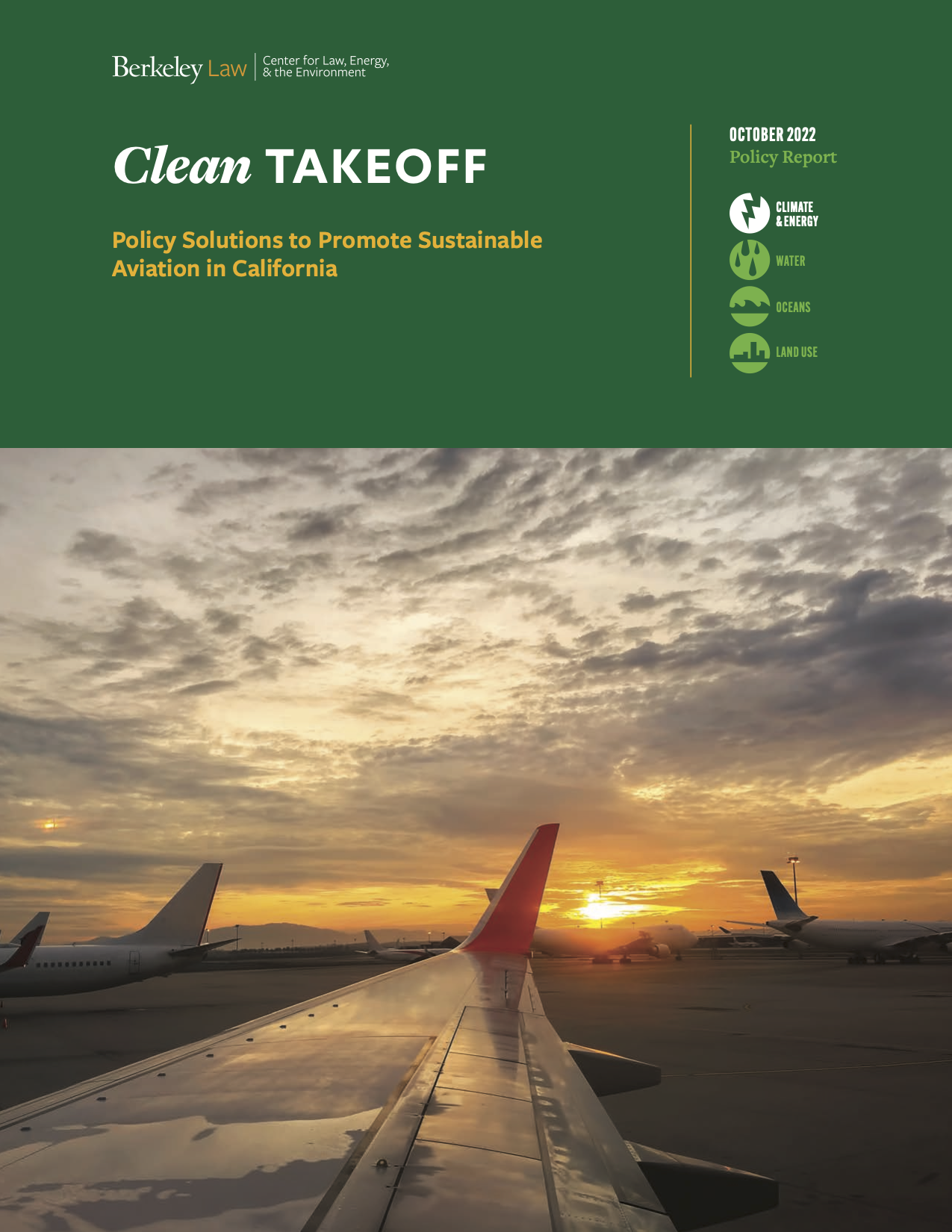
Clean Takeoff: Policy Solutions to Promote Sustainable Aviation in California
What actions can California policy makers take to help decarbonize the state aviation sector? CLEE’s new report, Clean Takeoff: Policy Solutions to Promote Sustainable Aviation in California, describes opportunities to advance sustainable aviation in California.
Airplane travel is responsible for more than 2 percent of global carbon dioxide (CO₂) emissions, with non-CO₂ emissions raising the total climate impact further. While no existing zero-emission technologies can power all flights today, sustainable aviation fuel represents the most promising immediate solution to reduce emissions from aviation and will remain key to decarbonizing long-haul aviation, even in 2050.
September 2022
Ahead of the Herd: Policy Solutions to Accelerate Livestock Methane Emissions Reduction in California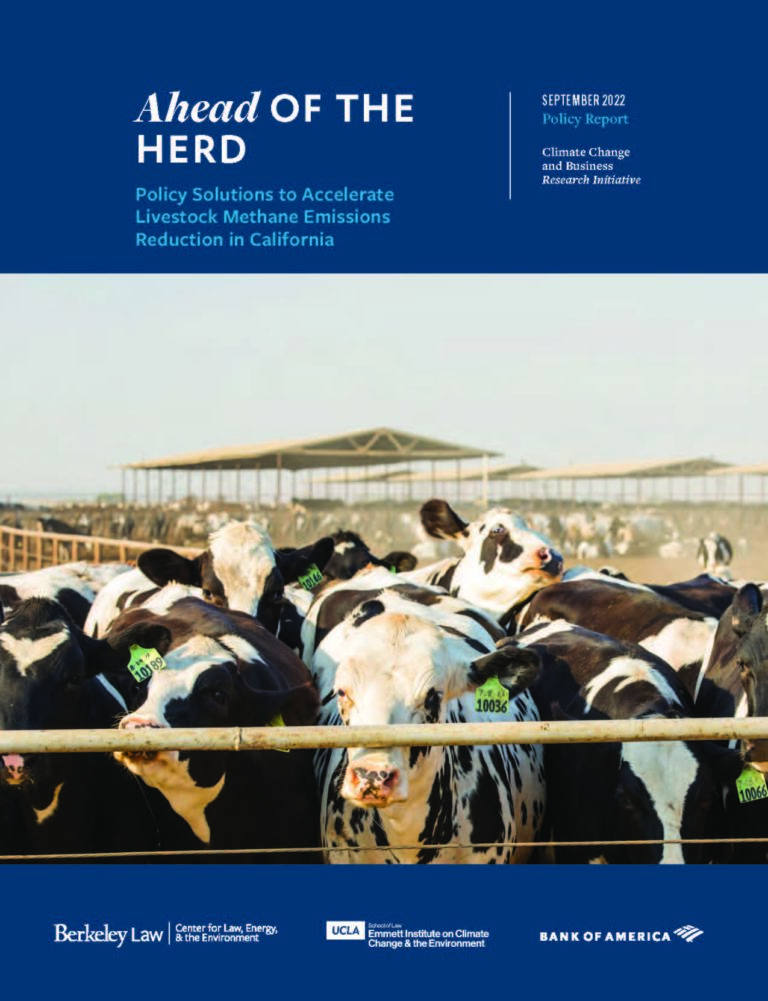
- Creating an interagency one-stop shop for greenhouse gas, quality, water quality, and other data reporting and technical assistance;
- Updating the Low-Carbon Fuel Standard to better assess life-cycle impacts and additionality of digester projects and support environmental health protections while increasing certainty for operators;
- Accelerating approval of and increasing financial support for new enteric emission reduction strategies.
August 2022
Implementing SB 743: Design Considerations for Vehicle Miles Traveled Mitigation Bank and Exchange Programs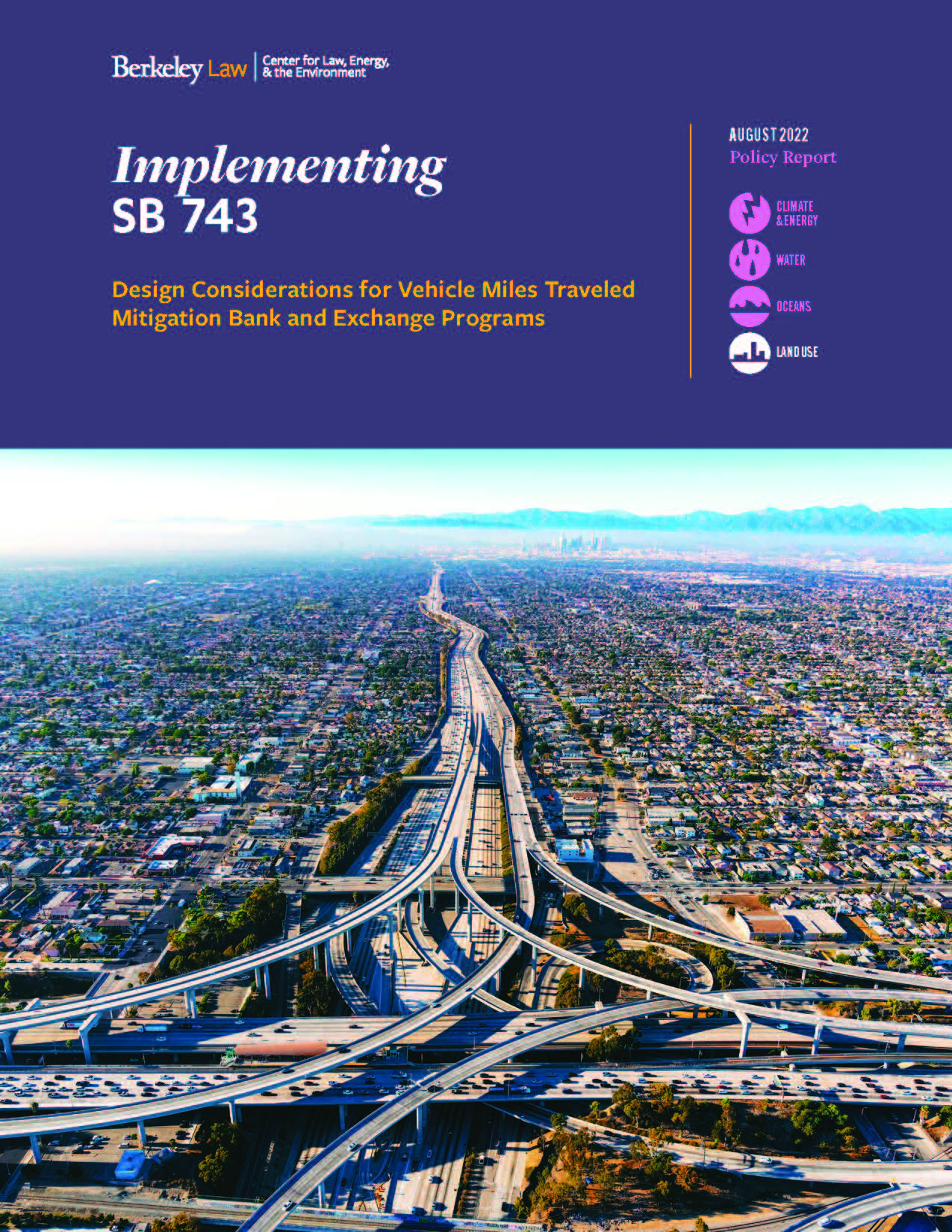
The California Environmental Quality Act requires government agencies and developers to mitigate the environmental impacts of new discretionary projects, including impacts to transportation. Under new state law and guidelines, many agencies are using VMT, which focuses on total vehicle trip-miles generated by a new project regardless of where they occur or how much traffic they cause, as the new measurement of impact. Mitigating VMT impacts of new projects creates the opportunity—and potentially the need—to conduct mitigation at locations other than the development site. To carry it out, CLEE and others have proposed “bank” and “exchange” programs to manage these capacities. Our new report, Implementing SB 743, advances these proposals with a set of recommendations for state agencies like Caltrans and local governments to develop bank and exchange programs that build on their existing environmental mitigation efforts.
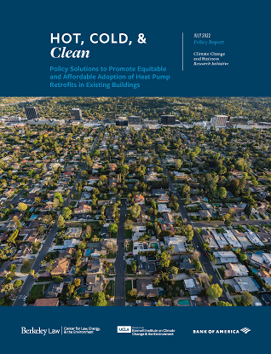
July 2022
Hot, Cold & Clean: Policy Solutions to Promote Equitable and Affordable Adoption of Heat Pump Retrofits in Existing Buildings
California’s residential and commercial building sector accounts for nearly a quarter of the state’s greenhouse gas emissions, with combustion of fuel for heating and cooling buildings generating more than 10 percent of state emissions. To achieve state goals of 40 percent greenhouse gas emission reduction (below 1990 levels) by 2030 and carbon neutrality by 2045, California must significantly reduce emissions from the built environment.
As the state moves toward all-electric buildings, replacing older gas-powered furnaces and air conditioning units with heat pumps can increase efficiency, comfort and resiliency. Heat pumps are a highly efficient technology that provides space and water heating and cooling, acting essentially as a two-way air conditioner, especially as warming temperatures will require more Californians to invest in air conditioning.
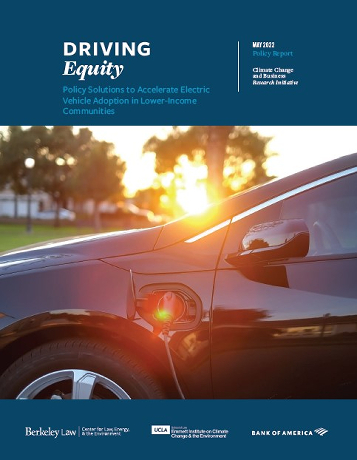
May 2022
Driving Equity
To achieve state goals of 40 percent greenhouse gas emission reduction (below 1990 levels) by 2030 and carbon neutrality by 2045, California must significantly reduce emissions from transportation, which is the single greatest source of statewide (and national) emissions. In 2020, Governor Newsom issued an executive order calling for a complete phase-out of new fossil fuel vehicle sales by 2035, and in April 2022 the California Air Resources Board proposed an update to its Advanced Clean Cars regulation to achieve that target.
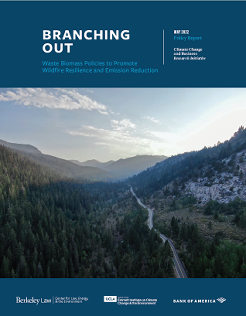
May 2022
Branching Out
In response to California’s devastating wildfires over the past several years, government and private landowners are removing more debris and residual material from forested areas, such as removing dead trees and creating fire breaks. This vegetation management is one component of a broader forest and wildfire management strategy. However, when land managers complete these actions, they must remove and dispose of the residual waste material in a responsible manner. Otherwise, they risk this material burning in the next fire or too much of it decomposing, with associated carbon emissions and air pollution. But land managers currently have little financial incentive for removing the material, often leaving excess debris on the forest floor.

March 2022
No Time to Waste: Governing Cobalt Amid the Energy Transition
Cobalt is critical. Along with other critical minerals, cobalt has important economic uses and currently few viable substitutes, yet its supply faces a high risk of disruption. Manufacturers of batteries for electric vehicles (EVs) want the metal. EV sales—and likewise, cobalt demand— could grow a lot more.
Yet, cobalt may not remain critical for decades to come. EV buyers, battery manufacturers and miners fear the high prices and disrupted supply, as well as human right abuses, environmental destruction, corruption, and political risk. As with other critical minerals, industries are seeking to use less of the metal. The time available for the Democratic Republic of Congo (DRC) and other countries to benefit from mining the metal may be short-lived.
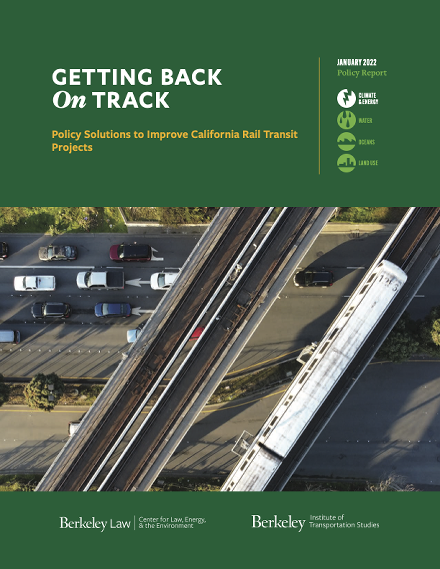
January 2022
Analyzing Rail Transit Project Costs and Delays
Increasing the reach and capacity of public transit networks, including rail transit, will be essential to reducing greenhouse gas emissions from transportation. But in California (and throughout the US), transit infrastructure projects have long suffered from cost overruns and deployment delays that reduce the value of investment and erode public trust.
—2021—
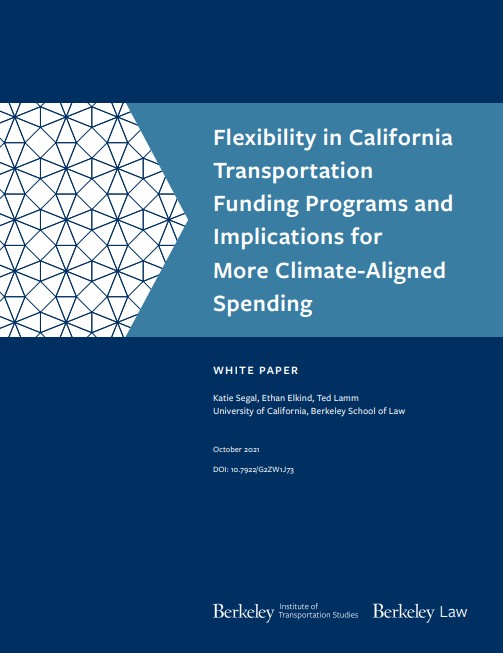
October 2021
Flexibility and Climate Alignment in California Transportation Funding
Assembly Bill 285 (Friedman, 2019) directed the Strategic Growth Council to develop a report on the California Transportation Plan (a roadmap for state transportation investment and planning through 2050), state and local funding sources, and opportunities to align state goals. CLEE joined with researchers at UC Berkeley Institute of Transportation Studies (ITS), UC Davis ITS, and UCLA ITS to prepare a series of white papers on select California transportation funding and planning topics to provide an evidentiary basis for the SGC report.
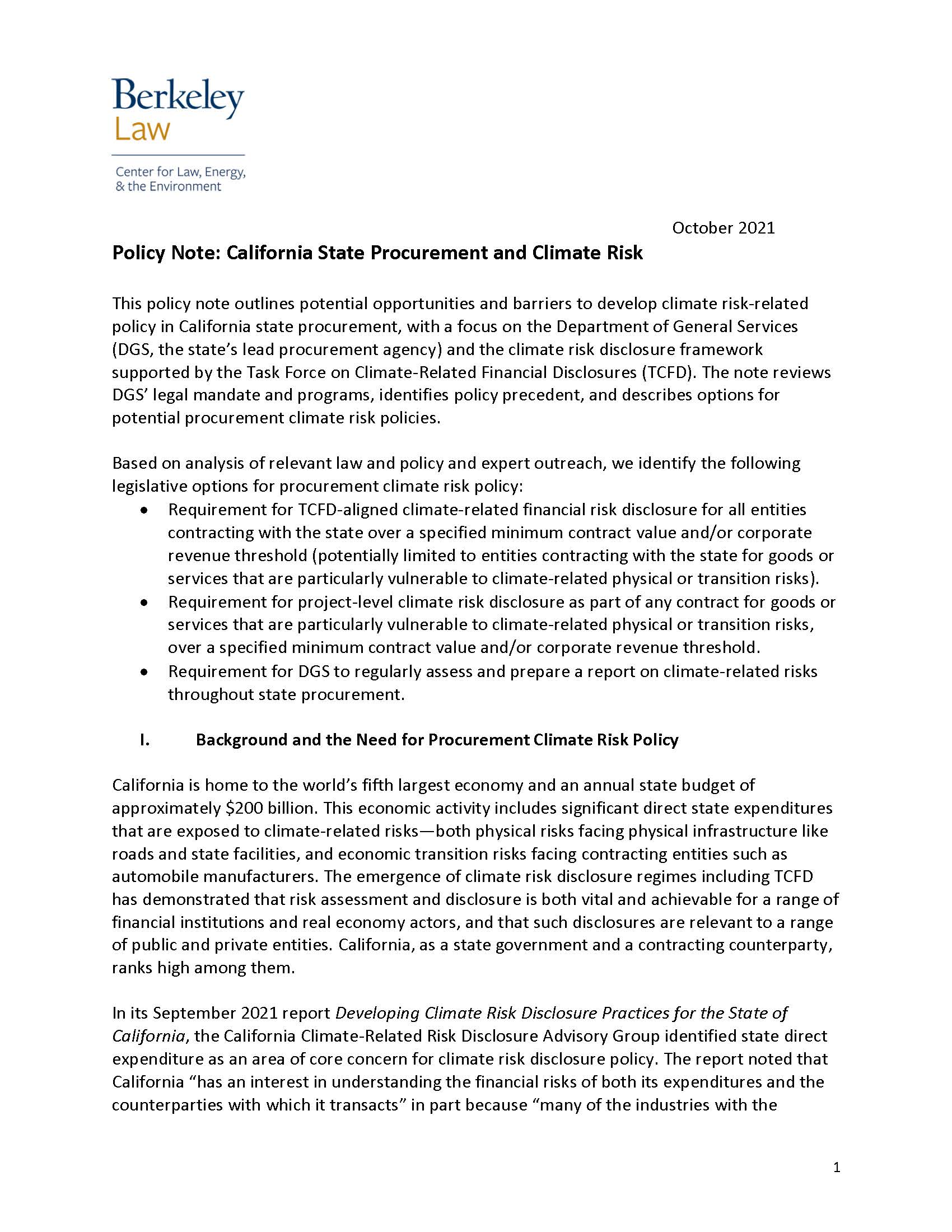 October 2021
October 2021
Developing Climate Risk Policy for State Procurement and Bond Issuance
California is home to one of the largest economies in the world, and the state plays a direct role in this economy as a steward of assets, a regulator, a revenue generator and service provider, and a direct spender of funds on a range of infrastructure, goods, and services. In light of the risks that climate change poses to state industries and financial institutions, state lawmakers and experts have recently sought to increase knowledge of climate-related risks throughout the state economy. In two new policy notes, CLEE explores potential opportunities to develop climate risk disclosure policy through the lens of state procurement and bond issuance.
July 2021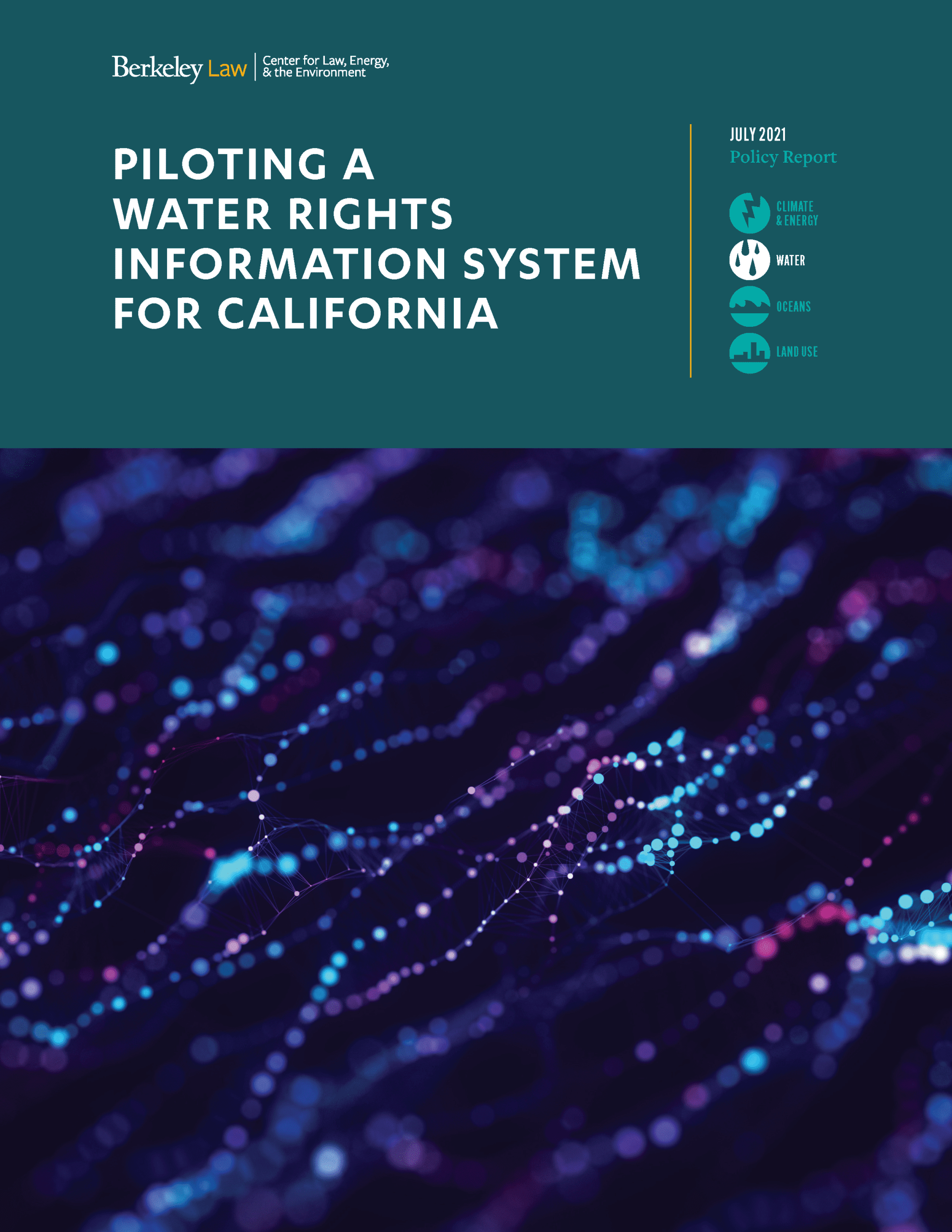
Piloting a Water Rights Information System for California
California’s complex water management challenges are growing and intensifying. Systemic stressors like the more frequent and severe droughts and floods driven by climate change are only making it harder to respond. Accordingly, California needs to dramatically improve the ability of local, regional, and State entities to make agile and effective water management decisions. We believe doing so will require enhanced understanding of our water resources and how they align with the needs of a range of agencies and stakeholders. Water rights data provide a crucial opportunity for advancing this understanding.
Through a multi-year process of research and engagement, we developed analytical background on how water rights data plays into water management on a broader scale, combined with legal and institutional analysis. Ultimately, we find that a modernized water rights data is feasible, affordable, and can increase clarity for better decision making. Our report, Piloting a Water Rights Information System for California, offers a vision and roadmap for making it a reality.
June 2021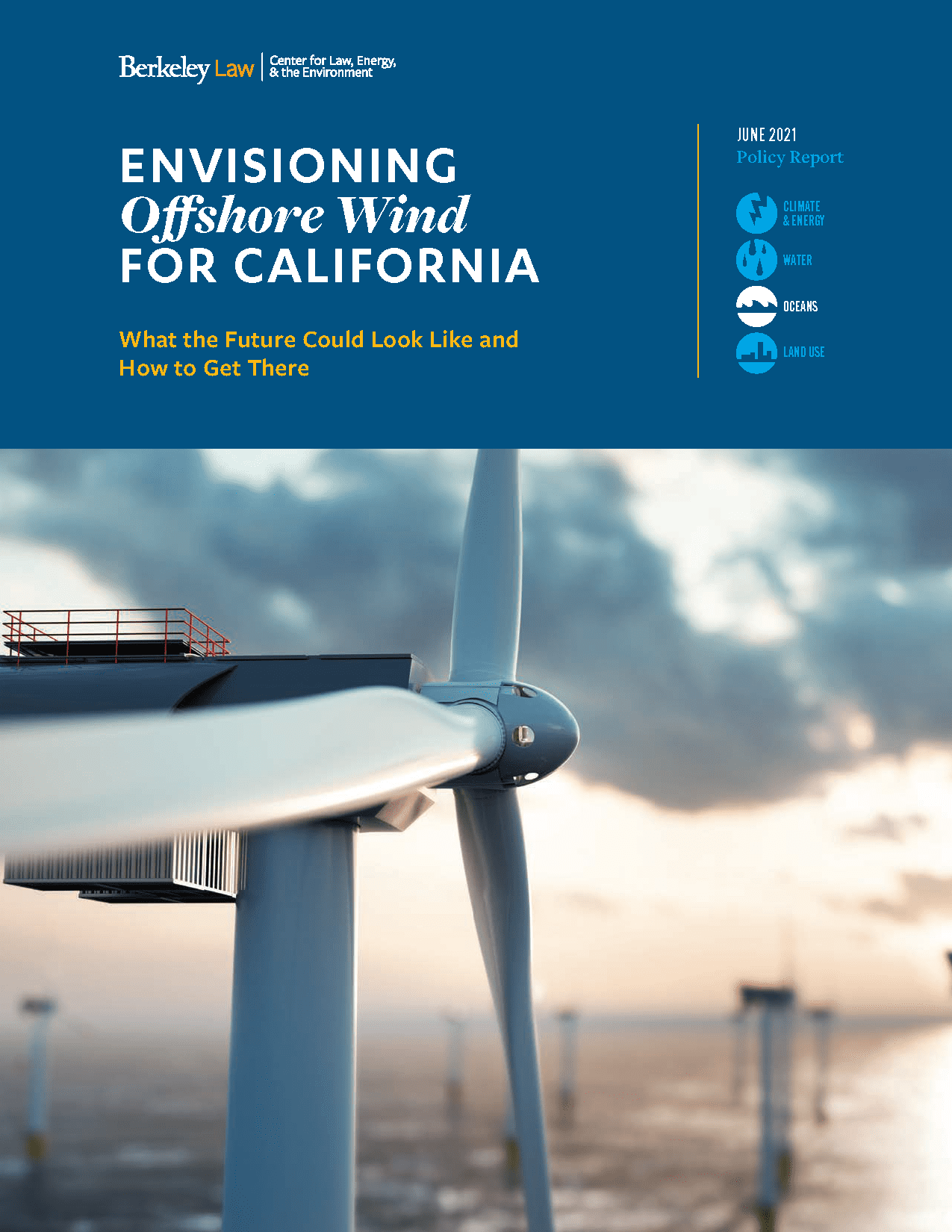
Envisioning Offshore Wind for California
Offshore wind could become an essential piece of California’s renewable energy puzzle while delivering on multiple statewide goals, from tackling climate change and addressing environmental justice to building a just transition and unlocking new economic opportunities. But none of these desirable goals can happen without a robust and far-sighted planning process that includes Californians’ diverse interests.
CLEE’s new report, Envisioning Offshore Wind for California, provides an overview of the challenges and opportunities. The report suggests priority actions to ensure a comprehensive, strategic approach to this new-to-California industry. It builds from input provided during two workshops from a wide range of participants, including local governments, non-profit organizations, labor representatives, fishermen, renewable energy developers, and more. CLEE convened these workshops with the intent of catalyzing broad and open conversations around OSW and determining potential pathways for future state action.
June 2021
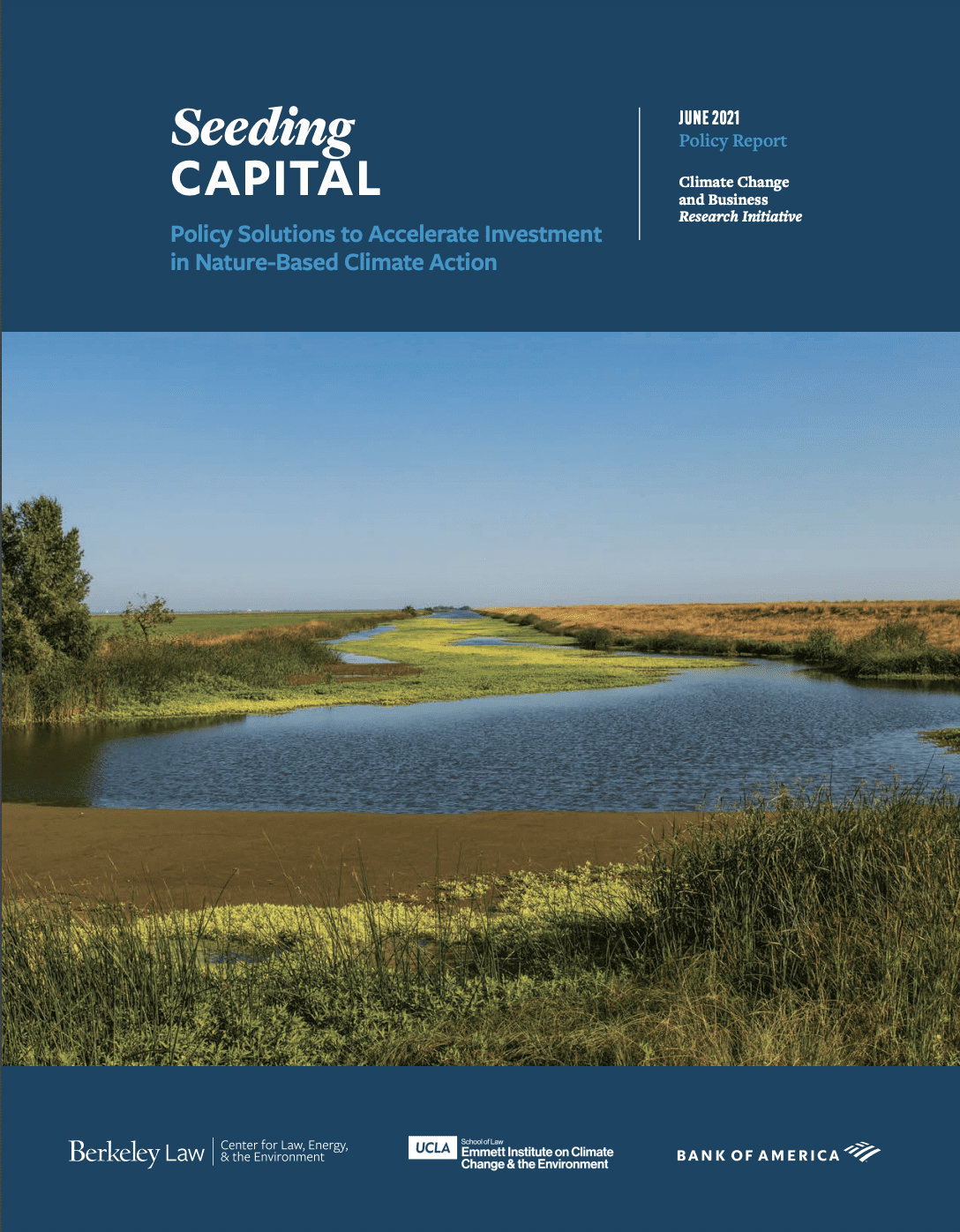 Investing in Nature as a Climate Solution
Investing in Nature as a Climate Solution
To address these challenges, CLEE and our partners at UCLA Law’s Emmett Institute on Climate Change and the Environment issued the new report, Seeding Capital.
March 2021
Priorities for Sonoma County’s Wildfire Settlement Vegetation Management Funds
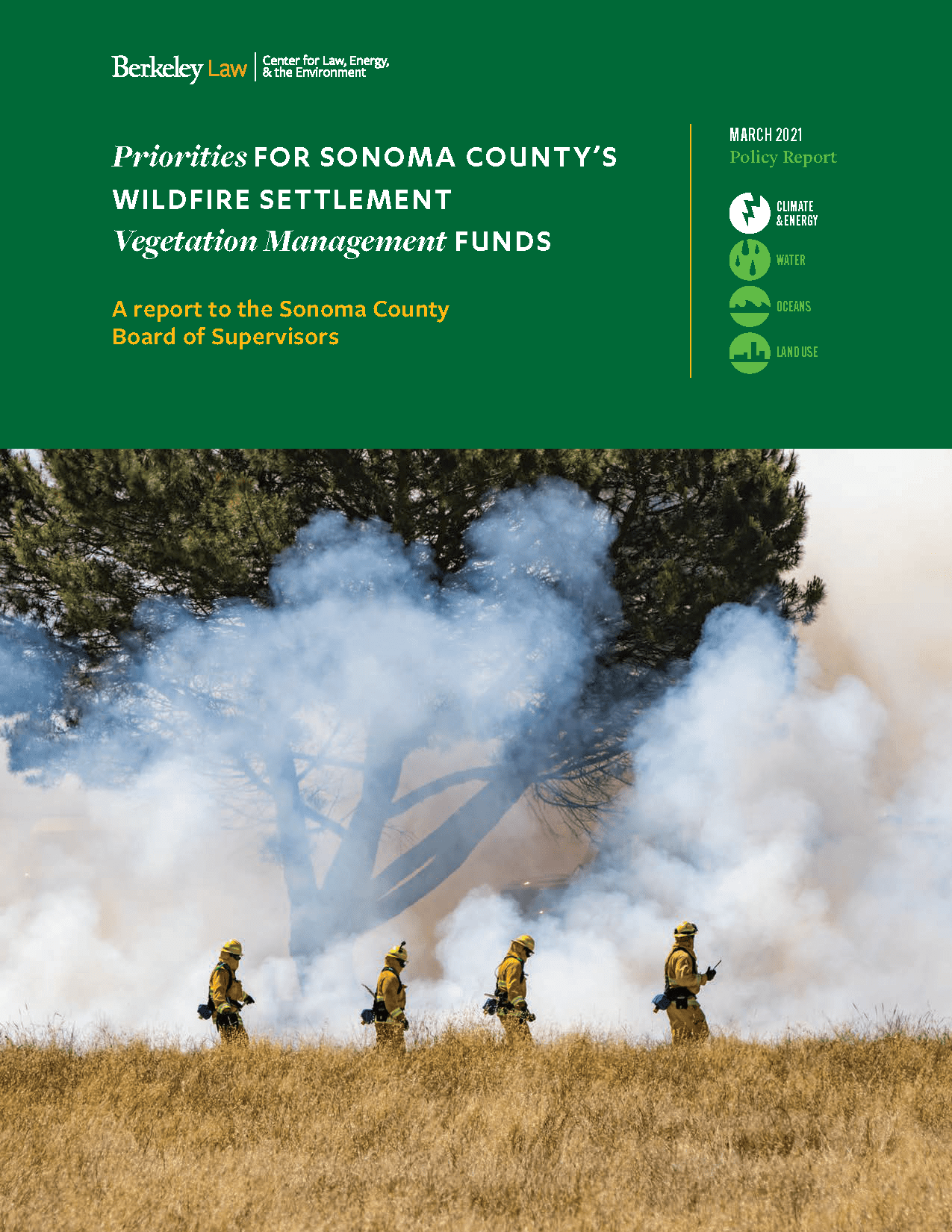 In 2017, the Sonoma Complex Fires burned hundreds of thousands of acres in the county, destroyed over 5,000 structures, and took two dozen lives. After reaching a legal settlement with Pacific Gas & Electric (whose equipment sparked the fires), Sonoma County allocated $25 million of the settlement funds to vegetation management in order to reduce future fire risk and protect ecosystems and agriculture.
In 2017, the Sonoma Complex Fires burned hundreds of thousands of acres in the county, destroyed over 5,000 structures, and took two dozen lives. After reaching a legal settlement with Pacific Gas & Electric (whose equipment sparked the fires), Sonoma County allocated $25 million of the settlement funds to vegetation management in order to reduce future fire risk and protect ecosystems and agriculture.The County retained CLEE to gather expert input and prepare recommendations for how to allocate these funds most efficiently and effectively. Considering the long-term and recurring nature of vegetation management, the diversity of County landscapes and ecosystems, and the scale of the need relative to the amount of funds, a range of strategies will be required to leverage the funds into long-term investments and ensure sustainable practices. CLEE convened a group of statewide experts and a group of County stakeholders to identify spending priorities. Our report, Priorities for Sonoma County’s Wildfire Settlement Vegetation Management Funds, outlines these priorities and offers specific strategies for the funds to achieve them.
February 2021
Data Access for a Decarbonized Grid
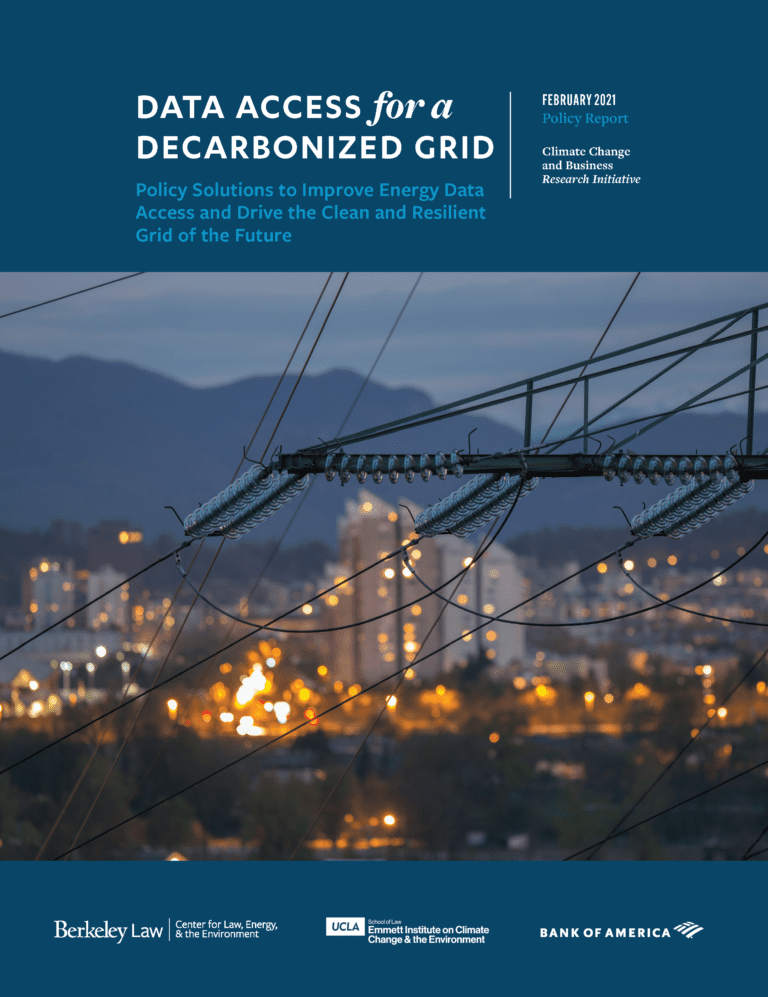 California’s electricity infrastructure is entering a period of profound change, with state leaders striving to achieve 60 percent renewable sources by 2030 and 100 percent zero-carbon power by 2045, while increasingly severe heat waves and wildfires threaten the reliability and resilience of the grid. Developers are introducing a range of flexible grid technologies to meet these challenges. While these technologies are becoming increasingly mainstream and affordable, effective and efficient deployment relies on a key resource—energy data—that can maximize the flexible use of diverse energy resources. Abundant energy data already provide the information needed to operate a modern, flexible grid. However, state regulators, electric utilities, technology developers, and customers face a thicket of regulatory, privacy, and incentive-based challenges to optimizing the generation and management of this data.
California’s electricity infrastructure is entering a period of profound change, with state leaders striving to achieve 60 percent renewable sources by 2030 and 100 percent zero-carbon power by 2045, while increasingly severe heat waves and wildfires threaten the reliability and resilience of the grid. Developers are introducing a range of flexible grid technologies to meet these challenges. While these technologies are becoming increasingly mainstream and affordable, effective and efficient deployment relies on a key resource—energy data—that can maximize the flexible use of diverse energy resources. Abundant energy data already provide the information needed to operate a modern, flexible grid. However, state regulators, electric utilities, technology developers, and customers face a thicket of regulatory, privacy, and incentive-based challenges to optimizing the generation and management of this data.January 2021
Setting Priorities for Building Decarbonization 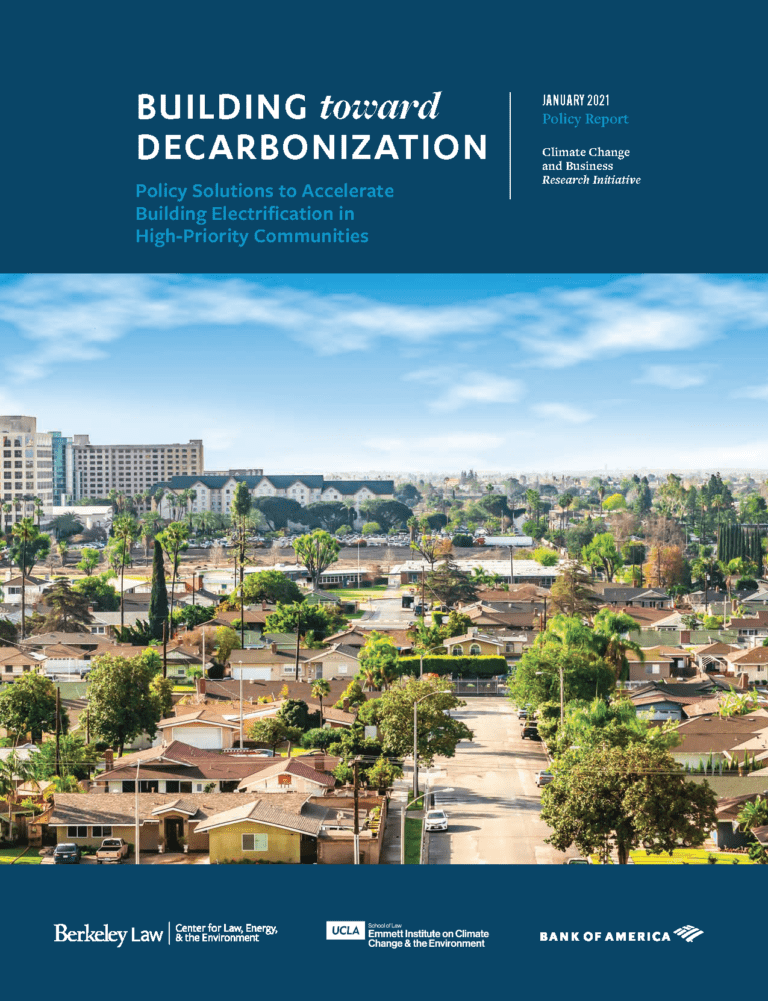
Looking Ahead to 2021
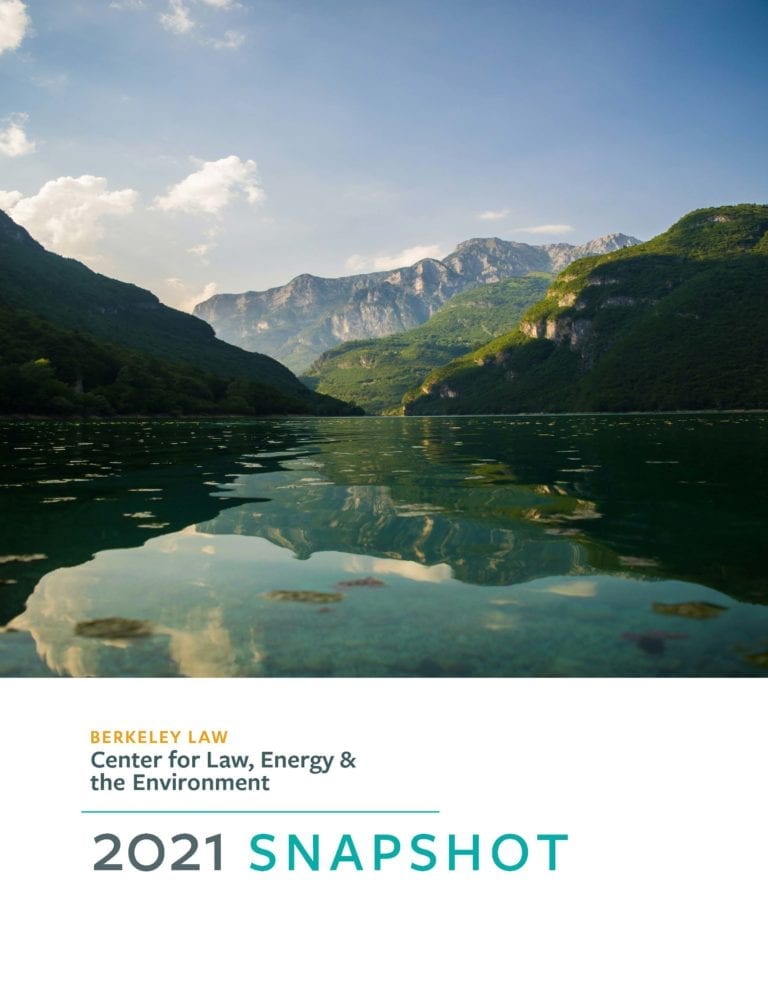 We are pleased to release the 2021 CLEE Snapshot. Through our four growing flagship programs – Climate, Water, Oceans, and Land Use – as well as multiple groundbreaking initiatives, we are pushing to strengthen governance for a healthier, safer future. The 2021 CLEE Snapshot concisely shows what we accomplished in 2020, and also what we are focusing on this year. Learn more about our new and ongoing initiatives for environmental and energy solutions at Berkeley Law.
We are pleased to release the 2021 CLEE Snapshot. Through our four growing flagship programs – Climate, Water, Oceans, and Land Use – as well as multiple groundbreaking initiatives, we are pushing to strengthen governance for a healthier, safer future. The 2021 CLEE Snapshot concisely shows what we accomplished in 2020, and also what we are focusing on this year. Learn more about our new and ongoing initiatives for environmental and energy solutions at Berkeley Law.—2020—
December 2020
Capturing Opportunity
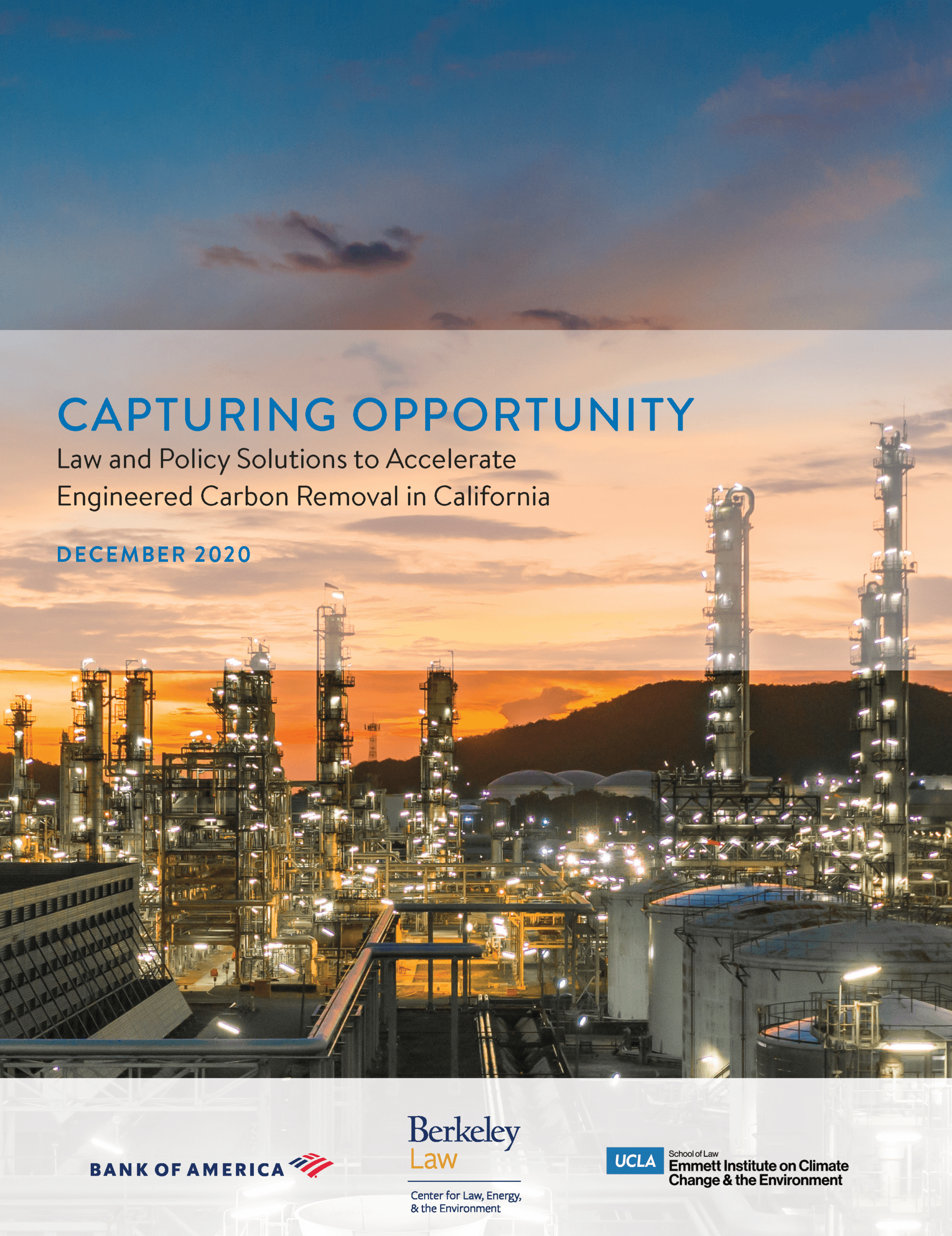 California has enacted ambitious climate goals, including a statewide carbon neutrality target by 2045. While much of the required greenhouse gas reductions will come from clean technology and emission reduction programs, meeting these targets will necessitate new methods of actively removing carbon from the atmosphere and capturing difficult-to-mitigate emissions, including via technologies broadly known as engineered carbon removal. These processes — such as carbon capture and sequestration from industrial and fossil fuel facilities, biomass energy production with carbon capture, and direct air capture of atmospheric carbon — can complement nature-based solutions but are mostly still in the early development stages
California has enacted ambitious climate goals, including a statewide carbon neutrality target by 2045. While much of the required greenhouse gas reductions will come from clean technology and emission reduction programs, meeting these targets will necessitate new methods of actively removing carbon from the atmosphere and capturing difficult-to-mitigate emissions, including via technologies broadly known as engineered carbon removal. These processes — such as carbon capture and sequestration from industrial and fossil fuel facilities, biomass energy production with carbon capture, and direct air capture of atmospheric carbon — can complement nature-based solutions but are mostly still in the early development stages
December 2020
Insuring Extreme Heat Risks
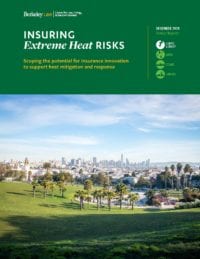 Extreme heat is a leading climate-related health risk, responsible for thousands of deaths and hospitalizations per year in the United States, a number that will grow significantly this century. Local governments are developing resilience plans that include comprehensive extreme heat elements to help address the expansive risks posed by extreme heat, including not just physical health but also mental health, educational success, birth outcomes, worker productivity, transportation networks, and utility infrastructure. But extreme heat impacts are especially diffuse and difficult to address, and they disproportionately affect vulnerable and disadvantaged communities.
Extreme heat is a leading climate-related health risk, responsible for thousands of deaths and hospitalizations per year in the United States, a number that will grow significantly this century. Local governments are developing resilience plans that include comprehensive extreme heat elements to help address the expansive risks posed by extreme heat, including not just physical health but also mental health, educational success, birth outcomes, worker productivity, transportation networks, and utility infrastructure. But extreme heat impacts are especially diffuse and difficult to address, and they disproportionately affect vulnerable and disadvantaged communities.September 2020
The California Roadmap
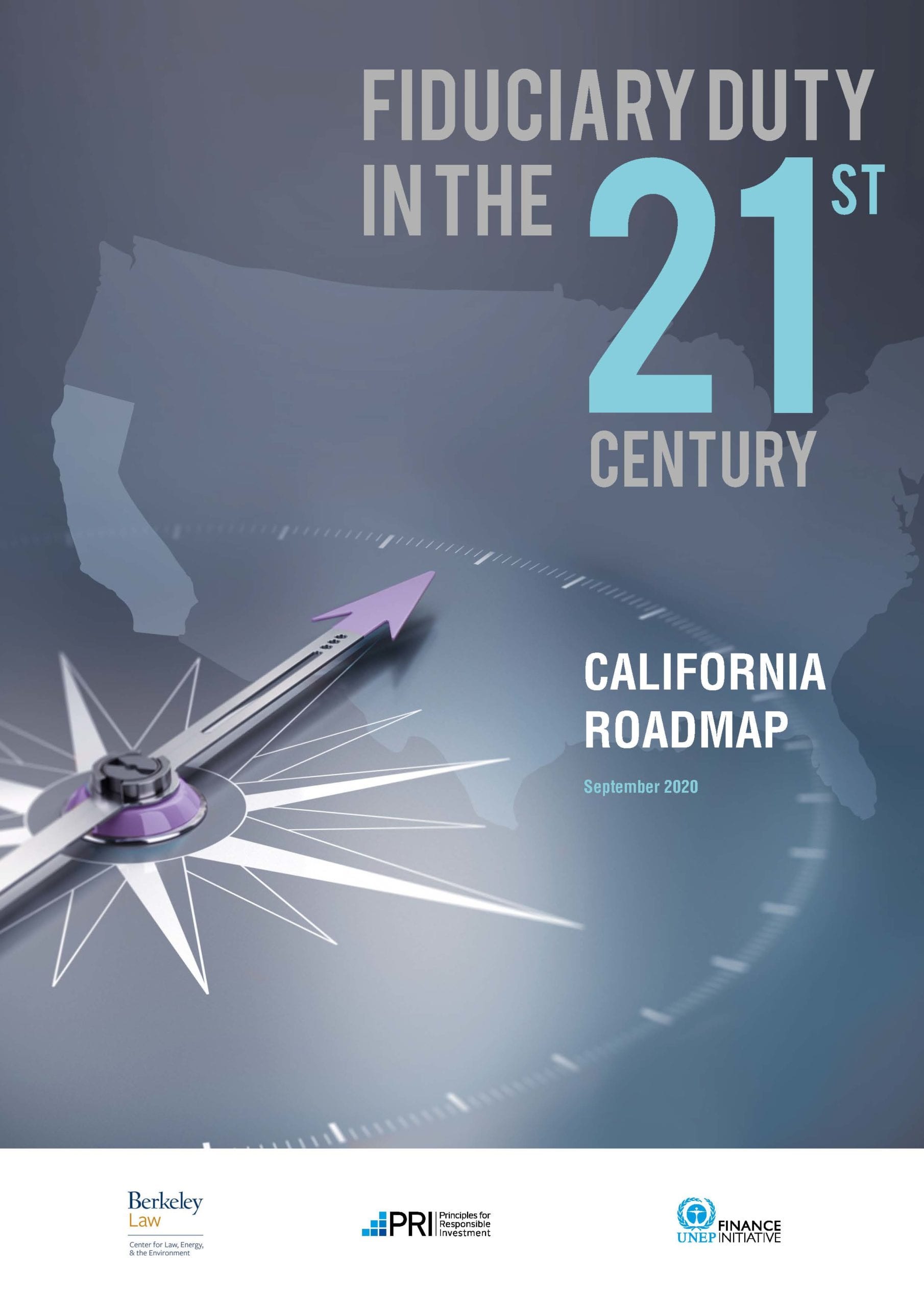 The increasingly clear impacts of climate change, the growing urgency of social justice movements, and the COVID-19 pandemic are all demonstrating how environmental, social, and governance (ESG) issues shape local and international economies. California, as one of the largest economies in the world and a hub of innovation in business as well as climate policy, is uniquely poised to lead the push for greater consideration of ESG issues.
The increasingly clear impacts of climate change, the growing urgency of social justice movements, and the COVID-19 pandemic are all demonstrating how environmental, social, and governance (ESG) issues shape local and international economies. California, as one of the largest economies in the world and a hub of innovation in business as well as climate policy, is uniquely poised to lead the push for greater consideration of ESG issues.September 2020
Civic Engagement and Water Data: How Can California Make Data Work for Decision Makers?
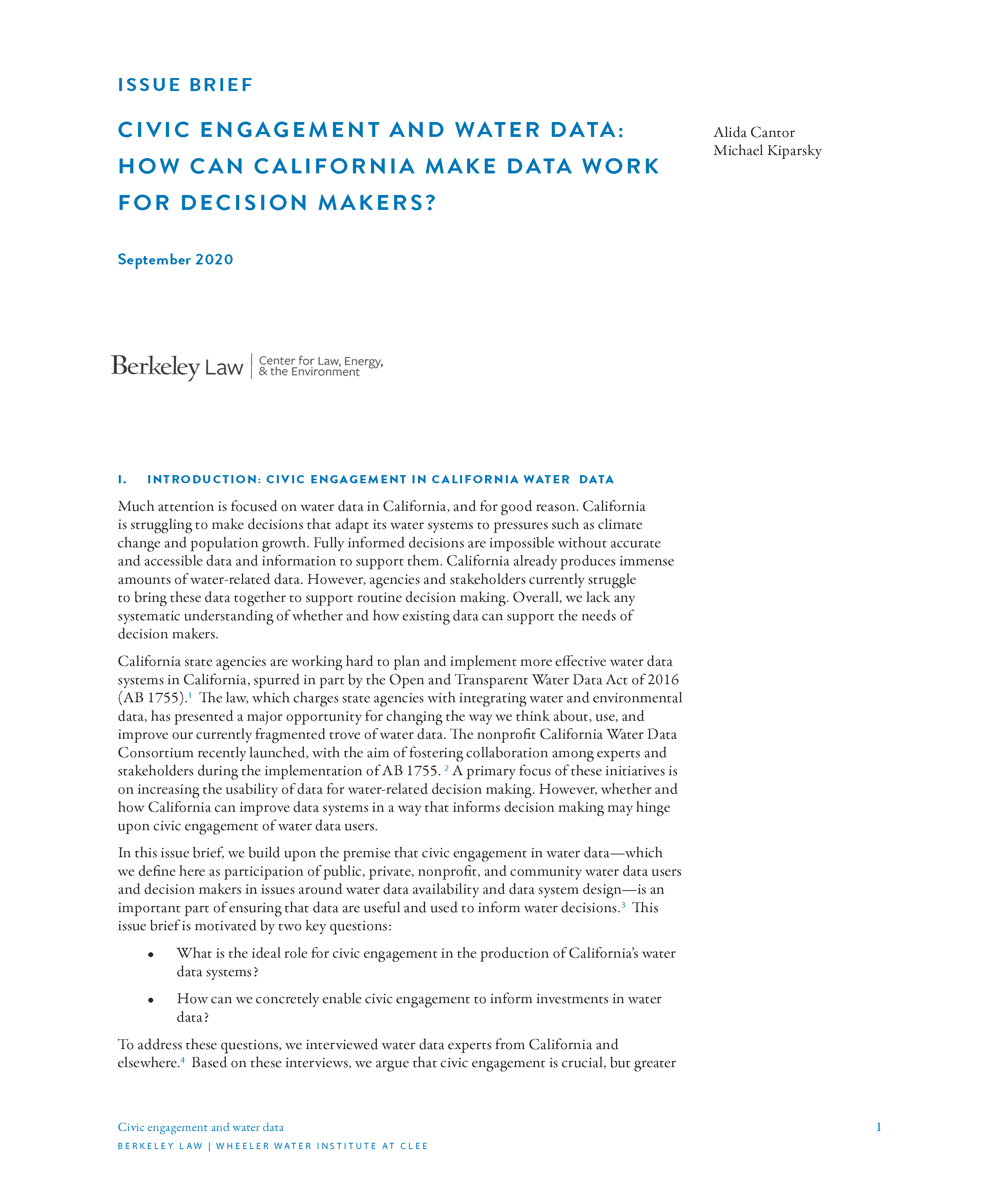 As California water resources continue to face pressing challenges, such as climate change and population growth, data will play a critical role in empowering decision makers to adapt quickly. Building on our 2018 work with stakeholders to improve the usefulness of water data, this new issue brief focuses on the role of civic engagement in water data availability and system design. Based on interviews with public, private, nonprofit, and community thought leaders, the research identifies different approaches to civic engagement in water data and how it can be part of solving pressing problems.
As California water resources continue to face pressing challenges, such as climate change and population growth, data will play a critical role in empowering decision makers to adapt quickly. Building on our 2018 work with stakeholders to improve the usefulness of water data, this new issue brief focuses on the role of civic engagement in water data availability and system design. Based on interviews with public, private, nonprofit, and community thought leaders, the research identifies different approaches to civic engagement in water data and how it can be part of solving pressing problems.
July 2020
Sustainable Drive, Sustainable Supply: Priorities to Improve the Electric Vehicle Battery Supply Chain
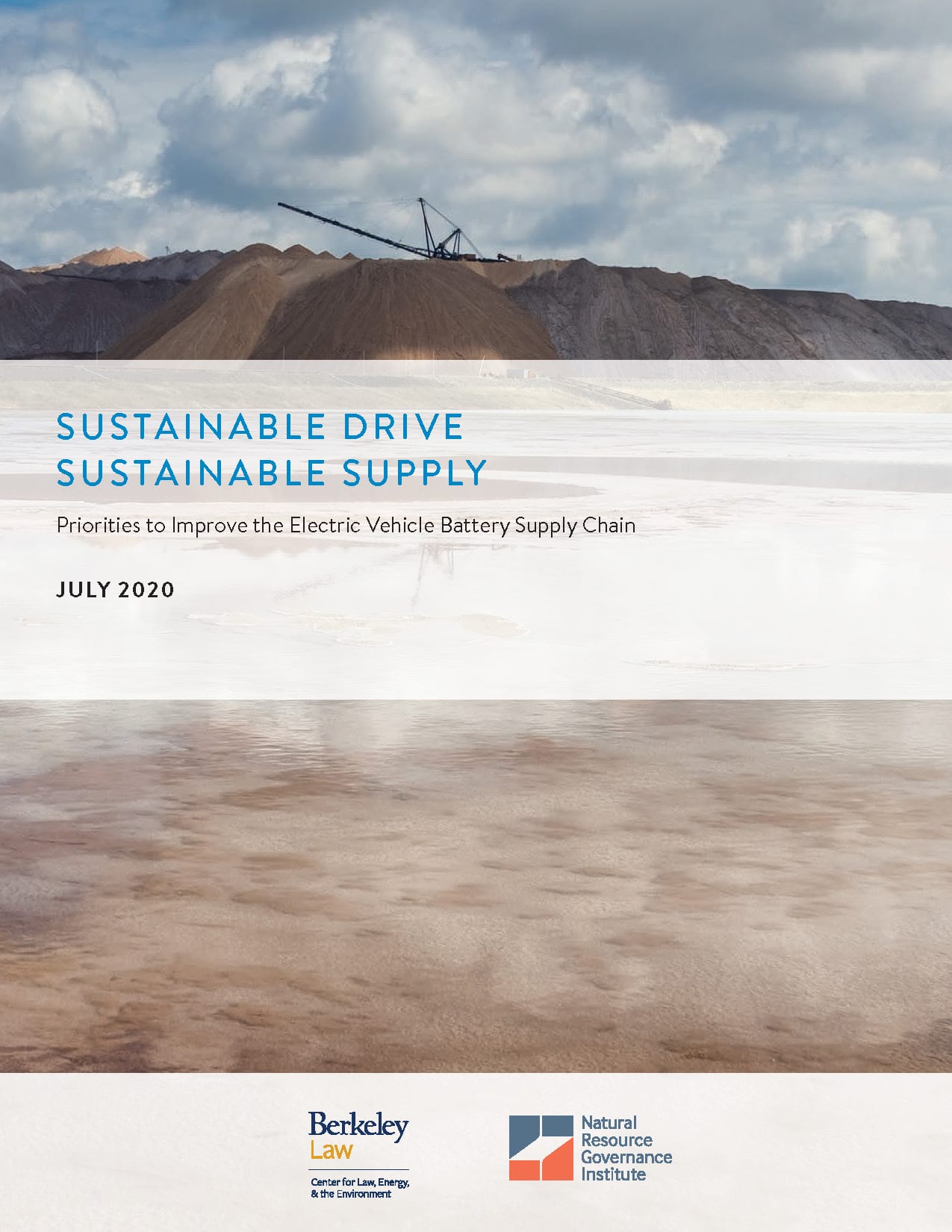 The global transition from fossil fuel-powered vehicles to battery electric vehicles (EVs) will require the production of hundreds of millions of batteries. This massive deployment frequently raises questions from the general public and critics alike about the sustainability of the battery supply chain, from mining impacts to vehicle carbon emissions.
The global transition from fossil fuel-powered vehicles to battery electric vehicles (EVs) will require the production of hundreds of millions of batteries. This massive deployment frequently raises questions from the general public and critics alike about the sustainability of the battery supply chain, from mining impacts to vehicle carbon emissions.
To address these questions, CLEE and the Natural Resource Governance Institute (NRGI) are conducting a stakeholder-led research initiative focused on identifying strategies to improve sustainability and governance across the EV battery supply chain. The new report “Sustainable Drive, Sustainable Supply: Priorities to Improve the Electric Vehicle Battery Supply Chain” identifies key challenges and possible responses that industry, government and nonprofit leaders could take to ensure battery supply chain sustainability.
June 2020
Clean and Resilient: Policy Solutions for California’s Grid of the Future
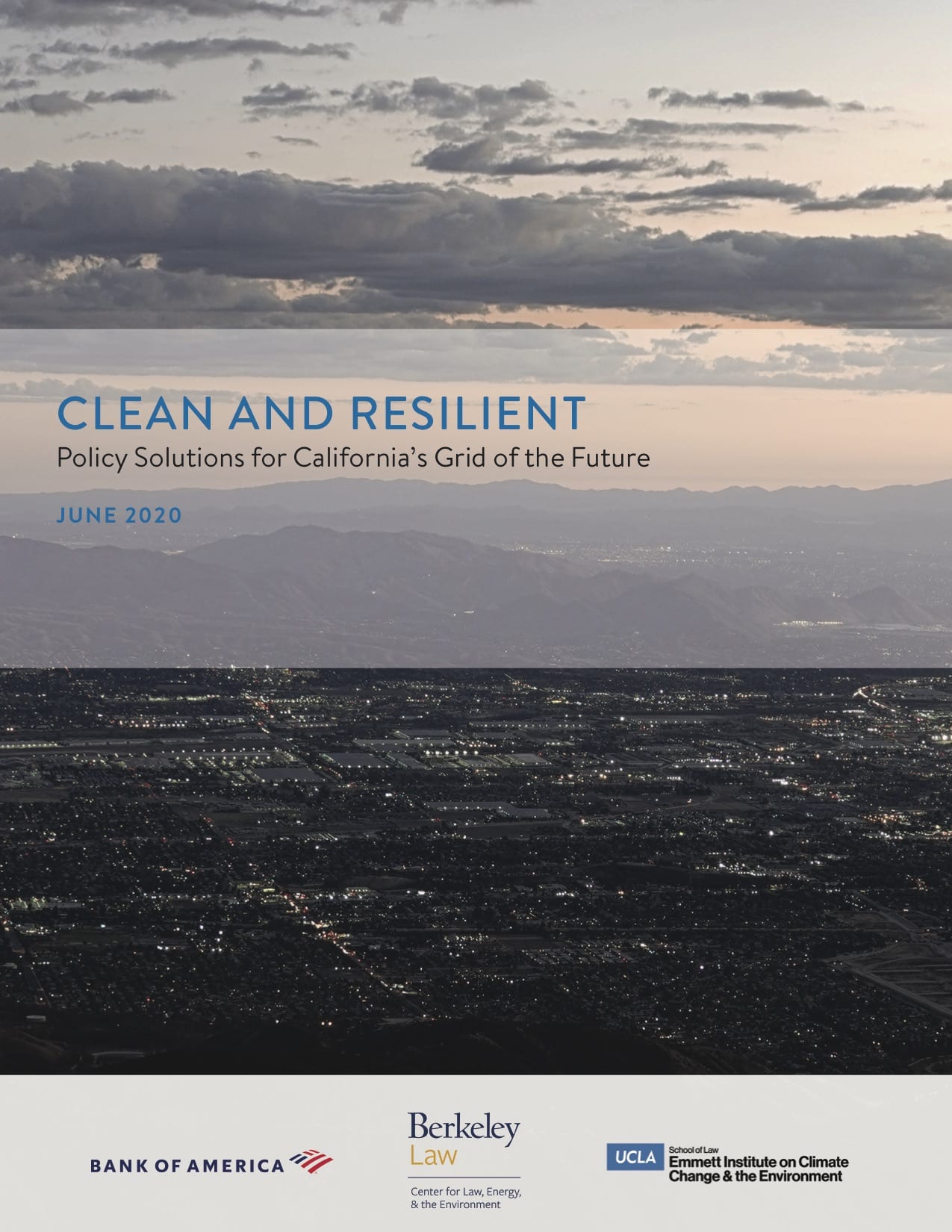 California’s electrical grid is both at the core of the state’s aggressive decarbonization goals—with targets of 60 percent renewable power by 2030 and 100 percent carbon-free electricity by 2045—and a major source of community vulnerability. Technologies like distributed renewable generation, microgrids, energy storage, building energy management, and vehicle-grid integration will be essential to promote community safety and resilience while advancing the effort to decarbonize the grid. But these investments will require significant policy and financial support to achieve these dual state goals over the coming decade.
California’s electrical grid is both at the core of the state’s aggressive decarbonization goals—with targets of 60 percent renewable power by 2030 and 100 percent carbon-free electricity by 2045—and a major source of community vulnerability. Technologies like distributed renewable generation, microgrids, energy storage, building energy management, and vehicle-grid integration will be essential to promote community safety and resilience while advancing the effort to decarbonize the grid. But these investments will require significant policy and financial support to achieve these dual state goals over the coming decade.
To address this need, CLEE and the Emmett Institute on Climate Change and the Environment at UCLA Law convened a group of California state energy regulators, local government leaders, grid experts, and clean energy advocates for a convening on California’s electrical grid of the future. Our report, Clean and Resilient, is based on this expert group’s findings.
April 2020
Legal Grounds: Law and Policy Options to Facilitate a Phase-out of Fossil Fuel Production in California
California is the seventh-largest oil producing state in the country, with a fossil fuel industry that is responsible for billions of dollars in state and local revenue and other economic activity each year. Yet continued oil and gas production contrasts with the state’s aggressive climate mitigation policies, while creating significant air and water pollution, particularly for disadvantaged communities in areas where much of the state’s drilling occurs.
As a result of these risks, many advocates and policymakers seek ways to enhance regulation of and eventually phase out oil and gas production in California. To provide legal options for policy makers to facilitate this transition, CLEE’s report Legal Grounds outlines steps California leaders could pursue on state- and privately-owned lands to achieve this reduction.
April 2020
Building a Sustainable Electric Vehicle Battery Supply Chain: Frequently Asked Questions
Looking Ahead to 2020
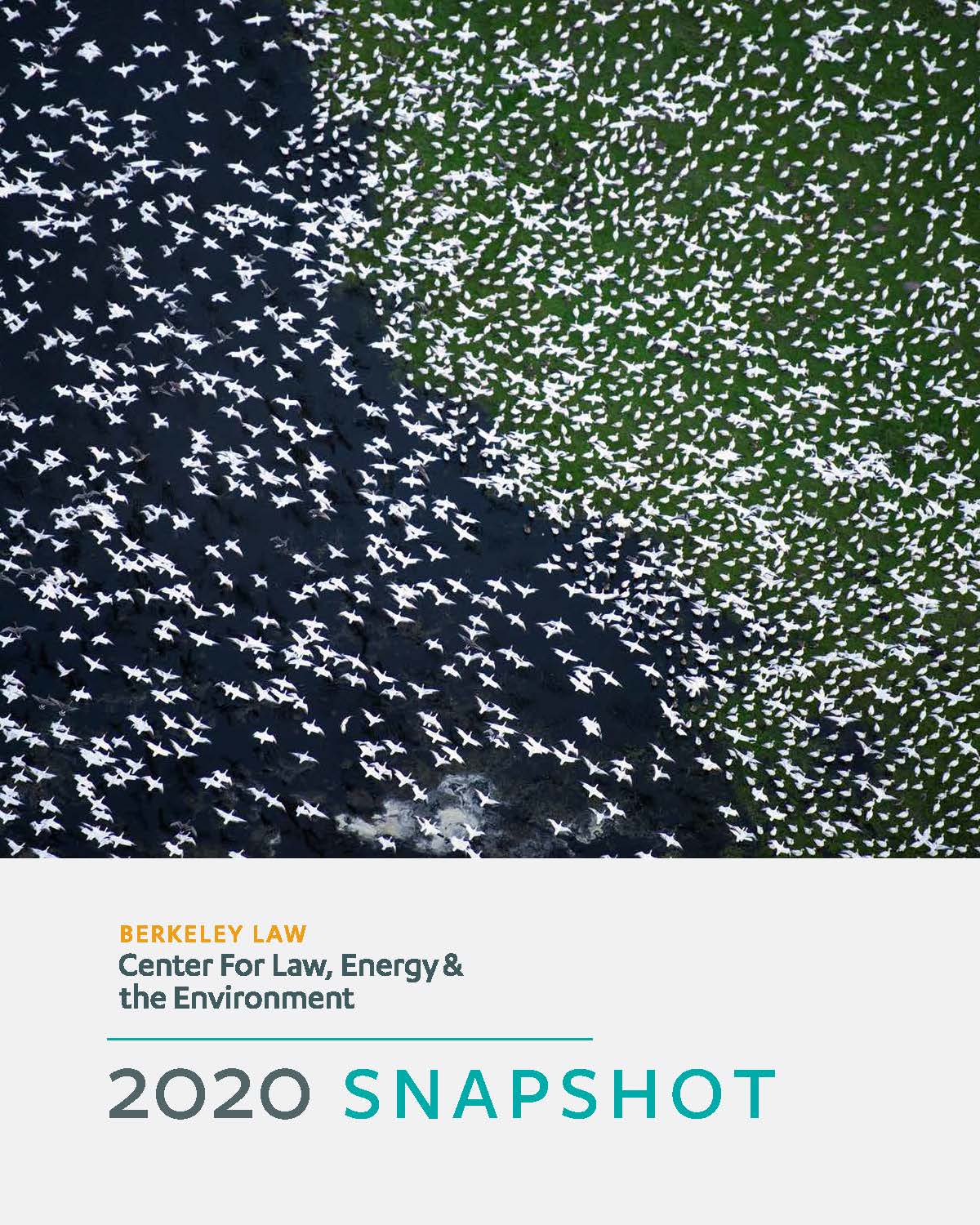 In 2019, we launched several climate-focused initiatives, including the California-China Climate Institute, Climate Risk Initiative, and Project Climate. We also addressed the key barriers limiting low-income Californians’ access to energy efficiency incentives and programs, explored the limitations of legislation in integrating California groundwater and surface water management, and brought key experts together to discuss the international governance of marine scientific research.
In 2019, we launched several climate-focused initiatives, including the California-China Climate Institute, Climate Risk Initiative, and Project Climate. We also addressed the key barriers limiting low-income Californians’ access to energy efficiency incentives and programs, explored the limitations of legislation in integrating California groundwater and surface water management, and brought key experts together to discuss the international governance of marine scientific research. —2019—
December 2019
Climate Change Law in the Asia Pacific
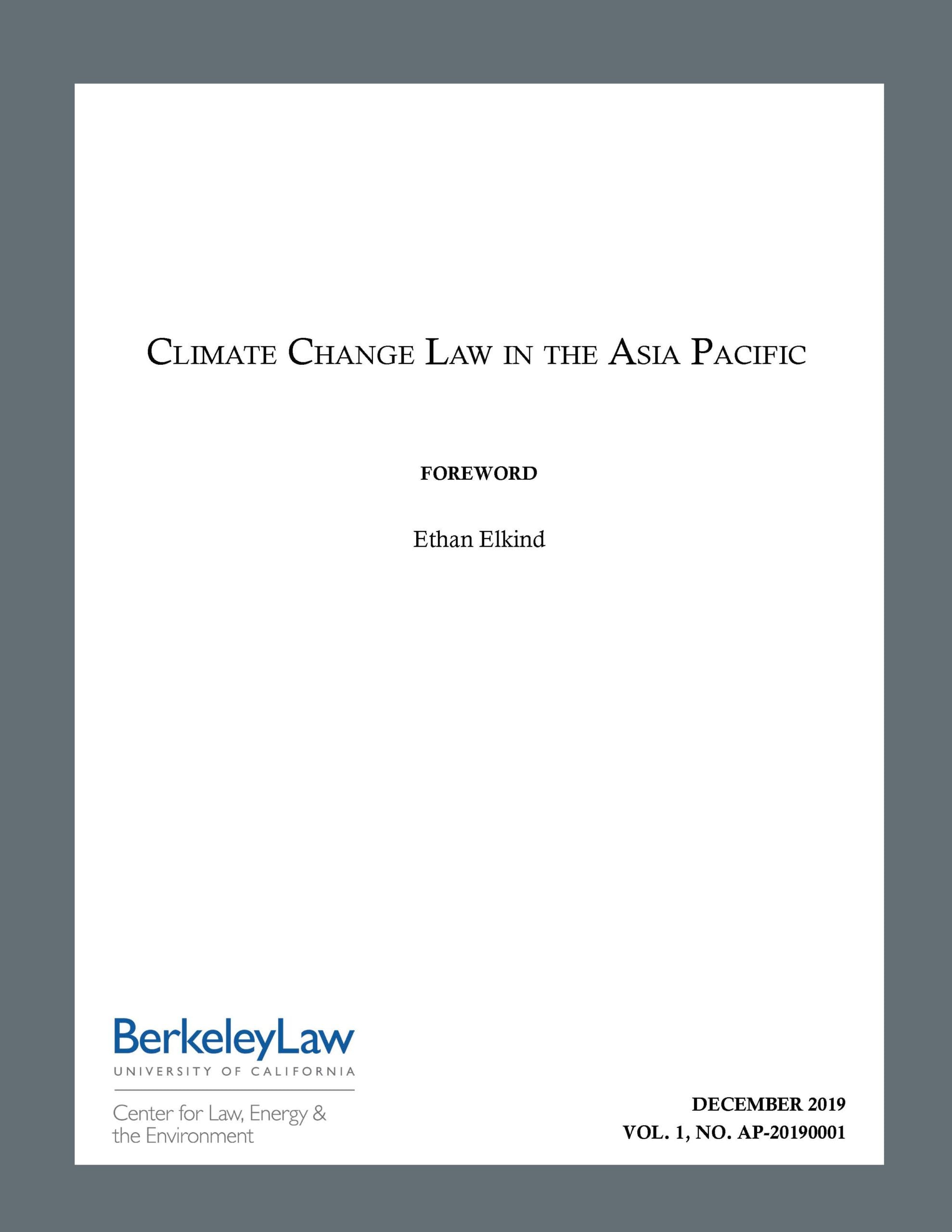 complicated landscape of post-Paris global climate change politics highlights the significance of stable local climate change response schemes. A diversity of initiatives has been launched by the state, sub-state, and non-state actors in the climate and energy transition arena and now is undergoing a continuous evolution.
complicated landscape of post-Paris global climate change politics highlights the significance of stable local climate change response schemes. A diversity of initiatives has been launched by the state, sub-state, and non-state actors in the climate and energy transition arena and now is undergoing a continuous evolution.
In September 2019, CLEE held an international conference, Climate Change Law in the Asia Pacific, which sought to explore the hard questions of climate change law in the Asia Pacific region. Based on topics covered at the conference, CLEE has published a series of working papers. The papers examine the efficacy of various legal institutions implementing climate change response initiatives.
December 2019
California Climate Risk: Insurance-Based Approaches to Mitigation and Resilience
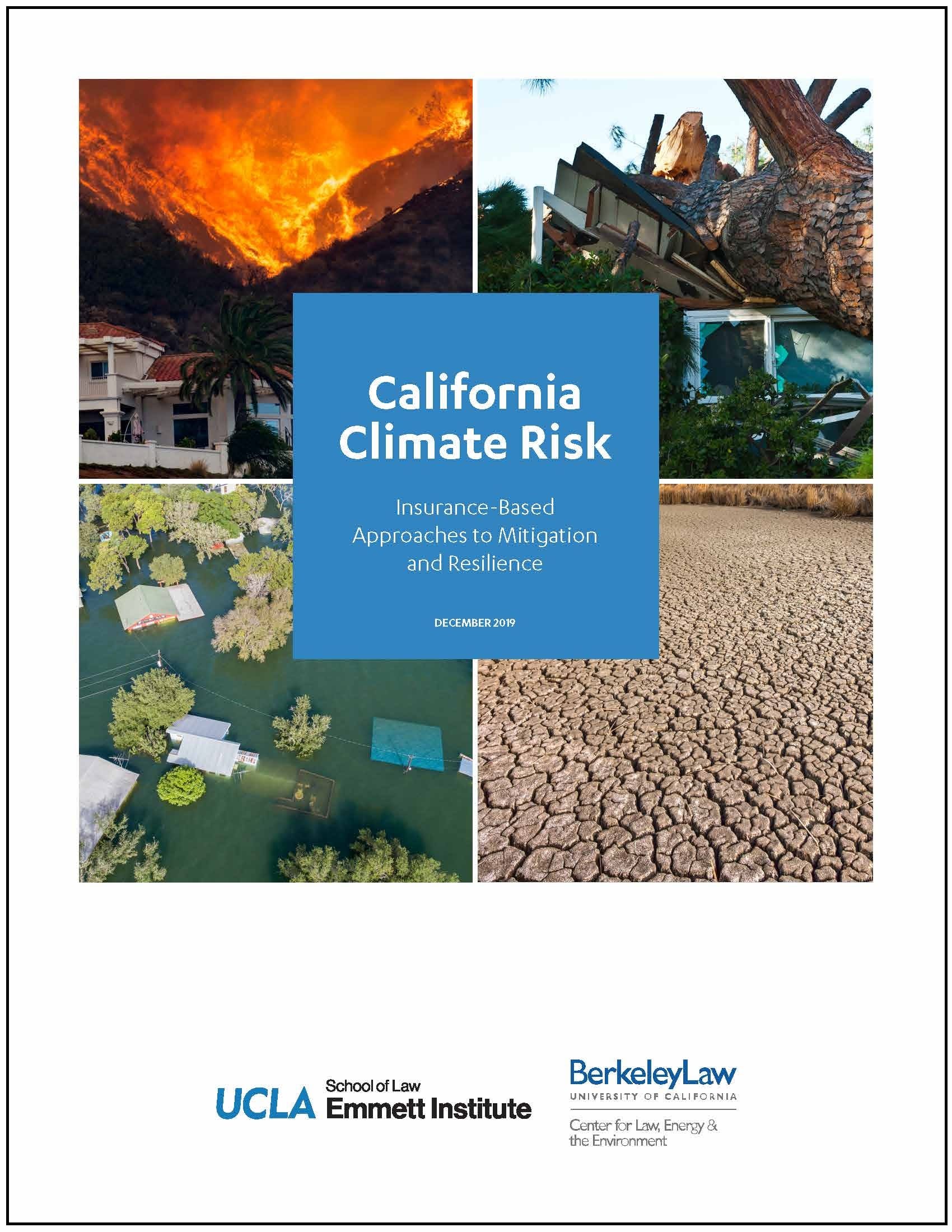 As the impacts of climate change develop and intensify throughout California, the insurance sector will play an increasingly important role in the state’s response. Policymakers, industry leaders, and local communities are all beginning to face a new paradigm of risk, resilience, and financial sustainability that insurers are uniquely positioned to help manage.
As the impacts of climate change develop and intensify throughout California, the insurance sector will play an increasingly important role in the state’s response. Policymakers, industry leaders, and local communities are all beginning to face a new paradigm of risk, resilience, and financial sustainability that insurers are uniquely positioned to help manage.
In July 2019, CLEE and UCLA Law’s Emmett Institute on Climate Change and the Environment, together with the California Department of Insurance and UN Environment’s Principles for Sustainable Insurance, convened a symposium to discuss this evolving new role for the insurance sector. Our new synthesis report, co-authored by UCLA’s Sean Hecht and CLEE’s Ted Lamm, summarizes the key findings and next steps identified at the symposium, and adds new material and analysis reflecting recent developments in the field.
November 2019
Electric Vehicles and Global Urban Adoption
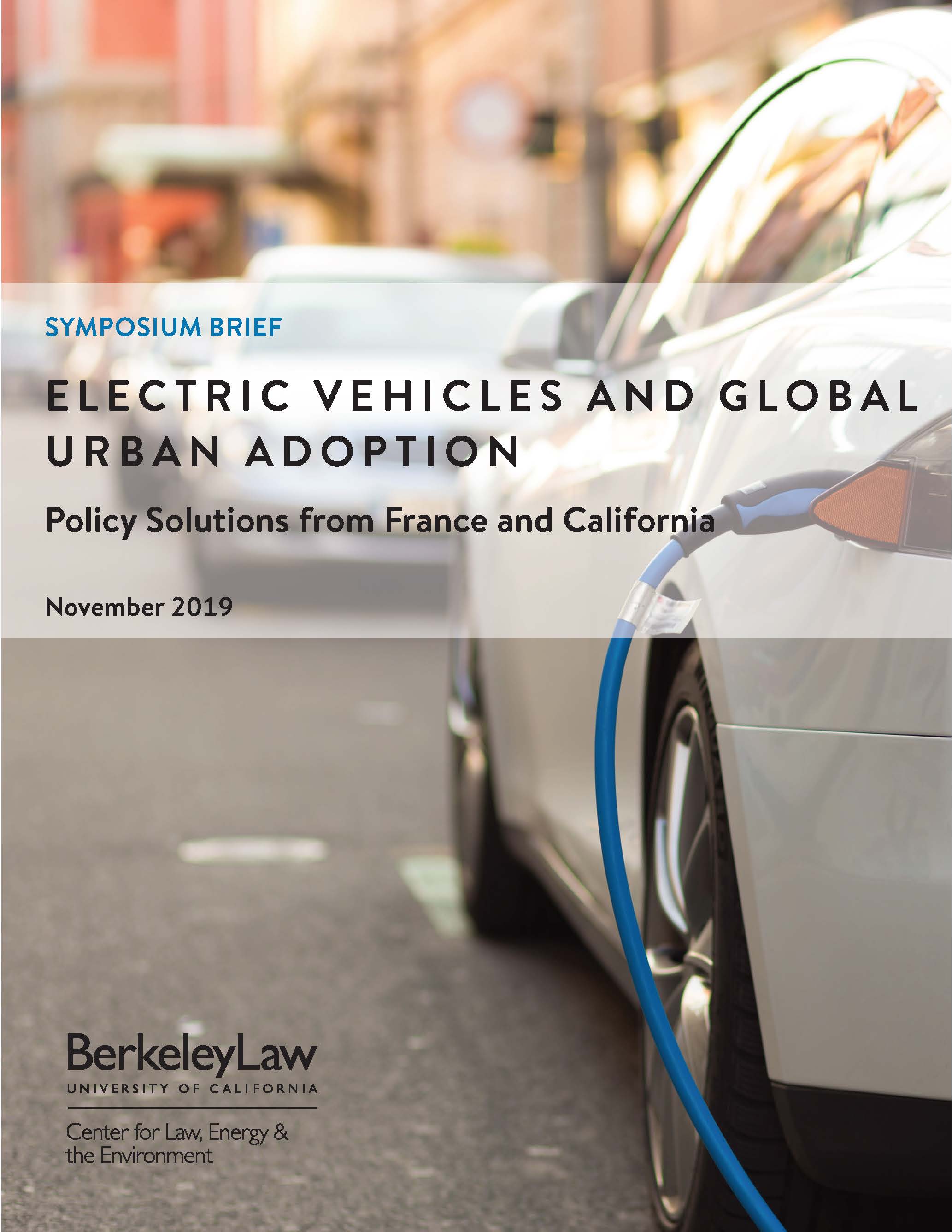 California and France have taken leading steps in supporting the transition to electric vehicles (EVs), but each has substantial progress ahead to reach full adoption. What can these jurisdictions learn from each other’s successes and challenges to make EVs convenient and accessible to urban residents?
California and France have taken leading steps in supporting the transition to electric vehicles (EVs), but each has substantial progress ahead to reach full adoption. What can these jurisdictions learn from each other’s successes and challenges to make EVs convenient and accessible to urban residents?
To explore these questions, speakers at our June 2019 international conference at UC Berkeley on electric vehicles and global urban adoption, co-sponsored by CentraleSupélec and Florence School of Regulation (FSR) in France, described lessons learned for electric vehicle deployment in France and California.
Based on the discussion, UC Berkeley Law’s Center for Law, Energy and the Environment (CLEE) released the symposium brief: Electric Vehicles and Global Urban Adoption: Policy Solutions from France and California.
August 2019
From Brussels to the Bay: Climate Risk and Sustainable Finance in the EU and California
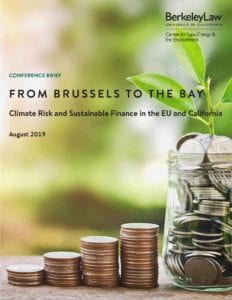 The global financial system faces structural risks from the worsening impacts of climate change and the various policy responses to it. As jurisdictions like the European Union (EU) and California seek to address these risks, they face significant questions about what actions will be necessary and how financial regulators and industry members across the globe will need to coordinate decision-making and resource-sharing.
The global financial system faces structural risks from the worsening impacts of climate change and the various policy responses to it. As jurisdictions like the European Union (EU) and California seek to address these risks, they face significant questions about what actions will be necessary and how financial regulators and industry members across the globe will need to coordinate decision-making and resource-sharing.
To address these concerns, we hosted experts and leaders in sustainable finance from California and the EU in May 2019 for a conference to discuss climate-related financial risks and key regulatory developments in the US and Europe. These include the EU Sustainable Finance Action Plan and Green Taxonomy efforts that seek to drive sustainable investment through innovative regulatory incentives and US industry partnership in implementing new disclosure and accounting standards. Our conference brief highlights the key insights delivered at the conference.
June 2019
Low Income, High Efficiency: Policies to Expand Low Income Multifamily Energy Savings Retrofits
Improving the energy performance of existing buildings will be key to achieving California’s efficiency and greenhouse gas emission goals. But owners and residents of low-income, multifamily buildings face some of the greatest obstacles, including difficult access to capital, complex financing arrangements, competing renovation needs, and a split incentive problem that limits owners’ financial interest in upgrades that primarily reduce residents’ utility bills.
To address these challenges, UC Berkeley and UCLA Schools of Law convened two stakeholder groups to identify policy solutions to address key barriers, increase access to energy efficiency incentives, and unlock environmental, financial, and quality-of-life benefits for owners and residents alike. The law schools are now releasing a policy report, Low Income, High Efficiency that details the solutions developed in these convenings.
June 2019
Policy Brief: Enhancing Local Land Use Data
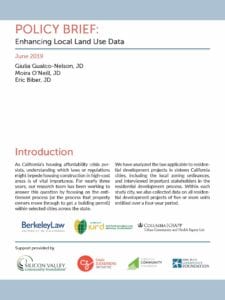 As California’s housing affordability crisis persists, understanding which laws or regulations might impede housing construction in high-cost areas is of vital importance. Entitlement data is necessary to inform how local and state land use regulatory tools are being applied in practice and to identify which types of proposed housing developments tend to move faster or slower through the planning review process. Analysis of entitlement data can identify issues of inequity or inefficiency in the first step of the residential development process.
As California’s housing affordability crisis persists, understanding which laws or regulations might impede housing construction in high-cost areas is of vital importance. Entitlement data is necessary to inform how local and state land use regulatory tools are being applied in practice and to identify which types of proposed housing developments tend to move faster or slower through the planning review process. Analysis of entitlement data can identify issues of inequity or inefficiency in the first step of the residential development process.
This policy brief details what our research team has learned about current data accessibility and provides recommendations on how to improve local data reporting and data maintenance to facilitate compliance with state housing laws and long-term planning strategies.
March 2019
Insuring California in a Changing Climate: Adapting the Industry to New Needs, Risks, and Opportunities
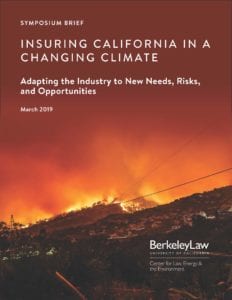 Climate change poses significant risks to the insurance industry, even as the industry has the opportunity to help California residents and businesses mitigate their own risks. As disaster events become more common and complex, markets transition away from fossil fuels, and climate litigation accelerates, the industry will need to adapt rapidly while Californians will need continued access to robust protection. Our new symposium brief highlights the key concerns and top policy and market solutions available to protect insurers and consumers alike.
Climate change poses significant risks to the insurance industry, even as the industry has the opportunity to help California residents and businesses mitigate their own risks. As disaster events become more common and complex, markets transition away from fossil fuels, and climate litigation accelerates, the industry will need to adapt rapidly while Californians will need continued access to robust protection. Our new symposium brief highlights the key concerns and top policy and market solutions available to protect insurers and consumers alike.
February 2019
Examining the Local Land Use Entitlement Process in California to Inform Policy and Process
California’s housing afford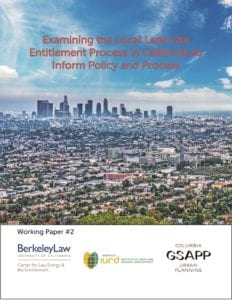 ability crisis has rightly received a great deal of attention by state lawmakers, the press, academics, and ordinary Californians. To better understand the legal mechanisms behind housing development, this phased research project joins legal research with qualitative research methods to examine land-use entitlement processes in selected high cost cities over a four-year period (2014-2017). This work explores the obstacles to increasing infill development—a necessary strategy to address the housing supply crisis while being sensitive to health and environmental concerns.
ability crisis has rightly received a great deal of attention by state lawmakers, the press, academics, and ordinary Californians. To better understand the legal mechanisms behind housing development, this phased research project joins legal research with qualitative research methods to examine land-use entitlement processes in selected high cost cities over a four-year period (2014-2017). This work explores the obstacles to increasing infill development—a necessary strategy to address the housing supply crisis while being sensitive to health and environmental concerns.
January 2019
Policy Brief: Low-Income Multifamily Energy Savings Retrofits: Solutions to Increase Access to Incentives and Unlock Benefits
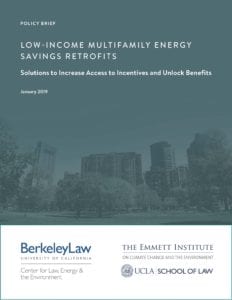 Improving the energy performance of existing buildings will be key to achieving California’s efficiency and greenhouse gas emission goals. But owners of low-income, multifamily buildings face some of the greatest obstacles, including difficult access to capital, complex financing arrangements, and competing renovation needs. While California’s energy regulators and electric utilities fund and operate a number of incentive and rebate programs, structural barriers have hampered progress, including strict income qualification criteria, energy data opacity, and the complexity of combining multiple incentives into one project.
Improving the energy performance of existing buildings will be key to achieving California’s efficiency and greenhouse gas emission goals. But owners of low-income, multifamily buildings face some of the greatest obstacles, including difficult access to capital, complex financing arrangements, and competing renovation needs. While California’s energy regulators and electric utilities fund and operate a number of incentive and rebate programs, structural barriers have hampered progress, including strict income qualification criteria, energy data opacity, and the complexity of combining multiple incentives into one project.
To address these challenges, UC Berkeley and UCLA Schools of Law are issuing a new policy brief based on two stakeholder convenings that identified policy solutions to address key barriers, increase access to energy efficiency incentives, and unlock environmental, financial, and quality-of-life benefits for owners and residents alike.
Looking Ahead to 2019
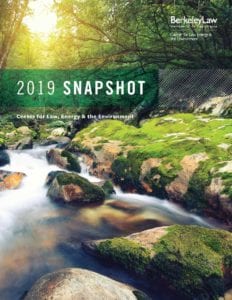 In 2018, we continued to examine how California can pioneer pragmatic climate solutions from sustainable freight to reducing vehicle emissions, analyzed Recharge Net Metering as an incentive for groundwater recharge, and explored the intersection of ocean governance and climate change. We also launched the Climate Risk Initiative, which aims to investigate how insurance and financial sectors are at risk due to climate change, and how policy can promote industry innovation and sustainable investments.
In 2018, we continued to examine how California can pioneer pragmatic climate solutions from sustainable freight to reducing vehicle emissions, analyzed Recharge Net Metering as an incentive for groundwater recharge, and explored the intersection of ocean governance and climate change. We also launched the Climate Risk Initiative, which aims to investigate how insurance and financial sectors are at risk due to climate change, and how policy can promote industry innovation and sustainable investments.
Read more about our work in 2018 and our plans for the future in our 2019 Snapshot.
—2018—
December 2018
Streamlining Sustainability: Regulatory and Permitting Improvements to Achieve California’s Freight Goals
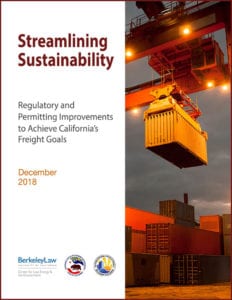 Freight is responsible for hundreds of thousands of jobs in California and feeds commerce and agriculture throughout the state and the entire nation. But the trains, trucks, aircraft, and ocean vessels that ship goods throughout California are responsible for a disproportionate amount of greenhouse gas emissions and harmful air pollutants.
Freight is responsible for hundreds of thousands of jobs in California and feeds commerce and agriculture throughout the state and the entire nation. But the trains, trucks, aircraft, and ocean vessels that ship goods throughout California are responsible for a disproportionate amount of greenhouse gas emissions and harmful air pollutants.
California’s freight system leaders will need to maximize its efficiency to retain this position of prominence while protecting California residents and workers. The recommendations outlined in Streamlining Sustainability can help California achieve its ambitious emission reduction, public health, and economic competitiveness goals.
November 2018
Priority Policy Solutions for California’s Next Governor
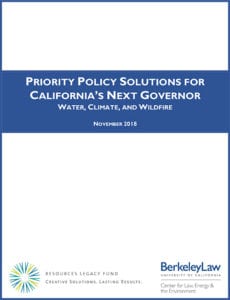 Climate change will exacerbate the droughts, floods, and wildfires that Californians already regularly experience, making them even more extreme and unpredictable. Gavin Newsom, California’s next governor, must prepare for these inevitable disasters while minimizing the greenhouse gas emissions of a society of nearly 40 million people.
Climate change will exacerbate the droughts, floods, and wildfires that Californians already regularly experience, making them even more extreme and unpredictable. Gavin Newsom, California’s next governor, must prepare for these inevitable disasters while minimizing the greenhouse gas emissions of a society of nearly 40 million people.
CLEE, together with Resources Legacy Fund (RLF), has prepared three sets of actions Governor-Elect Gavin Newsom could take immediately to address wildfire; drought, flood, and drinking water safety and affordability; and the stubbornly high carbon pollution from our transportation systems.
November 2018
A New Solar Landscape: Improving County-Level Landscape Planning for Utility-Scale Solar PV Facilities
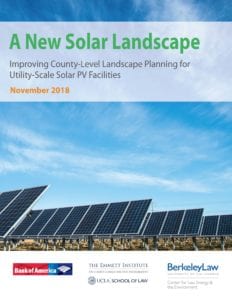 Senate Bill 100 (de Leon, 2018) requires California’s major utilities to obtain 60 percent of their electric power from renewable sources by 2030 and 100 percent from carbon-free sources by 2045. California has met and exceeded its renewable energy targets to date, with over one-third of the utilities’ electricity coming from renewable sources.
Senate Bill 100 (de Leon, 2018) requires California’s major utilities to obtain 60 percent of their electric power from renewable sources by 2030 and 100 percent from carbon-free sources by 2045. California has met and exceeded its renewable energy targets to date, with over one-third of the utilities’ electricity coming from renewable sources.
Our new report, A New Solar Landscape, offers a suite of policy solutions for incentivizing and improving landscape-level planning to meet California’s solar development goals.
October 2018
Implementing SB 743: An Analysis of Vehicle Miles Traveled Banking and Exchange Frameworks
California law requires developers of new projects, like apartment 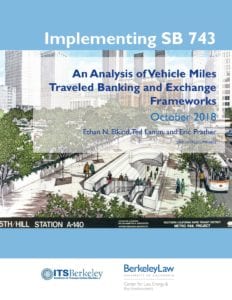 buildings, offices, and roads, to reduce the amount of overall traffic the projects generate. To facilitate compliance with this new requirement under Senate Bill 743 (Steinberg, 2013), some state and local leaders seek to create special “banks” or “exchanges” to allow developers to fund off-site projects that reduce driving miles, such as new bike lanes, transit, and busways.
buildings, offices, and roads, to reduce the amount of overall traffic the projects generate. To facilitate compliance with this new requirement under Senate Bill 743 (Steinberg, 2013), some state and local leaders seek to create special “banks” or “exchanges” to allow developers to fund off-site projects that reduce driving miles, such as new bike lanes, transit, and busways.
Our new report, Implementing SB 743, provides a comprehensive review of key considerations for local and regional agencies tasked with crafting these innovative mechanisms to reduce vehicle miles traveled (VMT) and overall emissions.
September 2018
100% Zero: Solutions to Achieve Universal Zero-Emission Vehicle Adoption
Some countries and states, including California, are contemplating or 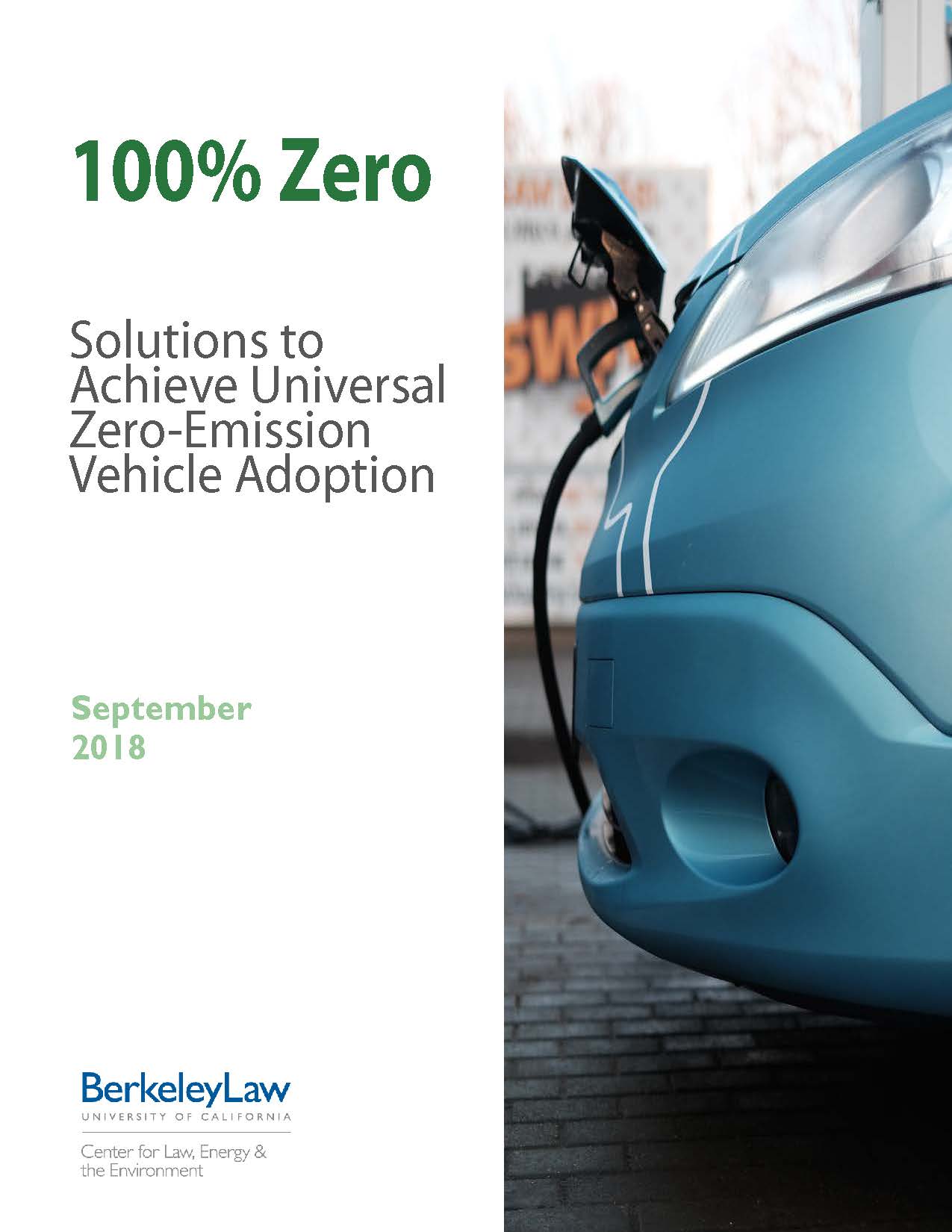 making plans for phase-outs or bans on the sale of new internal combustion engine passenger vehicles by a date certain. Such a phase-out would be critical to achieving long-term climate goals and improving public health.
making plans for phase-outs or bans on the sale of new internal combustion engine passenger vehicles by a date certain. Such a phase-out would be critical to achieving long-term climate goals and improving public health.
In California, the state will eventually need full consumer adoption of zero-emission vehicles in order to achieve legislated long-term climate goals. To that end, Governor Brown set a goal of reaching five million zero emission vehicles (ZEVs) on California’s roadways by 2030, including 250,000 public chargers by 2025, and as of mid-2018, Californians were driving over 400,000 electric vehicles.
100% Zero identifies key challenges and solutions to achieving a scenario in which 100 percent of new vehicle sales are zero-emission, based on a convening of expert stakeholders.
September 2018
Trial by Fire: Managing Climate Risks Facing Insurers in the Golden State
Climate change presents unprecedented risks to the insurance industry,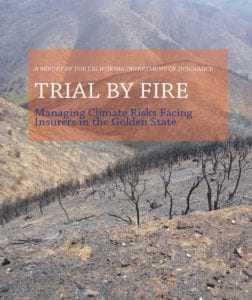 from increased wildfires and storm events to potential litigation and economic transitions. The industry faces these dynamic challenges at the same time that insurance products are becoming more necessary but less available and affordable.
from increased wildfires and storm events to potential litigation and economic transitions. The industry faces these dynamic challenges at the same time that insurance products are becoming more necessary but less available and affordable.
Our new report, Trial by Fire, documents the nature and extent of the risks faced by insurers and residents in California and offers a range of recommendations to protect the industry and the entire state in a changing climate.
August 2018
Addressing Institutional Vulnerabilities in California’s Drought Water Allocation
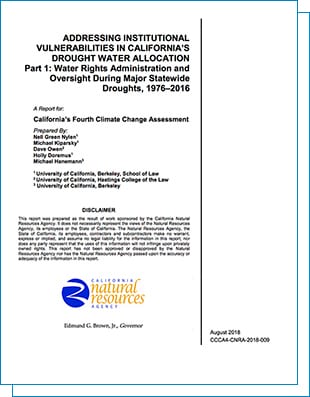 California droughts are likely to become more frequent, longer, and more intense in the future, posing increasing challenges for water management, and raising the stakes for effective drought response. Past droughts have stress tested California’s water management institutions, revealing vulnerabilities that could impair effective adaptation to climate change. In a pair of reports published as part of California’s Fourth Climate Change Assessment, we examine how the State Water Resources Control Board has carried out its water rights responsibilities during the last four major statewide droughts and offer recommendations for proactive steps the agency can take to improve its future drought response.
California droughts are likely to become more frequent, longer, and more intense in the future, posing increasing challenges for water management, and raising the stakes for effective drought response. Past droughts have stress tested California’s water management institutions, revealing vulnerabilities that could impair effective adaptation to climate change. In a pair of reports published as part of California’s Fourth Climate Change Assessment, we examine how the State Water Resources Control Board has carried out its water rights responsibilities during the last four major statewide droughts and offer recommendations for proactive steps the agency can take to improve its future drought response.
August 2018
When is Groundwater Recharge a Beneficial Use of Surface Water in California?
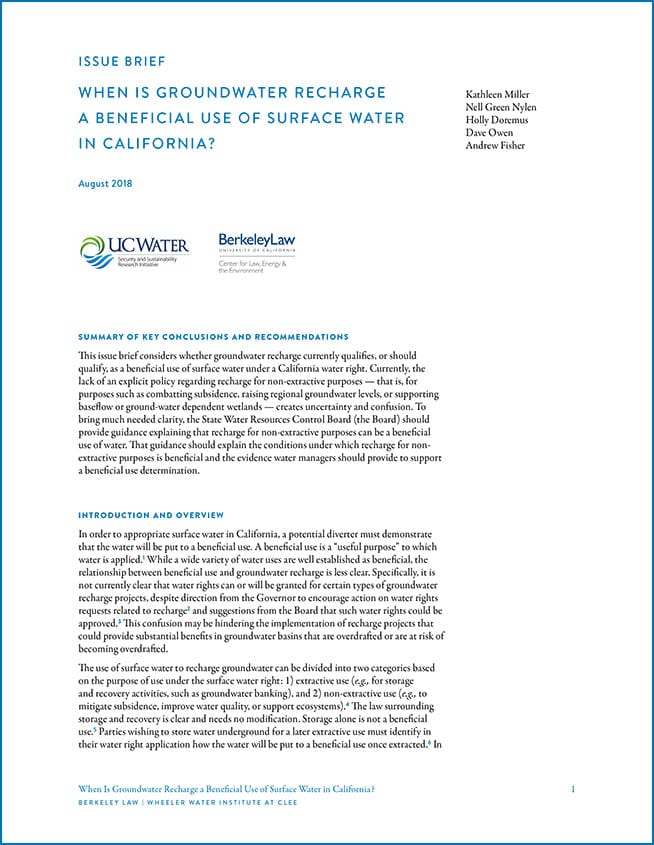 Recharge is increasingly recognized as a crucial component of achieving sustainably managed groundwater basins. However, there is uncertainty about whether groundwater recharge constitutes a beneficial use of surface water, and this perception may form a barrier to implementing new recharge projects. This Issue Brief assesses the current status of groundwater recharge in relation to the beneficial use doctrine and provides recommendations for clarifying current state policy in order to encourage recharge projects.
Recharge is increasingly recognized as a crucial component of achieving sustainably managed groundwater basins. However, there is uncertainty about whether groundwater recharge constitutes a beneficial use of surface water, and this perception may form a barrier to implementing new recharge projects. This Issue Brief assesses the current status of groundwater recharge in relation to the beneficial use doctrine and provides recommendations for clarifying current state policy in order to encourage recharge projects.
August 2018
Policy Solutions to Boost Zero-Emission Freight at Southern California’s Ports
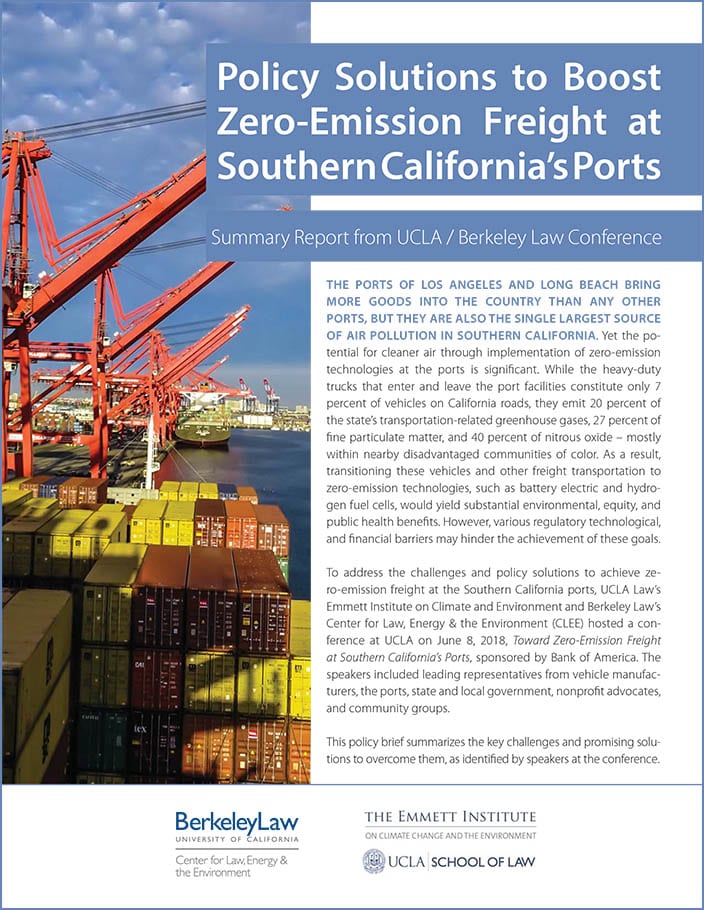 Transitioning freight transportation to zero-emission technologies would yield substantial environmental, equity, and public health benefits. However, various regulatory technological, and financial barriers hinder the achievement of these goals. To address the challenges and policy solutions to achieve zero- emission freight at the Southern California ports, UCLA Law’s Emmett Institute on Climate and Environment and the Center for Law, Energy & the Environment (CLEE) hosted a conference at UCLA on June 8, 2018, Toward Zero-Emission Freight at Southern California’s Ports. Our Summary Report outlines the main challenges and opportunities suggested in this day-long conference.
Transitioning freight transportation to zero-emission technologies would yield substantial environmental, equity, and public health benefits. However, various regulatory technological, and financial barriers hinder the achievement of these goals. To address the challenges and policy solutions to achieve zero- emission freight at the Southern California ports, UCLA Law’s Emmett Institute on Climate and Environment and the Center for Law, Energy & the Environment (CLEE) hosted a conference at UCLA on June 8, 2018, Toward Zero-Emission Freight at Southern California’s Ports. Our Summary Report outlines the main challenges and opportunities suggested in this day-long conference.
May 2018
LEARNING FROM CALIFORNIA’S EXPERIENCE WITH SMALL WATER SYSTEM CONSOLIDATIONS
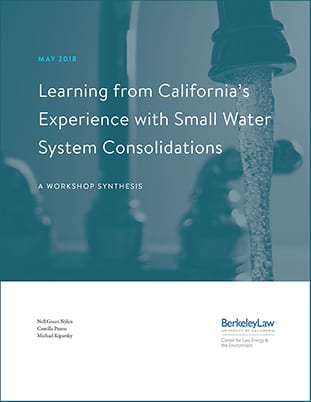 Water system consolidations address persistent water system inadequacies in small and disadvantaged communities. More than 100 consolidation projects have been completed or are ongoing in California, and many more communities are likely to pursue consolidations in the future. While consolidation offers may offer benefits for communities served by unreliable water systems, the costs and benefits associated with different consolidation options have not been well documented. This synthesis of our March 2018 workshop enumerates barriers to effective consolidations and identifies potential solutions for overcoming those barriers.
Water system consolidations address persistent water system inadequacies in small and disadvantaged communities. More than 100 consolidation projects have been completed or are ongoing in California, and many more communities are likely to pursue consolidations in the future. While consolidation offers may offer benefits for communities served by unreliable water systems, the costs and benefits associated with different consolidation options have not been well documented. This synthesis of our March 2018 workshop enumerates barriers to effective consolidations and identifies potential solutions for overcoming those barriers.
April 2018
Recharge Net Metering to Enhance Groundwater Sustainability
 Recharge Net Metering (ReNeM) is a strategy that incentivizes recharge by offsetting costs incurred by landowners for operation and maintenance of water collection and infiltration systems that are placed on their land. ReNeM participants benefit directly through the rebate program; they also benefit indirectly (along with other resource users and regional aquatic systems) because managed recharge helps to improve and sustain the supply and quality of groundwater. Our Issue Brief presents a concise conceptual description of ReNeM, as well as a brief account of its first implementation as a pilot program in the Pajaro Valley of California. Further research is ongoing.
Recharge Net Metering (ReNeM) is a strategy that incentivizes recharge by offsetting costs incurred by landowners for operation and maintenance of water collection and infiltration systems that are placed on their land. ReNeM participants benefit directly through the rebate program; they also benefit indirectly (along with other resource users and regional aquatic systems) because managed recharge helps to improve and sustain the supply and quality of groundwater. Our Issue Brief presents a concise conceptual description of ReNeM, as well as a brief account of its first implementation as a pilot program in the Pajaro Valley of California. Further research is ongoing.
April 2018
IMPROVING CALIFORNIA’S STREAM FLOW MONITORING SYSTEM
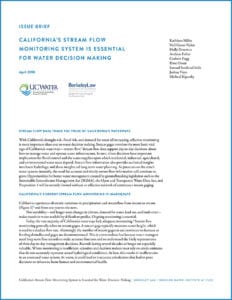 With California’s drought risk, flood risk, and demand for water all increasing, effective monitoring is more important than ever to water decision making. Stream gages monitor the most basic vital sign of California’s waterways—stream flow. Stream flow data support day-to-day decisions about how to manage water and operate water infrastructure—decisions that have important implications for flood control and the water supplies upon which residential, industrial, agricultural, and environmental water users depend. Stream flow information also provides technical insights into basin hydrology, and those insights aid long-term water planning. As pressures on the state’s water systems intensify, the need for accurate and timely stream flow information will continue to grow.
With California’s drought risk, flood risk, and demand for water all increasing, effective monitoring is more important than ever to water decision making. Stream gages monitor the most basic vital sign of California’s waterways—stream flow. Stream flow data support day-to-day decisions about how to manage water and operate water infrastructure—decisions that have important implications for flood control and the water supplies upon which residential, industrial, agricultural, and environmental water users depend. Stream flow information also provides technical insights into basin hydrology, and those insights aid long-term water planning. As pressures on the state’s water systems intensify, the need for accurate and timely stream flow information will continue to grow.
March 2018
DELIVERING THE GOODS: HOW CALIFORNIA CAN CREATE THE SUSTAINABLE FREIGHT SYSTEM OF THE FUTURE
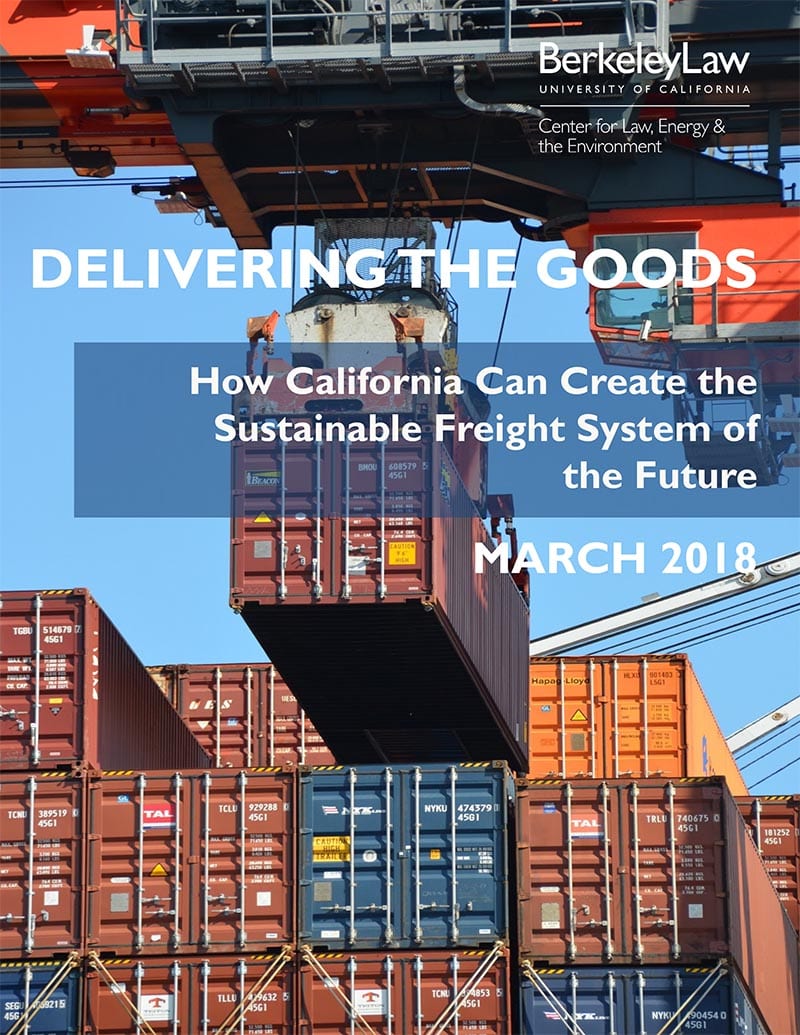 California’s freight system is responsible for 1/3 of statewide jobs, as well as a major source of both greenhouse gas emissions and local air pollution in the state. New innovations in technology and infrastructure have the potential to improve efficiency and reduce pollution, but policy and industry support will be essential to achieve California’s environmental goals. Our report identifies an expansive group of new freight transportation technologies and infrastructure developments and the policy innovations needed to make them reality in California.
California’s freight system is responsible for 1/3 of statewide jobs, as well as a major source of both greenhouse gas emissions and local air pollution in the state. New innovations in technology and infrastructure have the potential to improve efficiency and reduce pollution, but policy and industry support will be essential to achieve California’s environmental goals. Our report identifies an expansive group of new freight transportation technologies and infrastructure developments and the policy innovations needed to make them reality in California.
March 2018
Navigating Groundwater-Surface Water Interactions under the Sustainable Groundwater Management Act
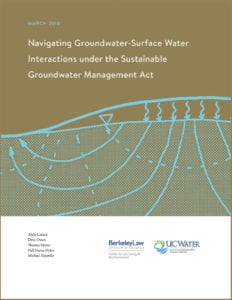 Our report examines the legal and institutional questions that will inevitably arise as newly formed groundwater sustainability agencies (GSAs) seek to address groundwater-surface water interactions under SGMA. The core goal of this report is to help parties identify and address these new questions, and ultimately allow GSAs and stakeholders to manage groundwater-surface water interactions proactively and effectively.
Our report examines the legal and institutional questions that will inevitably arise as newly formed groundwater sustainability agencies (GSAs) seek to address groundwater-surface water interactions under SGMA. The core goal of this report is to help parties identify and address these new questions, and ultimately allow GSAs and stakeholders to manage groundwater-surface water interactions proactively and effectively.
February 2018
BEYOND THE BELTWAY: A REPORT ON STATE ENERGY AND CLIMATE POLICIES
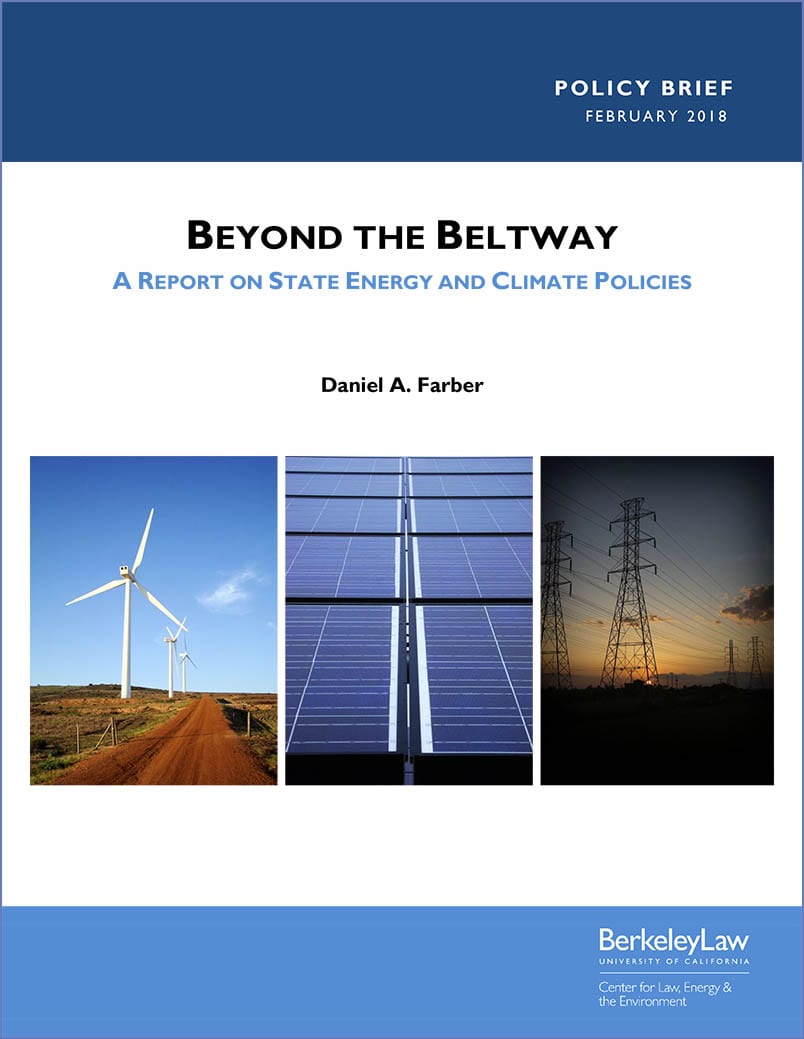 Federal policy receives the bulk of the nation’s attention to energy and climate matters, from President Obama’s Clean Power Plan to President Trump’s withdrawal from the Paris Agreement. But much of our nation’s energy and climate policy is made by governors, state legislatures and agencies across the country. Providing insight into the range of factors – political, geographical, economic and more – that determine the immensely varied state energy and climate policies across the nation, Beyond the Beltway is an analysis of the state and regional efforts driving the nation’s energy and climate outlook.
Federal policy receives the bulk of the nation’s attention to energy and climate matters, from President Obama’s Clean Power Plan to President Trump’s withdrawal from the Paris Agreement. But much of our nation’s energy and climate policy is made by governors, state legislatures and agencies across the country. Providing insight into the range of factors – political, geographical, economic and more – that determine the immensely varied state energy and climate policies across the nation, Beyond the Beltway is an analysis of the state and regional efforts driving the nation’s energy and climate outlook.
February 2018
Getting it Right: Examining the Local Land Use Entitlement Process in California to Inform Policy and Process
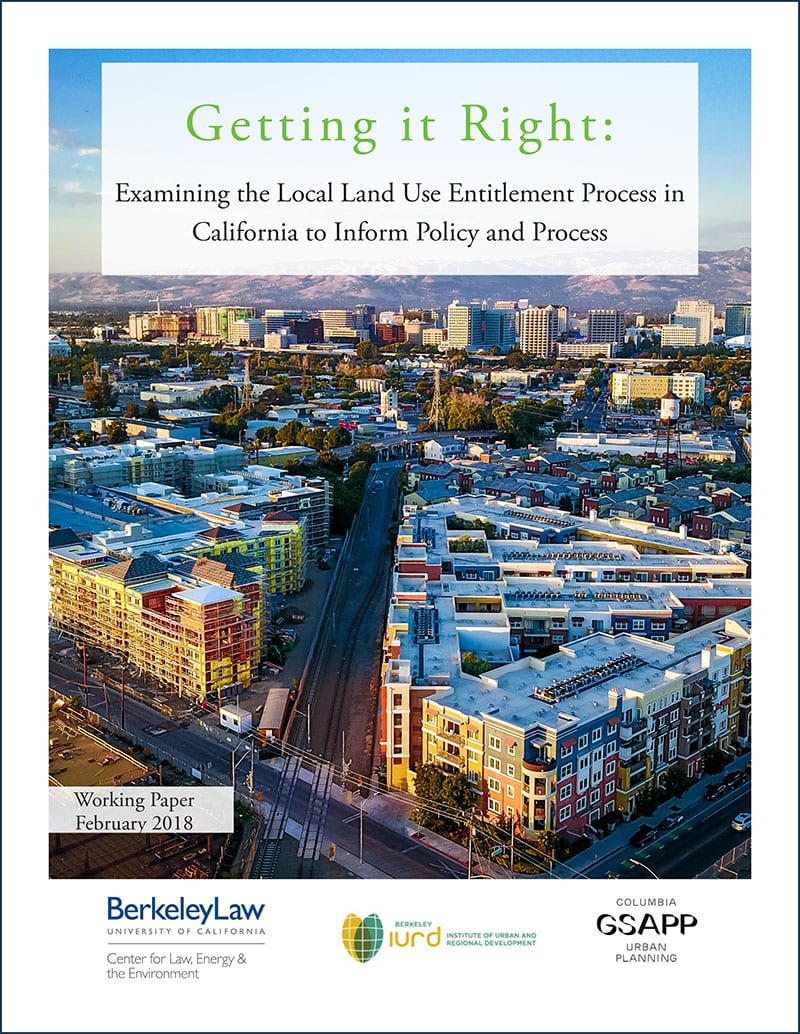 California’s housing crisis has rightly received a great deal of attention. One important question in this discussion asks whether CEQA or local land-use regulations constrain housing development. To answer this question, we collected data on all residential development projects over a three-year period in five Bay Area cities, analyzed laws applicable to the development of these projects, and interviewed important actors in the residential development process. We found that local governments are imposing discretionary review processes on all residential development projects of five or more units and that this triggers CEQA review.
California’s housing crisis has rightly received a great deal of attention. One important question in this discussion asks whether CEQA or local land-use regulations constrain housing development. To answer this question, we collected data on all residential development projects over a three-year period in five Bay Area cities, analyzed laws applicable to the development of these projects, and interviewed important actors in the residential development process. We found that local governments are imposing discretionary review processes on all residential development projects of five or more units and that this triggers CEQA review.
January 2018
Data for Water Decision Making: Informing the Implementation of California’s Open and Transparent Water Data Act through Research and Engagement
A lack of data and information has limited our ability to understand, let alone better manage, all aspects of our water resources. To address these issues, California passed AB1755 tasking the Department of Water Resources with the implementation of a modern water data information system. Our report seeks to inform the development of this system, arguing that simply providing more data is not enough, and that generating useful and useable information hinges on the development of data systems that begins with the needs of the end user.
Also see our op-ed in The Sacramento Bee
January 2018
Comment on Repeal of Carbon Pollution Emission Guidelines for Existing Stationary Sources
Submitted by Dan Farber & Kirsten Engel
Looking Ahead to 2018
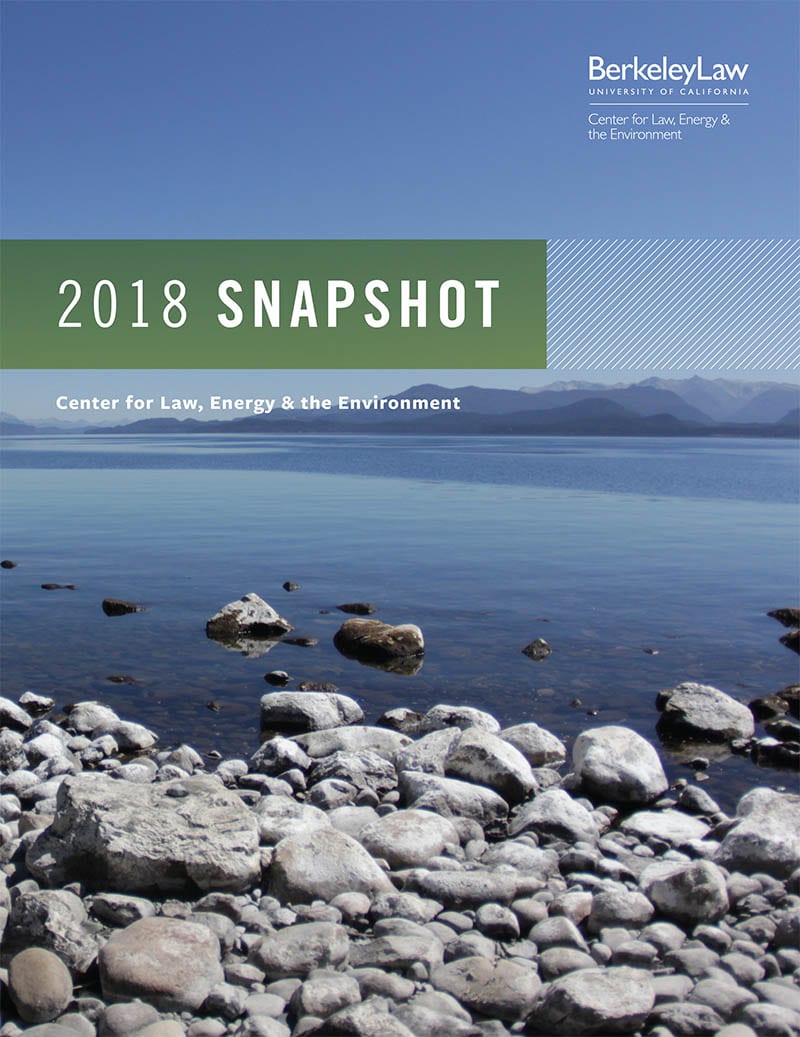 In 2017, we continued to support business efforts to help meet our clean energy goals, analyzed the implications of groundwater trading, and examined how international linkages can address the climate change impacts on our oceans. We also began an an initiative focused on the intersection between AI and the environment, and welcomed a Senior Visiting Fellow to examine how fossil fuel dependent states can better plan for long-term sustainability.
In 2017, we continued to support business efforts to help meet our clean energy goals, analyzed the implications of groundwater trading, and examined how international linkages can address the climate change impacts on our oceans. We also began an an initiative focused on the intersection between AI and the environment, and welcomed a Senior Visiting Fellow to examine how fossil fuel dependent states can better plan for long-term sustainability.
Read more about our work in 2017 and our plans for the future in our 2018 Snapshot.
—2017—
October 2017
Of Dreamliners and Drinking Water: Developing Risk Regulation and a Safety Culture for Direct Potable Reuse
Direct potable water reuse (DPR), the injection of highly purified wastewater into drinking water systems, is among the newest, and most controversial, methods for augmenting water supplies. This paper examines the notion that emerging regulation of DPR may lack sufficient attention to a particular class of risks: catastrophic risks with low probabilities of occurrence, but high consequences. We argue that proponents of DPR could benefit from proactively developing a safety culture in DPR utilities and establishing an effective industry-wide auditing organization that investigates unanticipated system failures.
August 2017
200 Days and Counting: Environmental Law & the Trump Administration
Stemming from a series of Legal Planet blog posts, Professors Eric Biber and Dan Farber, have published a brief analysis of the Trump Administration’s impact on environmental law at the 200 day marker. This timely report focuses on the mechanisms that Trump and congressional Republicans could use to attack the environment, along with methods of resisting their efforts. There are many different possibilities, each with its own potential results and its own procedures: : legislation, budget, enforcement, rule-making, executive orders, and state and local action.
August 2017
The Past, Present, and Future of California’s Coastal Act: Overcoming Division to Comprehensively Manage the Coast
California’s coastal management has enjoyed many collaborative successes and provided a model for other coastal states and nations. From surging seas to a growing population, changing conditions stress the state’s coastal governance systems and raise questions about the best path forward. How will California protect its coast against stronger storms and rising tides? How can the state ensure and support access to its coastline, including for underserved communities? And how can the state most effectively work with local, federal, and nongovernment partners to efficiently address these complex challenges? Emanating from our November 2016 symposium, this issue brief aims to address some of these questions.
August 2017
The Net Economic Impacts of California’s Major Climate Programs in the Inland Empire
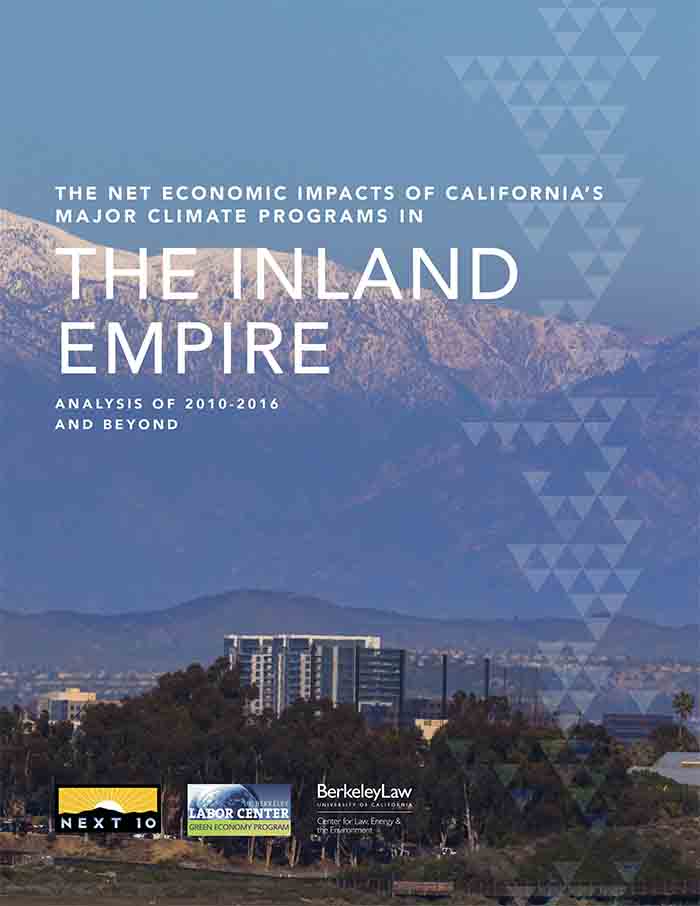 Following the state legislature’s landmark approval extending California’s cap-and-trade program through 2030, CLEE and our research partners have completed the first comprehensive, academic study of the economic effects of existing climate and clean energy policies in Southern California’s Inland Empire. We estimated a net economic of benefit of $9.1 billion and 41,000 new jobs created from 2010 to 2016 in the region, The study examines three key California climate and clean energy policies and their effects on Riverside and San Bernardino counties: 1) cap and trade; 2) the renewables portfolio standard (RPS), and 3) energy efficiency programs.
Following the state legislature’s landmark approval extending California’s cap-and-trade program through 2030, CLEE and our research partners have completed the first comprehensive, academic study of the economic effects of existing climate and clean energy policies in Southern California’s Inland Empire. We estimated a net economic of benefit of $9.1 billion and 41,000 new jobs created from 2010 to 2016 in the region, The study examines three key California climate and clean energy policies and their effects on Riverside and San Bernardino counties: 1) cap and trade; 2) the renewables portfolio standard (RPS), and 3) energy efficiency programs.
June 2017
Plugging Away: How to Boost Electric Vehicle Charging Infrastructure
California will need widespread consumer adoption of electric vehicles (EVs) in order to achieve the state’s environmental and energy goals. This will require a significant boost to EV charging infrastructure, particularly in workplaces, multi-unit dwellings, and fast charge “plazas.” This infrastructure deployment is unlikely to occur without policy action as charging stations and installation and maintenance typically entail high costs, with often uncertain revenues. To address the challenge, we convened experts from the EV charging sector, as well as government officials, academics, and nonprofit advocates to explore policy solutions.
June 2017
TRADING SUSTAINABLY: CRITICAL CONSIDERATIONS FOR LOCAL GROUNDWATER MARKETS UNDER THE SUSTAINABLE GROUNDWATER MANAGEMENT ACT
California’s Sustainable Groundwater Management Act (SGMA) potentially opens the door for local groundwater markets, however, it does not provide guidance about when a local groundwater market might be a useful and appropriate management tool. This report outlines a set of considerations designed to help decision makers and stakeholders evaluate whether a local groundwater market might be a viable tool for sustainably managing their groundwater basins and, if so, how to effectively implement it.
March 2017
Comments on the State Water Board Proposed Resolution for Comprehensive Response to Climate Change
Submitted by Alida Cantor, Michael Kiparsky, Nell Green Nylen, Holly Doremus, Leigh Bernacchi, Roger Bales, Graham Fogg, Andrew Fisher, Joshua Viers, David Sedlak, Jennifer Stokes-Draut, and Dave Owen
March 2017
Right Type, Right Place: Assessing the Environmental and Economic Impacts of Infill Residential Development through 2030
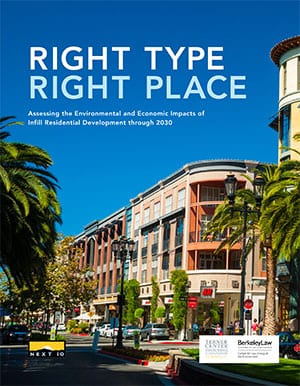 Our report Right Type, Right Place: Assessing the Environmental and Economic Impacts of Infill Residential Development through 2030 finds that encouraging new housing development in infill areas would spur economic growth, reduce monthly housing costs, and cut greenhouse gas emissions. A collaboration with the Terner Center for Housing Innovation at UC Berkeley and commissioned by Next 10, this is the first comprehensive academic study of its kind.
Our report Right Type, Right Place: Assessing the Environmental and Economic Impacts of Infill Residential Development through 2030 finds that encouraging new housing development in infill areas would spur economic growth, reduce monthly housing costs, and cut greenhouse gas emissions. A collaboration with the Terner Center for Housing Innovation at UC Berkeley and commissioned by Next 10, this is the first comprehensive academic study of its kind.
See the Op-Ed in the Capitol Weekly.
January 2017
The Economic Impacts of California’s Major Climate Programs on the San Joaquin Valley
Amid concerns about the economic and employment impacts of California’s ambitious climate policies, CLEE and its research partners have conducted the first comprehensive, academic study of the costs and benefits of these policies on the San Joaquin Valley. Together with UC Berkeley’s Donald Vial Center on Employment in the Green Economy, and working with the nonpartisan nonprofit Next 10, we found a total economic benefit of $13.4 billion in the Valley including the creation of tens of thousands of jobs.
See the Op-Ed in the Sacramento Bee.
—2016—
2016 Annual Report
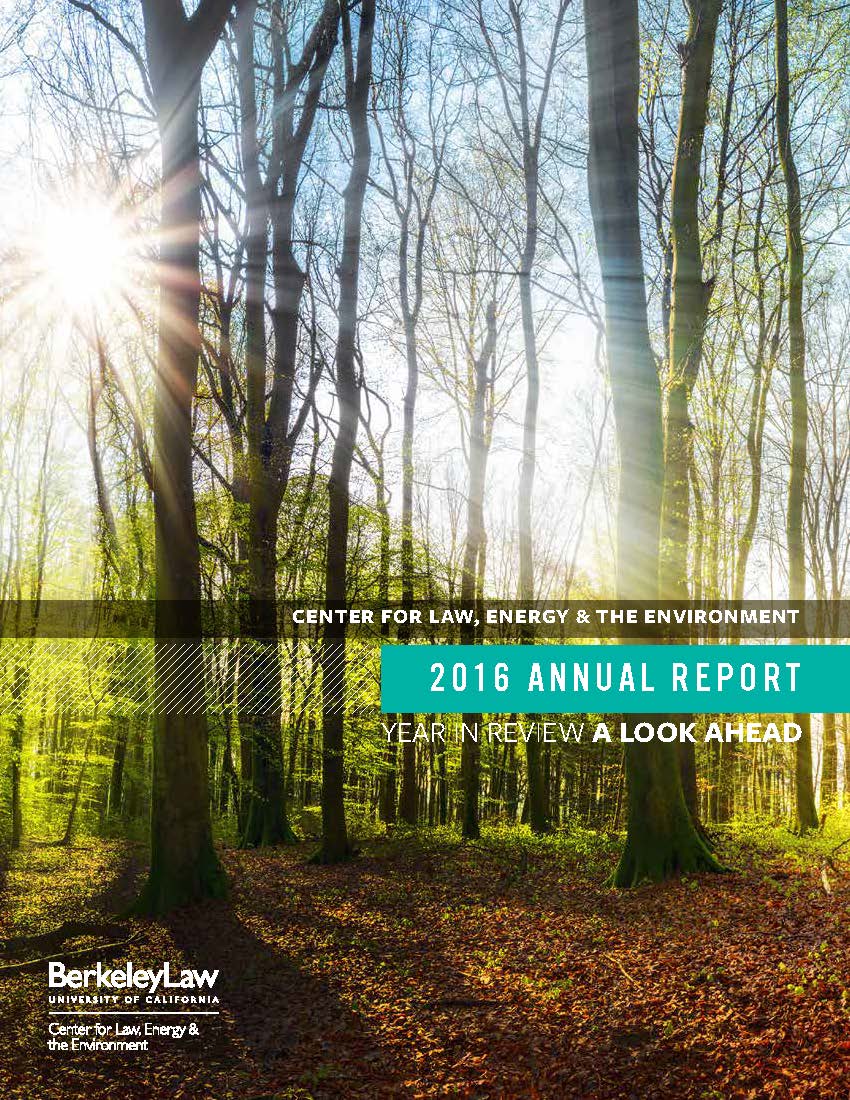 In 2016, our efforts focused on boosting businesses that help meet our clean energy goals, creating effective institutions for water conservation, implementing changes relating to the Law of the Sea, and examining tradeoffs related to land use. The Center released reports such as Powering the Savings: How California Can Tap the Energy Efficiency Potential in Existing Commercial Buildings and A Path Forward: Identifying Least-Conflict Solar PV Development in California’s San Joaquin Valley.
In 2016, our efforts focused on boosting businesses that help meet our clean energy goals, creating effective institutions for water conservation, implementing changes relating to the Law of the Sea, and examining tradeoffs related to land use. The Center released reports such as Powering the Savings: How California Can Tap the Energy Efficiency Potential in Existing Commercial Buildings and A Path Forward: Identifying Least-Conflict Solar PV Development in California’s San Joaquin Valley.
Read more in our Annual Report.
August 2016
Unanswered questions for implementation of the Sustainable Groundwater Management Act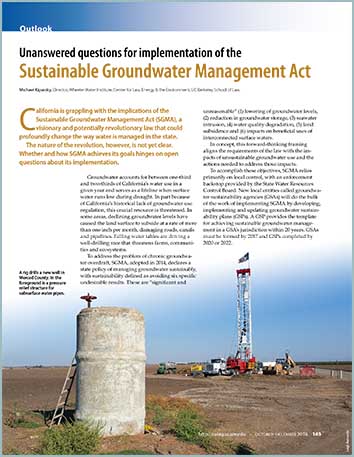
California is grappling with the implications of the Sustainable Groundwater Management Act (SGMA), a visionary and potentially revolutionary law that could profoundly change the way water is managed in the state. The nature of the revolution, however, is not yet clear. Whether and how SGMA achieves its goals hinges on open questions about its implementation.
October 2016
Comments on the California State Water Resources Control Board’s Dry Year Report
Submitted by Nell Green Nylen, Holly Doremus, Michael Hanemann, Michael Kiparsky, Rapichan Phurisamban, and Hayley Oveson
May 2016
A Path Forward: Identifying Least-Conflict Solar PV Development in California’s San Joaquin Valley
California’s push to achieve 50 percent of our electricity from renewable so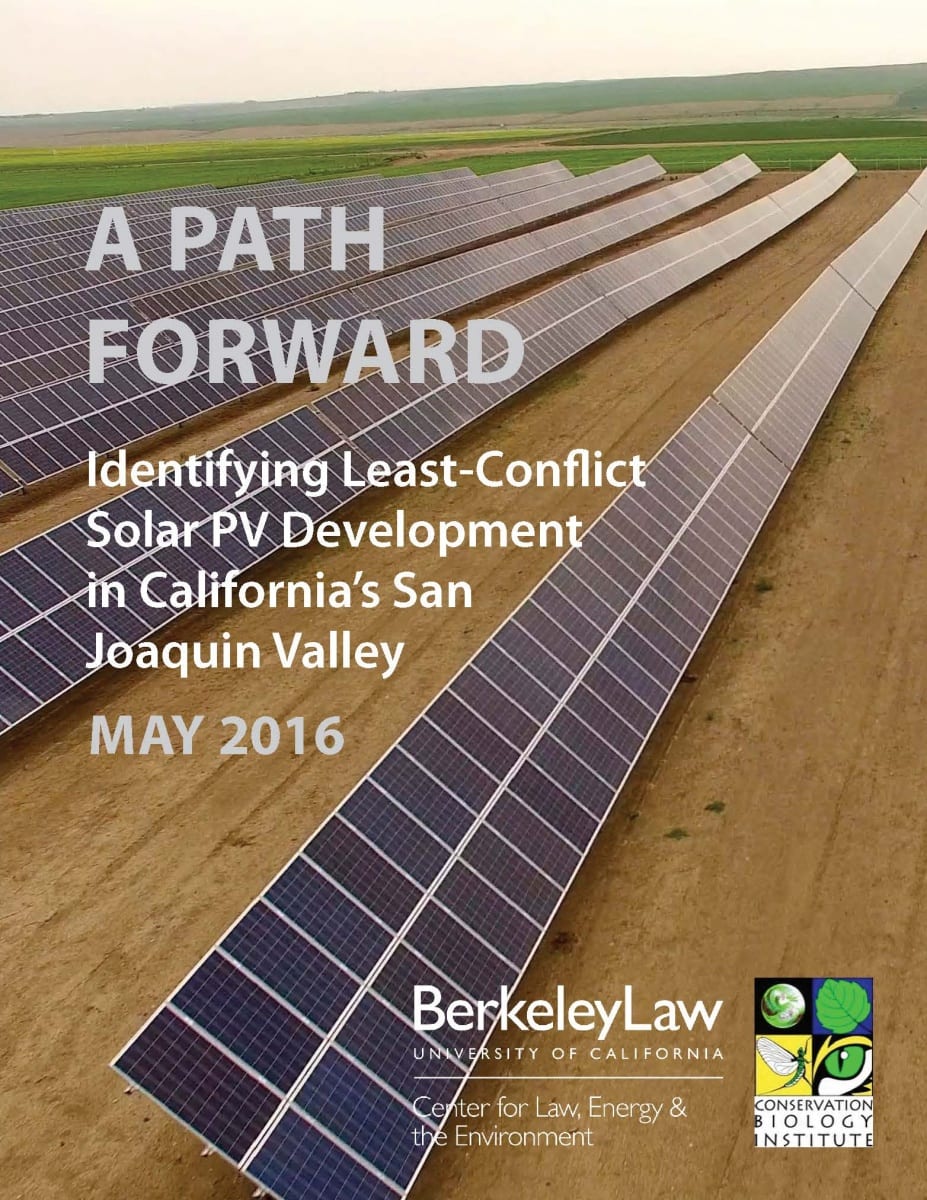 urces by 2030 will entail a significant deployment of large-scale solar photovoltaic (PV) installations. I places like the San Joaquin Valley, proposed installations have engendered conflicts with agricultural and conservation groups, who fear a resulting loss of valuable lands and the species, farming and ranching that depend on them. Berkeley Law’s Center for Law, Energy and the Environment (CLEE) and our partners developed a new process to find “least-conflict” lands in the eight-county San Joaquin Valley region.
urces by 2030 will entail a significant deployment of large-scale solar photovoltaic (PV) installations. I places like the San Joaquin Valley, proposed installations have engendered conflicts with agricultural and conservation groups, who fear a resulting loss of valuable lands and the species, farming and ranching that depend on them. Berkeley Law’s Center for Law, Energy and the Environment (CLEE) and our partners developed a new process to find “least-conflict” lands in the eight-county San Joaquin Valley region.
Also see the Op-Ed in Capitol Weekly
May 2016
Wasting Opportunities: How to Secure Environmental & Clean Energy Benefits from Municipal Solid Waste Energy Recovery
Californians send 30 million tons of waste to landfills annually. While 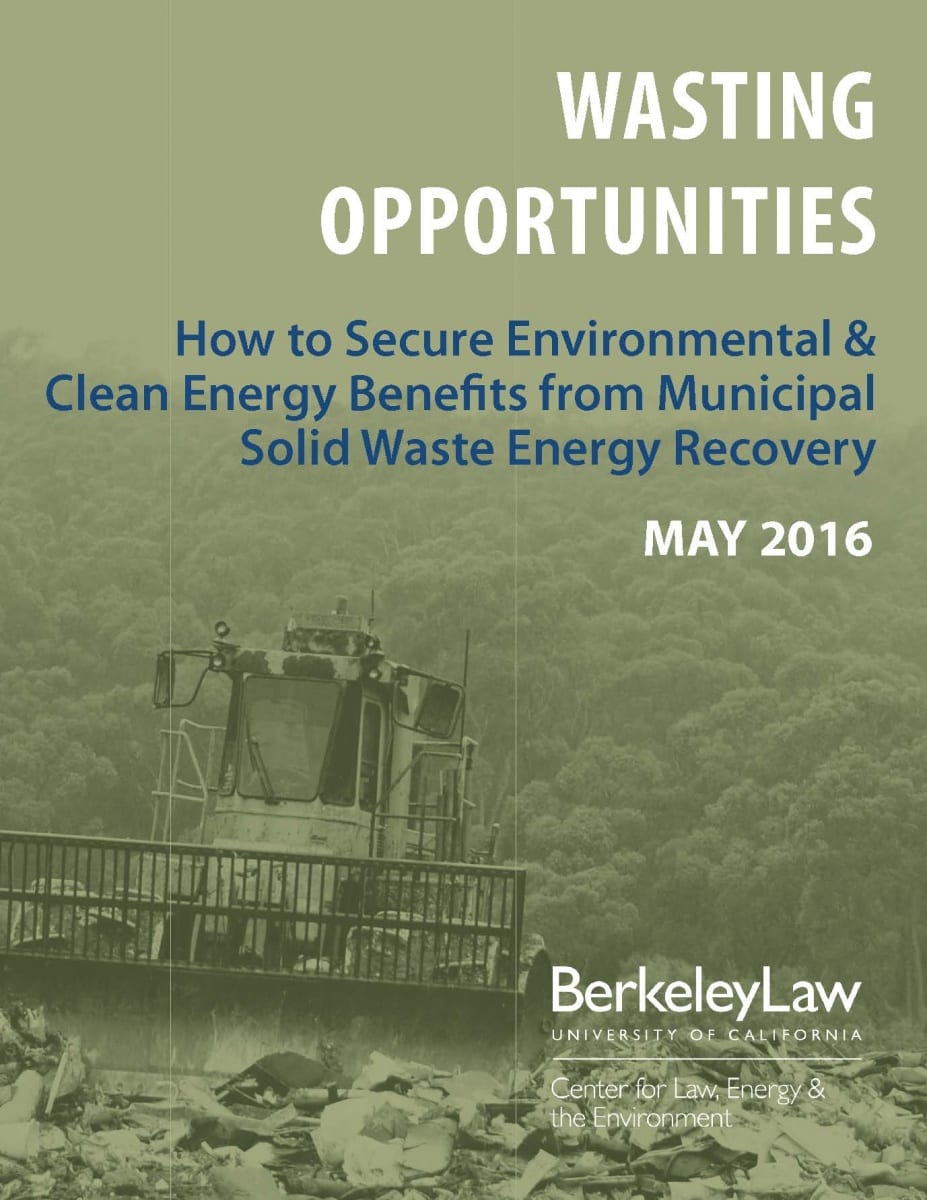 reduction, recycling and composting can do their part, not all types of materials can be practically and economically recycled in an environmentally beneficial manner. This leftover trash stream may therefore present an opportunity to recover energy, using new and possibly cleaner technologies. However, California lacks an agreed-upon set of standards for measuring and balancing the life-cycle costs and benefits of various waste management methods. This report recommends solutions to address this challenge.
reduction, recycling and composting can do their part, not all types of materials can be practically and economically recycled in an environmentally beneficial manner. This leftover trash stream may therefore present an opportunity to recover energy, using new and possibly cleaner technologies. However, California lacks an agreed-upon set of standards for measuring and balancing the life-cycle costs and benefits of various waste management methods. This report recommends solutions to address this challenge.
April 2016
Comments on the California Department of Water Resources Sustainable Groundwater Management Act Draft Emergency Regulations for Groundwater Sustainability Plans and Alternatives
Submitted by Michael Kiparsky, Dave Owen, and Nell Green Nylen
April 2016
Citizen Enforcement and Sanitary Sewer Overflows in California
Sanitary sewer overflows (SSOs) that reach waterways or violate discharge 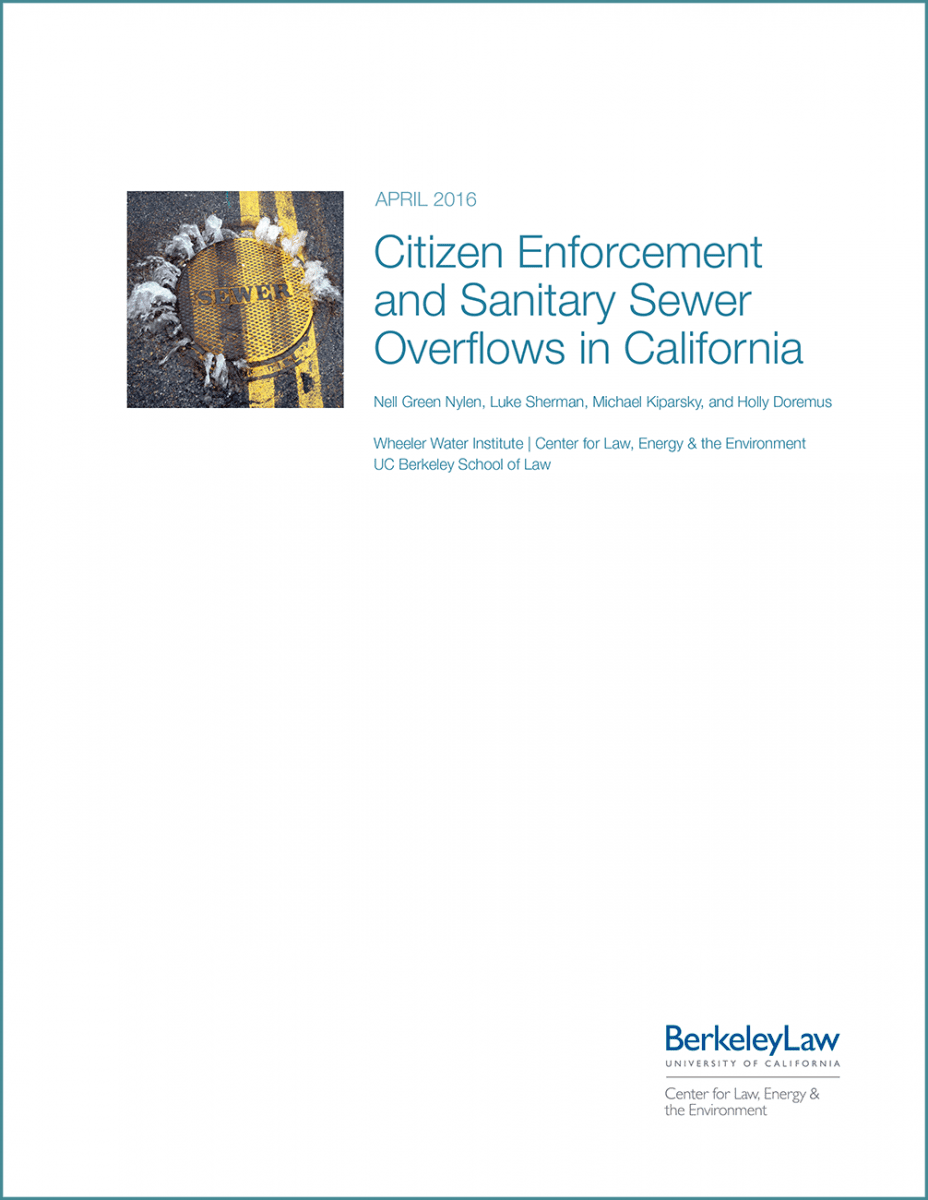 permits are considered violations of the Clean Water Act. While the government is responsible for enforcement, the CWA’s citizen suit provision allows individuals or groups to address gaps in enforcement. Public collection system agencies and environmental groups have widely divergent perceptions of the effectiveness and appropriateness of SSO-related citizen enforcement. Motivated by this controversy and the lack of data-driven analysis, our report assembles data to examine these enforcement actions in California.
permits are considered violations of the Clean Water Act. While the government is responsible for enforcement, the CWA’s citizen suit provision allows individuals or groups to address gaps in enforcement. Public collection system agencies and environmental groups have widely divergent perceptions of the effectiveness and appropriateness of SSO-related citizen enforcement. Motivated by this controversy and the lack of data-driven analysis, our report assembles data to examine these enforcement actions in California.
March 2016
Powering the Savings: How California Can Tap the Energy Efficiency Potential in Existing Commercial Buildings
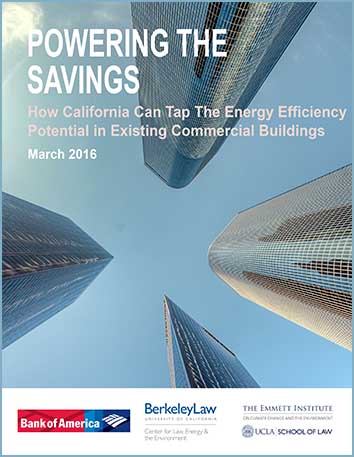 Reducing the energy demand from existing buildings, such as through efficient lighting and heating and cooling systems, represents one of the most cost-effective ways to reduce pollution and increase economic savings. To develop a vision and policies for encouraging deep energy efficiency retrofits, a group of energy retrofit company representatives, finance experts, public officials, utility leaders, and other energy experts gathered for a discussion. The participants envisioned California transitioning away from the complex, consumer financed energy efficiency retrofit model and toward simpler approaches that rely on emerging technologies that meter energy savings.
Reducing the energy demand from existing buildings, such as through efficient lighting and heating and cooling systems, represents one of the most cost-effective ways to reduce pollution and increase economic savings. To develop a vision and policies for encouraging deep energy efficiency retrofits, a group of energy retrofit company representatives, finance experts, public officials, utility leaders, and other energy experts gathered for a discussion. The participants envisioned California transitioning away from the complex, consumer financed energy efficiency retrofit model and toward simpler approaches that rely on emerging technologies that meter energy savings.
See the Op-Ed in the Sacramento Bee.
March 2016
Designing Effective Groundwater Sustainability Agencies: Criteria for Evaluation of Local Governance Options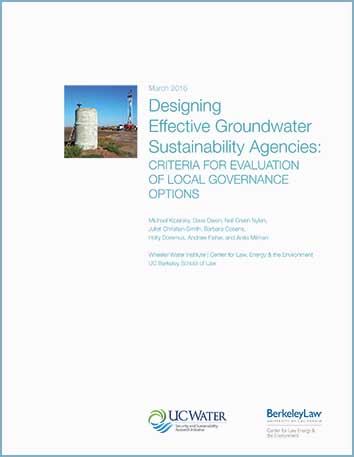
A new law requires California governments to form dozens of new agencies to manage groundwater. However, the law does not give them specific direction on what they will need to do, or how they can set themselves up for success. To address the need for guidance, we developed a framework to help these agencies prepare to manage this critical resource for the first time.
See the Op-Ed in The Fresno Bee.
March 2016
Barriers to Innovation in Urban Wastewater Utilities: Attitudes of Managers in California
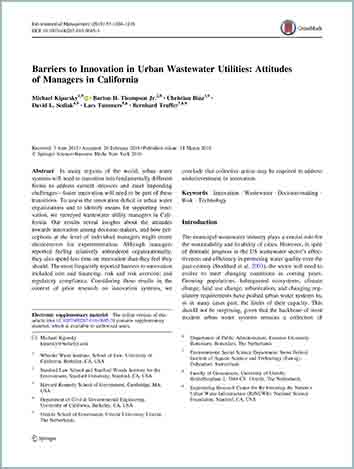 This report details an innovation deficit in ur ban wastewater utilities and highlights key barriers to innovation among wastewater managers. Understanding these barriers and working to overcome them will be crucial for California’s long-term water and environmental security. The most frequently reported barriers to innovation included cost and financing; risk and risk aversion; and regulatory compliance.
This report details an innovation deficit in ur ban wastewater utilities and highlights key barriers to innovation among wastewater managers. Understanding these barriers and working to overcome them will be crucial for California’s long-term water and environmental security. The most frequently reported barriers to innovation included cost and financing; risk and risk aversion; and regulatory compliance.
—2015—
2015 Annual Report
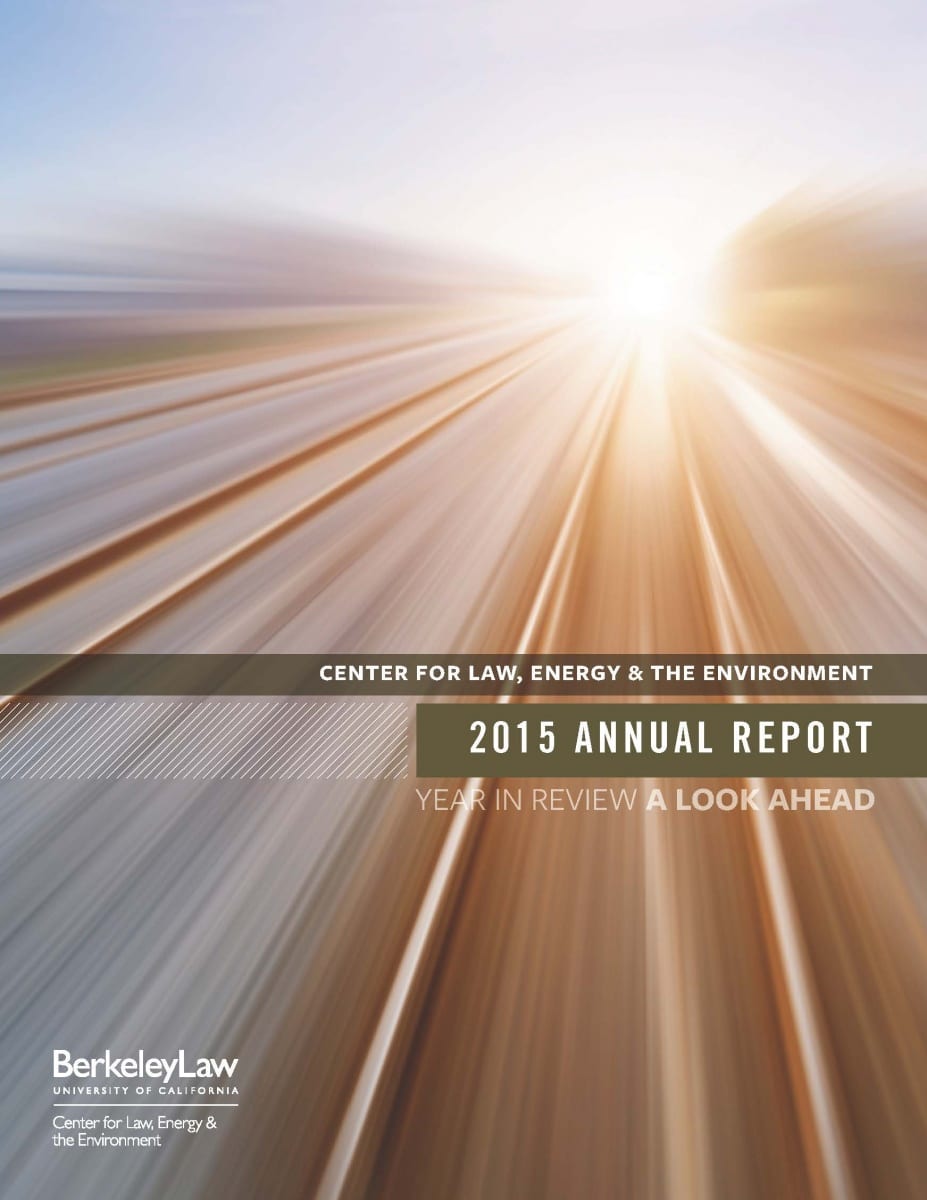 In 2015, our efforts focused on projects such as Climate Actions for California, California’s rail, UC water security and sustainability initiative, and the Law of the Sea 50th anniversary. Our climate and energy program continued its work on climate change and business initiative, and also released Climate Actions for California: Recommendations for Governor Jerry Brown’s Final Term. In 2015, the Center continued its efforts to advance sustainable land use around California’s major urban transit systems. In 2015 the Wheeler Water Institute saw progress in all three of its focal initiatives.
In 2015, our efforts focused on projects such as Climate Actions for California, California’s rail, UC water security and sustainability initiative, and the Law of the Sea 50th anniversary. Our climate and energy program continued its work on climate change and business initiative, and also released Climate Actions for California: Recommendations for Governor Jerry Brown’s Final Term. In 2015, the Center continued its efforts to advance sustainable land use around California’s major urban transit systems. In 2015 the Wheeler Water Institute saw progress in all three of its focal initiatives.
Read more in our Annual Report.
December 2015
Climate Actions for California: Recommendations for Governor Brown’s Final Term
California has made landmark progress reducing carbon emissions while 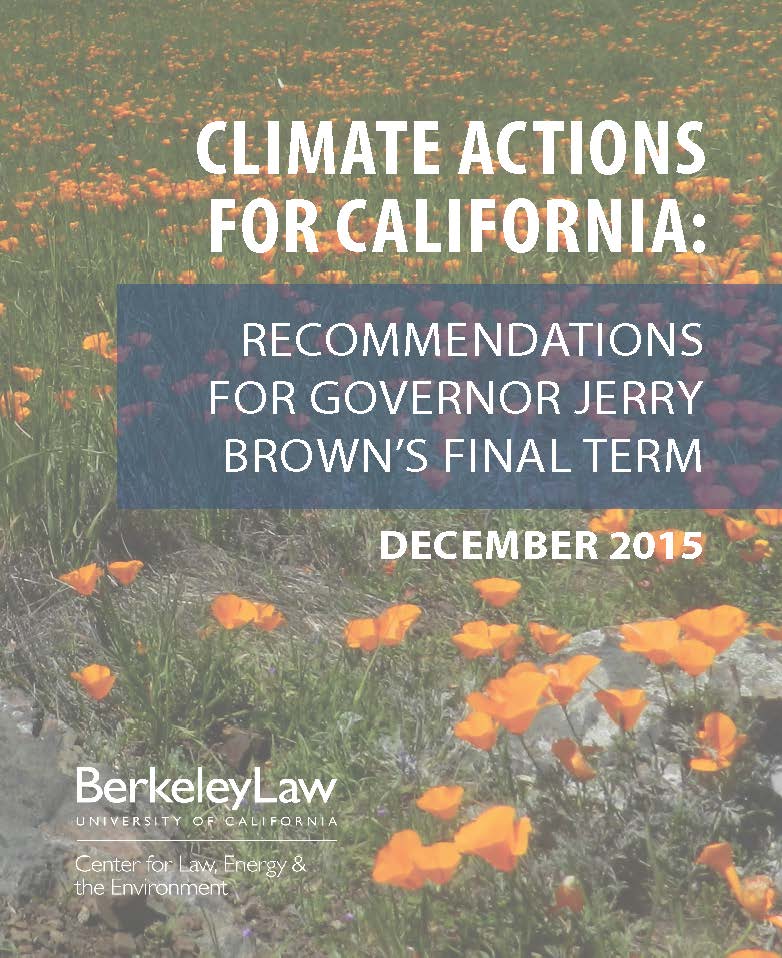 growing the economy, but the state’s work to reduce greenhouse gas emissions is just beginning. With just over three years remaining in Governor Brown’s final term, the new report Climate Actions For California: Recommendations for Governor Jerry Brown’s Final Term details immediate steps that administration leaders, environmental and energy advocates, and other stakeholders can take to achieve additional short-term successes and create a foundation for long-term progress that endures beyond the administration.
growing the economy, but the state’s work to reduce greenhouse gas emissions is just beginning. With just over three years remaining in Governor Brown’s final term, the new report Climate Actions For California: Recommendations for Governor Jerry Brown’s Final Term details immediate steps that administration leaders, environmental and energy advocates, and other stakeholders can take to achieve additional short-term successes and create a foundation for long-term progress that endures beyond the administration.
December 2015
Planting Fuels: How California Can Boost Local, Low-Carbon Biofuel Production
The report suggests policies that could boost local production of low-carbon b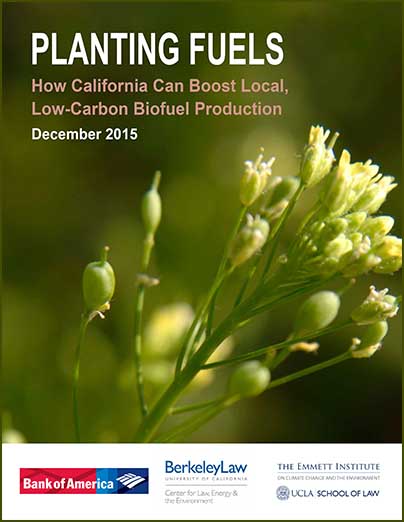 iofuel, which can reduce emissions through shorter feedstock transportation routes, development of carbon reducing co-products like biochar compost, and reduced wildfire risk. Local production can provide jobs and revenue in otherwise economically challenged parts of the state, harvesting biofuel feedstocks from a variety of renewable sources, including corn, sugarcane and food waste, among others.
iofuel, which can reduce emissions through shorter feedstock transportation routes, development of carbon reducing co-products like biochar compost, and reduced wildfire risk. Local production can provide jobs and revenue in otherwise economically challenged parts of the state, harvesting biofuel feedstocks from a variety of renewable sources, including corn, sugarcane and food waste, among others.
See the Op-Ed in the Sacramento Bee.
November 2015
Grading California’s Rail Transit Station Areas
A new analysis of California’s rail transit systems discovers which transit 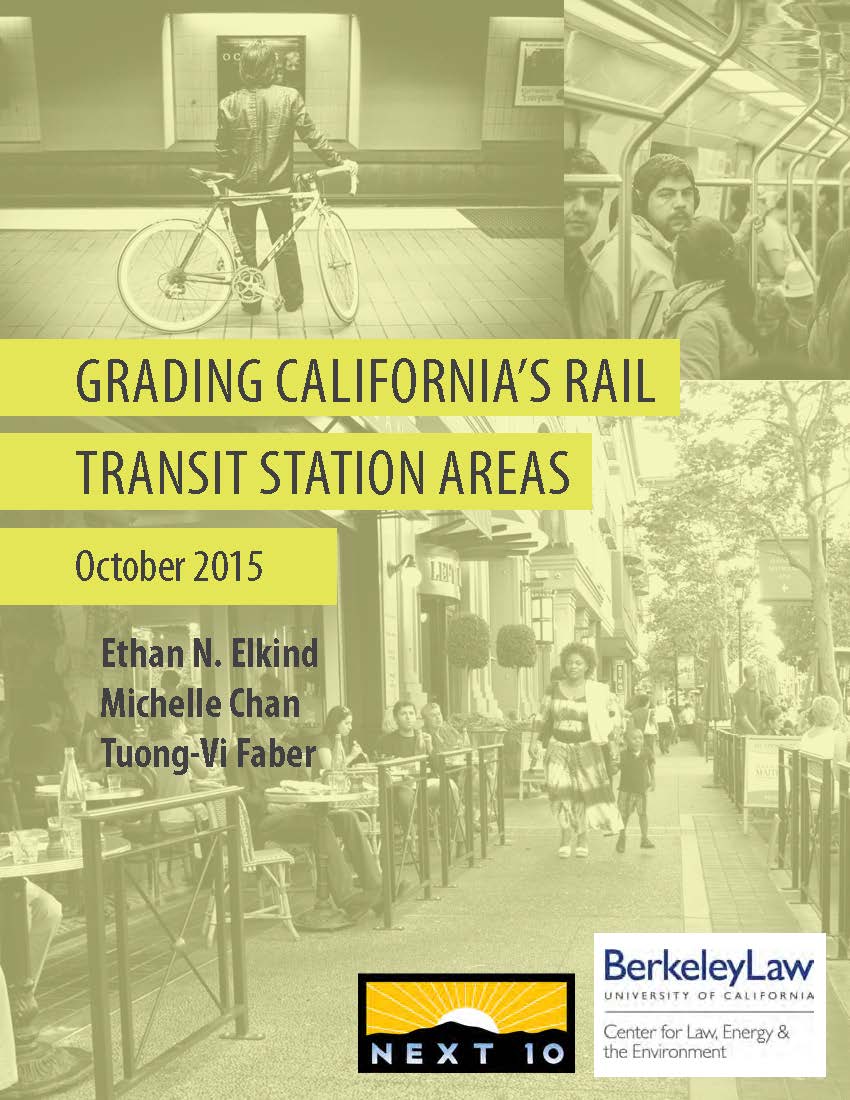 stations serve as hubs of thriving, walkable areas that encourage residents and workers alike to ride the train, and which station areas need improvement. The report divided rail transit station areas into three types: residential, employment, and mixed, and calculated grades based on 11 key indicators including walkability, ridership levels, existing land-use and permitting policies, affordability and transit quality.
stations serve as hubs of thriving, walkable areas that encourage residents and workers alike to ride the train, and which station areas need improvement. The report divided rail transit station areas into three types: residential, employment, and mixed, and calculated grades based on 11 key indicators including walkability, ridership levels, existing land-use and permitting policies, affordability and transit quality.
See the article in the Los Angeles Times.
February 2015
Accelerating Cost-Effective Green Stormwater Infrastructure: Learning from Local Implementation
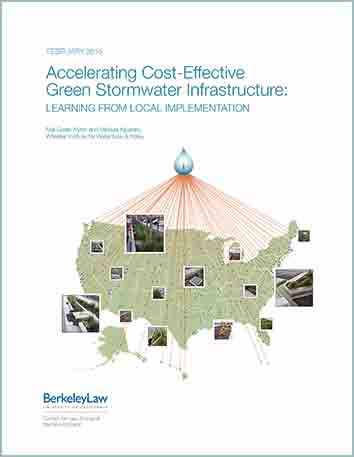 Ineffective stormwater management is a serious problem nationwide. Conventional strategies based around “gray” collection and conveyance systems have not solved persistent stormwater problems. Instead they have shifted, and in many cases exacerbated, the impacts. Communities searching for cost-effective solutions are increasingly recognizing the benefits of an approach that employs a mix of stormwater control measures, including green stormwater infrastructure (GSI). Well-implemented GSI keeps stormwater local. This report outlines key actions regulators can take to drive GSI information collection and sharing to accelerate cost-effective GSI deployment.
Ineffective stormwater management is a serious problem nationwide. Conventional strategies based around “gray” collection and conveyance systems have not solved persistent stormwater problems. Instead they have shifted, and in many cases exacerbated, the impacts. Communities searching for cost-effective solutions are increasingly recognizing the benefits of an approach that employs a mix of stormwater control measures, including green stormwater infrastructure (GSI). Well-implemented GSI keeps stormwater local. This report outlines key actions regulators can take to drive GSI information collection and sharing to accelerate cost-effective GSI deployment.
February 2015
Moving Dollars: Aligning Transportation Spending With California’s Environmental Goals
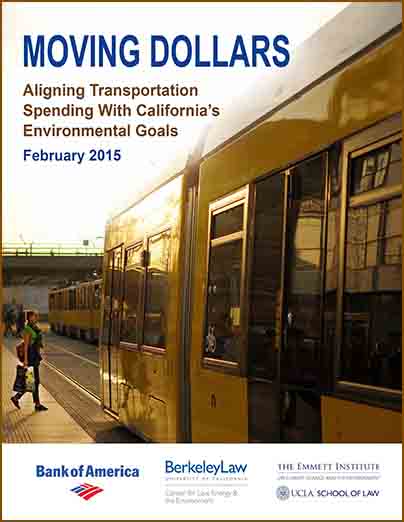 California’s state, regional and local governments spend roughly $28 billion a year on transportation infrastructure projects, with almost half of that amount derived from local funding sources. However, the continued, predominant financial support for automobile infrastructure, particularly new road and highway expansion projects, undermines California’s environmental goals. To develop a vision and policies for moving a greater share of state transportation dollars to projects and outcomes that are more cost-effective and better aligned with environmental goals, a group of transportation advocates, experts and public officials gathered at the University of California, Los Angeles in October 2014.
California’s state, regional and local governments spend roughly $28 billion a year on transportation infrastructure projects, with almost half of that amount derived from local funding sources. However, the continued, predominant financial support for automobile infrastructure, particularly new road and highway expansion projects, undermines California’s environmental goals. To develop a vision and policies for moving a greater share of state transportation dollars to projects and outcomes that are more cost-effective and better aligned with environmental goals, a group of transportation advocates, experts and public officials gathered at the University of California, Los Angeles in October 2014.
January 2015
Ex Parte Requirements at the California Public Utilities Commission: A Comparative Analysis and Recommended Changes
Emails released beginning in the fall of 2014 demonstrate several improper private communications between high-level utility officials and decision-makers at the California Public Utility Commission (“CPUC”). In the judicial and adjudicatory context, courts, legislatures and public agencies have long prohibited private communications with decision-makers to ensure a fair outcome and preserve the integrity of governmental action. To restore the integrity of the CPUC’s process, the agency and the legislature should change the applicable rules.
January 2015
Knowledge Is Power: How Improved Energy Data Access Can Bolster Clean Energy Technologies & Save Money
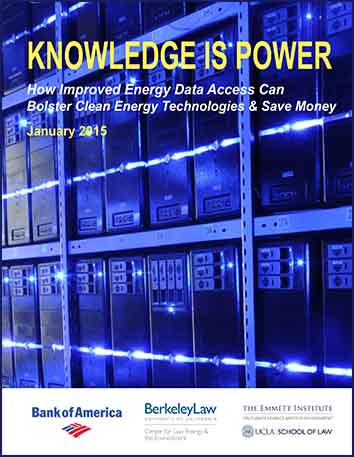 Every day, California’s residents, electric utilities, government agencies, and ratepayers generate and collect energy and market data. To develop a vision for policies that make energy data more accessible and secure, clean technology leaders and public officials gathered at the University of California, Berkeley School of Law in July 2014 for a discussion sponsored by Berkeley Law and the University of California, Los Angeles School of Law. The group envisioned expanded energy data access for both customers and clean technology vendors, with select types of data housed at independent, secure data centers. Energy data would be bifurcated into two categories: utility-centered and customer-centered data.
Every day, California’s residents, electric utilities, government agencies, and ratepayers generate and collect energy and market data. To develop a vision for policies that make energy data more accessible and secure, clean technology leaders and public officials gathered at the University of California, Berkeley School of Law in July 2014 for a discussion sponsored by Berkeley Law and the University of California, Los Angeles School of Law. The group envisioned expanded energy data access for both customers and clean technology vendors, with select types of data housed at independent, secure data centers. Energy data would be bifurcated into two categories: utility-centered and customer-centered data.
—2014—
2014 Annual Report
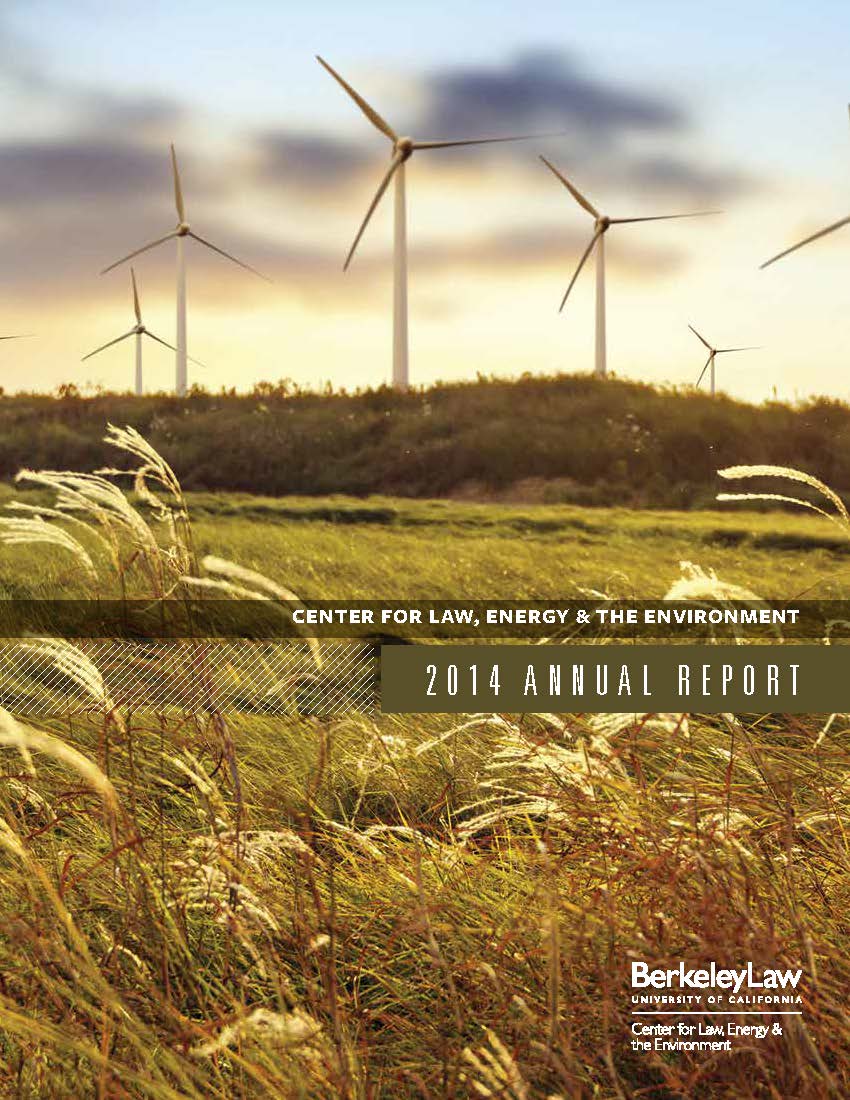 In 2014, our efforts focused on several key challenges concerning climate change mitigation, renewable energy acceleration, innovation in water management, and marine governance. Berkeley’s faculty, staff, and student research assistants produced in-depth analyses and convened working groups and conferences to further discussion in these and other areas of pressing need. At the same time, exceptional Berkeley Law students continued the school’s tradition of student-led initiatives and were digging into issues both inside and outside of the classroom, hosting events and providing inspiration to all through their talent and energy.
In 2014, our efforts focused on several key challenges concerning climate change mitigation, renewable energy acceleration, innovation in water management, and marine governance. Berkeley’s faculty, staff, and student research assistants produced in-depth analyses and convened working groups and conferences to further discussion in these and other areas of pressing need. At the same time, exceptional Berkeley Law students continued the school’s tradition of student-led initiatives and were digging into issues both inside and outside of the classroom, hosting events and providing inspiration to all through their talent and energy.
Read more in our Annual Report.
December 2014
Integrating Solar PV and Distributed Renewable Energy Policies and Programs into California City and County General Plans
Local governments are the primary permitting entities for renewable energy generation facilities in California. Despite the recent surge in the renewable energy market, California’s diverse communities are at different stages in establishing planning and permitting programs, and all communities can work to facilitate faster development of this vital sector. This guidance document, with model general plan policies, was created for the Governor’s Office of Planning and Research (OPR). The goal is to help local governments streamline their permitting processes for two types of distributed renewable energy projects.
September 2014
Integrating Infill Planning in California’s General Plans: A Policy Roadmap Based on Best-Practice Communities
The California Governor’s Office of Planning and Research (OPR) and the Center for Law, Energy and the Environment (CLEE) at the University of California, Berkeley School of Law developed this document as a resource for communities that want to pursue an infill development strategy. The “best” strategy for a community must necessarily reflect local conditions, assets, and priorities. Rather than provide “one size fits all” strategies, this document identifies a range of useful strategies to allow communities to choose the policy and program options that are best suited to local circumstances.
September 2014
Reuse and Repower: How to Save Money and Clean the Grid with Second-Life Electric Vehicle Batteries
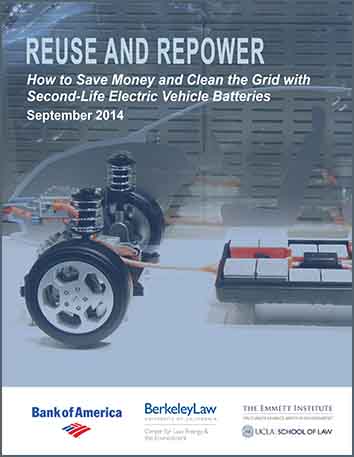 California is experiencing a surge in renewable energy generation from the sun and wind. But the state will face long-term economic and environmental challenges relying on these intermittent resources. To develop a vision and policies for second-life electric vehicle battery deployment, automakers, utilities representatives, energy storage developers, business leaders, and public officials gathered 2014 for a discussion. The group envisioned expanded second-life battery deployment opportunities and suggested strategies and policies to begin developing a market for these batteries.
California is experiencing a surge in renewable energy generation from the sun and wind. But the state will face long-term economic and environmental challenges relying on these intermittent resources. To develop a vision and policies for second-life electric vehicle battery deployment, automakers, utilities representatives, energy storage developers, business leaders, and public officials gathered 2014 for a discussion. The group envisioned expanded second-life battery deployment opportunities and suggested strategies and policies to begin developing a market for these batteries.
August 2014
Addressing Climate Change Without Legislation: Volume 3: USDA
The agricultural industry is currently the fifth largest source of greenhouse gases in the U.S. As the federal agency overseeing the agricultural and forestry sectors, the U.S. Department of Agriculture can play an important role in mitigating climate change. The Department has already acted to reduce greenhouse gas emissions from agricultural activities and increase carbon sequestration on agricultural lands. However, its work is far from complete. This report identifies additional actions the Department can take, under existing law, to reduce emissions and increase sequestration.
July 2014
Addressing Climate Change Without Legislation: Volume 2: FER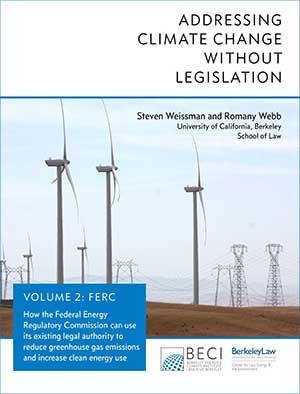
FERC is an independent federal agency responsible for regulating aspects of the electricity, hydropower, natural gas, and oil industries. These industries are among the largest emitters of greenhouse gases nationally. This report discusses further actions FERC can take to reduce the energy sector’s greenhouse gas emissions. The report identifies actions that can be taken under existing law, without the need for approval by Congress.
June 2014
Risks of Crude Oil Shipment by Rail in California
Submitted by Jayni Foley Hein
June 2014
Addressing Climate Change Without Legislation: Volume 1: DOI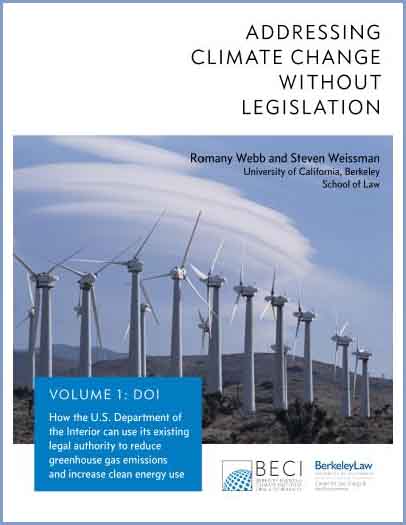
The Department of the Interior (DOI) is one of several executive agencies charged with implementing the President’s Climate Action Plan. This report identifies actions the DOI can take, on the basis of its current legal authority, to mitigate climate change. The identified actions each result in reduced greenhouse gas emissions and/or increased carbon sequestration.
February 2014
Amicus Brief on Behalf of the Planning and Conversation League andthe Council of Infill Builders in CNFF v. San Diego Association of Governments (SANDAG)
Submitted by Michael Kiparsky
January 2014
Railtown: The Fight for the Los Angeles Metro Rail and the Future of the City
The familiar image of Los Angeles as a metropolis built for the automobile is crumbling. Traffic, air pollution, and sprawl motivated citizens to support urban rail as an alternative to driving, and the city has started to reinvent itself by developing compact neighborhoods adjacent to transit. As a result of pressure from local leaders, particularly with the election of Tom Bradley as mayor in 1973, the Los Angeles Metro Rail gradually took shape in the consummate car city.
Railtown presents the history of this system by drawing on archival documents, contemporary news accounts, and interviews with many of the key players to provide critical behind-the-scenes accounts of the people and forces that shaped the system. Ethan Elkind brings this important story to life by showing how ambitious local leaders zealously advocated for rail transit and ultimately persuaded an ambivalent electorate and federal leaders to support their vision.
—2013—
2013 Annual Report
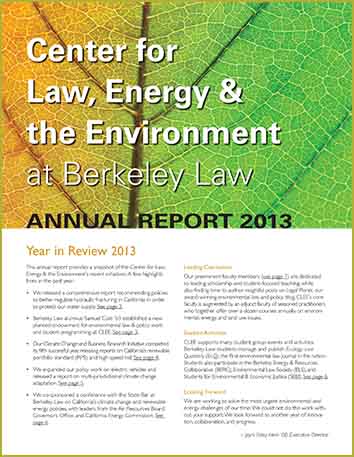 In 2013, we focused on regulating hydraulic fracturing in California in order to protect our water supply, worked with businesses to seize opportunities made by climate change, we expanded our policy work on electric vehicles and released a report on multi-jurisdictional climate change adaptation, and we co-sponsored a conference with the State Bar at Berkeley Law on California’s climate change and renewable energy policies.
In 2013, we focused on regulating hydraulic fracturing in California in order to protect our water supply, worked with businesses to seize opportunities made by climate change, we expanded our policy work on electric vehicles and released a report on multi-jurisdictional climate change adaptation, and we co-sponsored a conference with the State Bar at Berkeley Law on California’s climate change and renewable energy policies.
Read more in our Annual Report.
November 2013
Renewable Energy Beyond 2020: Next Steps for California
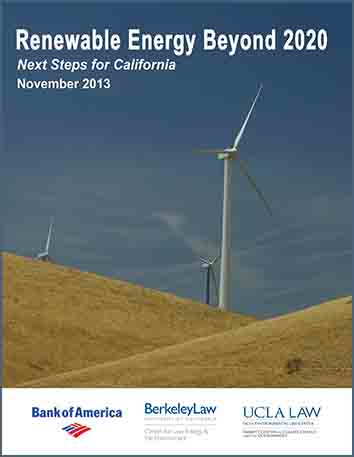 California is among the world’s leaders in the development and deployment of renewable energy. To develop a vision and policies for renewable energy deployment beyond 2020 that addresses these challenges, renewable energy developers, finance experts, advocates, utility representatives, business leaders, and public officials gathered at the University of California, Berkeley in June 2013 for a discussion sponsored by the UC Berkeley and UCLA Schools of Law. The group developed a goal for expanded and improved renewable energy deployment and suggested strategies and policies to achieve it.
California is among the world’s leaders in the development and deployment of renewable energy. To develop a vision and policies for renewable energy deployment beyond 2020 that addresses these challenges, renewable energy developers, finance experts, advocates, utility representatives, business leaders, and public officials gathered at the University of California, Berkeley in June 2013 for a discussion sponsored by the UC Berkeley and UCLA Schools of Law. The group developed a goal for expanded and improved renewable energy deployment and suggested strategies and policies to achieve it.
September 2013
Electric Vehicle Paradise: How Hawaii can Lead the World in Deployment
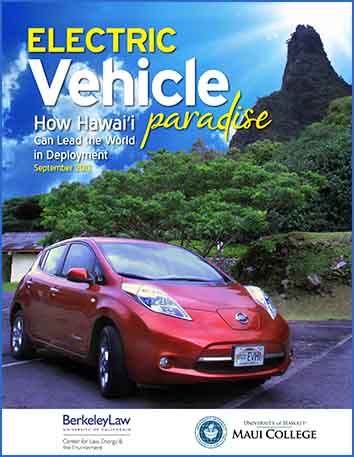 The Maui Electric Vehicle Alliance (Maui EVA), funded by the Department of Energy Clean Cities EV Community Readiness Grant and associated cost-share partners and based at the University of Hawai’i Maui College, met with electric vehicle stakeholders in February and March 2013 on Moloka’i, Hawai’i Island, O’ahu, and Kaua’i, along with the Center for Law, Energy and the Environment at the University of California, Berkeley School of Law. After sharing research findings and learning about the challenges to electric vehicle deployment on the neighbor islands, the authors decided to capture the discussions in this policy report.
The Maui Electric Vehicle Alliance (Maui EVA), funded by the Department of Energy Clean Cities EV Community Readiness Grant and associated cost-share partners and based at the University of Hawai’i Maui College, met with electric vehicle stakeholders in February and March 2013 on Moloka’i, Hawai’i Island, O’ahu, and Kaua’i, along with the Center for Law, Energy and the Environment at the University of California, Berkeley School of Law. After sharing research findings and learning about the challenges to electric vehicle deployment on the neighbor islands, the authors decided to capture the discussions in this policy report.
August 2013
A High Speed Foundation: How to Build a Better California Around High Speed Rail
After decades of planning, high speed rail is coming to California. With a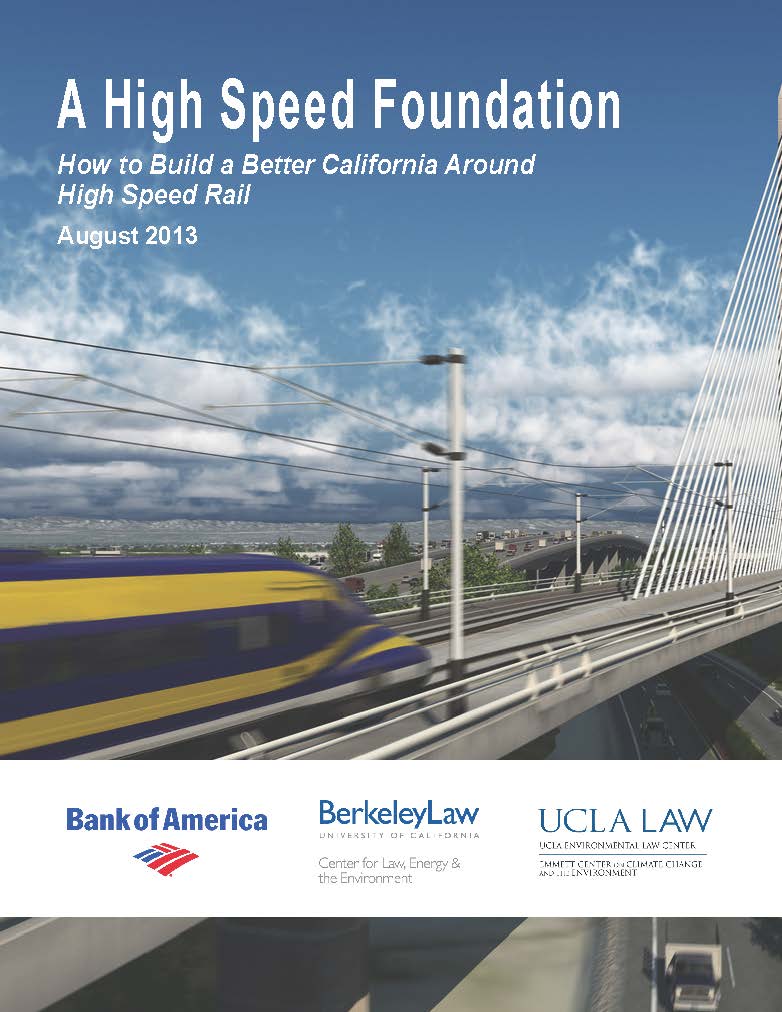 recently revised and more cost-effective business plan, officials hope to begin construction in 2013 on “Phase 1,” which will connect the San Francisco Bay Area to the Los Angeles Basin by 2028 for an estimated $68.4 billion. High speed rail representatives, local government officials, agriculture advocates, and business leaders gathered in Fresno in April 2013 for a discussion sponsored by the UCLA and UC Berkeley Schools of Law. The purpose was to identify the primary challenges to implementing high speed rail successfully in the Valley and to suggest strategies and policies.
recently revised and more cost-effective business plan, officials hope to begin construction in 2013 on “Phase 1,” which will connect the San Francisco Bay Area to the Los Angeles Basin by 2028 for an estimated $68.4 billion. High speed rail representatives, local government officials, agriculture advocates, and business leaders gathered in Fresno in April 2013 for a discussion sponsored by the UCLA and UC Berkeley Schools of Law. The purpose was to identify the primary challenges to implementing high speed rail successfully in the Valley and to suggest strategies and policies.
May 2013
Hydraulic Fracturing in California: Water Quality Protection, Testimony before the California State Assembly
Submitted by Jayni Foley Hein
May 2013
Hydraulic Fracturing in California: Water Quality Protection, Testimony before the California State Assembly
Submitted by Michael Kiparsky
April 2013
Regulation of Hydraulic Fracturing in California: A Wastewater and Water Quality Perspective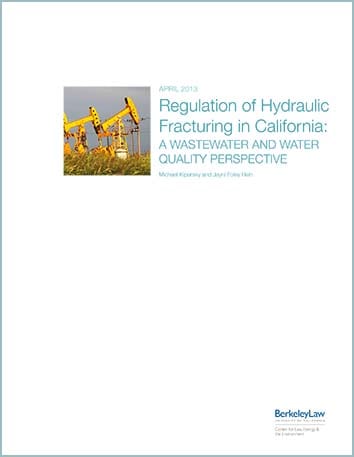
This report focuses on water-related issues surrounding hydraulic fracturing and attendant unconventional oil and gas production processes in California. The report highlights the overarching need for more unbiased information on fracking and its potential impacts, greater public notice and transparency, and increased accountability across all hydraulic fracturing operations and attendant activities.
January 2013
The Innovation Deficit in Urban Water: The Need for an Integrated Perspective on Institutions, Organizations, and Technology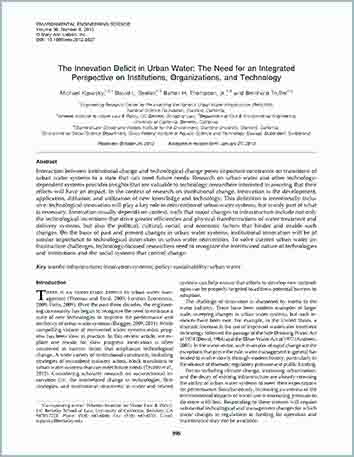
This report focuses on water-related issues surrounding hydraulic fracturing
and attendant unconventional oil and gas production processes in California. The report highlights the overarching need for more unbiased information on fracking and its potential impacts, greater public notice and transparency, and increased accountability across all hydraulic fracturing operations and attendant activities.
—2012—
2012 Annual Report
In 2012, we focused on helping California meet its renewable energy goals, lau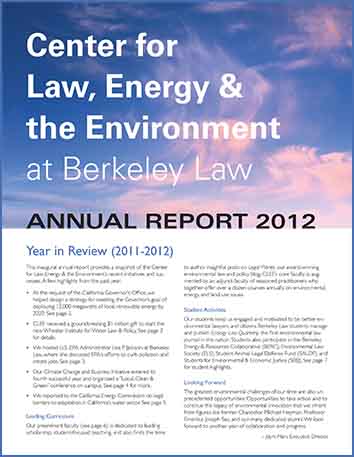 nching the Wheeler Water Institute, climate change and business opportunities, and promoting adaption in California’s water sector. At the request of the California Governor’s Office, we helped design a strategy for meeting the Governor’s goal of deploying 12,000 megawatts of local, renewable energy by 2020. We also hosted U.S. EPA Administrator Lisa P. Jackson at Berkeley Law, where she discussed EPA’s efforts to curb pollution and create jobs.
nching the Wheeler Water Institute, climate change and business opportunities, and promoting adaption in California’s water sector. At the request of the California Governor’s Office, we helped design a strategy for meeting the Governor’s goal of deploying 12,000 megawatts of local, renewable energy by 2020. We also hosted U.S. EPA Administrator Lisa P. Jackson at Berkeley Law, where she discussed EPA’s efforts to curb pollution and create jobs.
Read more in our Annual Report.
September 2012
Comments on FHFA’s Proposed Rule on Enterprise Underwriting Standards for Property-Assessed Clean Energy (PACE) Programs
Submitted by Jayni Foley Hein
September 2012
Electric Drive by ‘25: How California Can Catalyze Mass Adoption of Electric Vehicles by 2025
California will need mass consumer adoption of electric vehicles to meet its 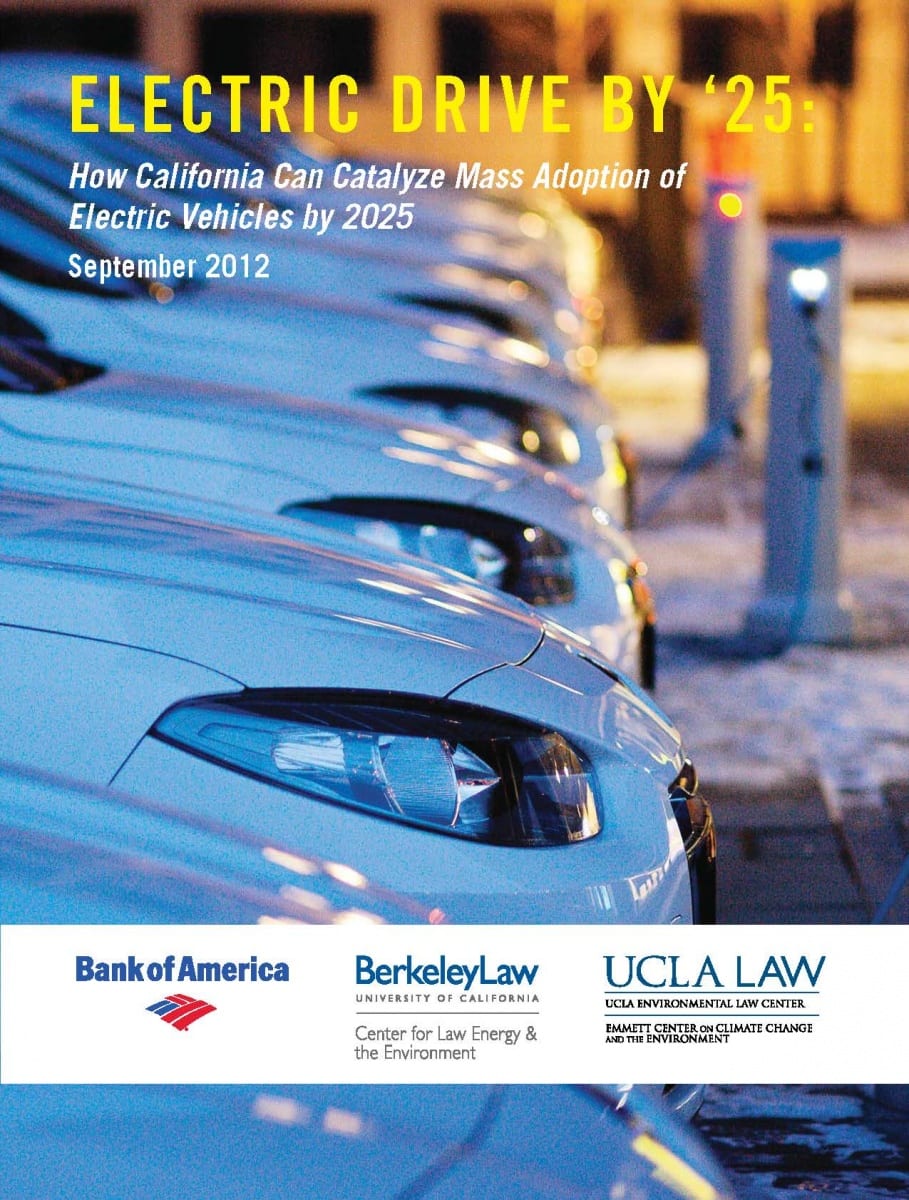 long-term energy and environmental goals and to improve its economy. As of May 2012, plug-in electric vehicles comprised approximately 30,000 of the cars in the United States, more than four times as many as the year before. Yet challenges remain to adoption. At the workshop that produced this report, stakeholders came together to discuss solutions and major challenges.
long-term energy and environmental goals and to improve its economy. As of May 2012, plug-in electric vehicles comprised approximately 30,000 of the cars in the United States, more than four times as many as the year before. Yet challenges remain to adoption. At the workshop that produced this report, stakeholders came together to discuss solutions and major challenges.
July 2012
Legal Analysis of Barriers to Adaption for California’s Water Sector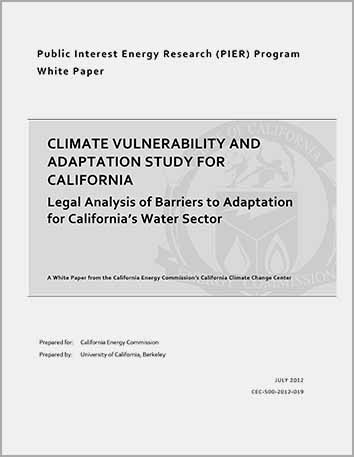
This project focused on the legal and institutional framework associated with California’s water rights allocation system, and identifies changes to that framework that would facilitate adaptation to climate change. Since such changes may be difficult to accomplish, the project focused largely, but not exclusively, on changes that may be politically feasible now or in the future.
July 2012
Preserving Agricultural Land from Development, Testimony at the California Department of Food and Agriculture
Submitted by Ethan Elkind
July 2012
Climate and Water: Knowledge of Impacts to Action on Adaptation 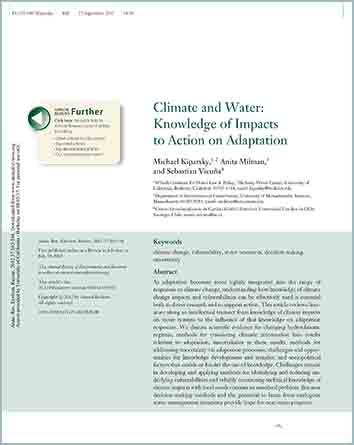
As adaptation becomes more tightly integrated into the range of responses to climate change, understanding how knowledge of climate change impacts and vulnerabilities can be effectively used is essential both to direct research and to support action. This article reviews literature along an intellectual transect from knowledge of climate impacts on water systems to the influence of that knowledge on adaptation responses.
June 2012
California’s Transition to Local Renewable Energy: 12,000 Megawatts by 2020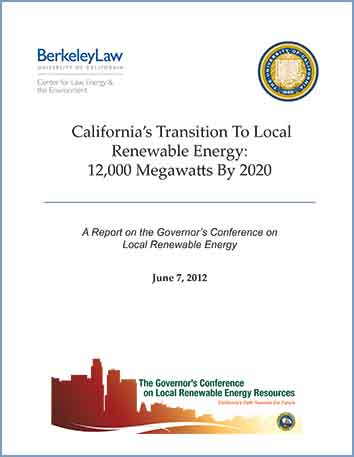
California has one of the most ambitious renewable energy programs in the country, with a target of procuring 33 percent of its electric energy from renewable sources by 2020. Governor Jerry Brown has raised the bar even higher, calling for California to reach and surpass the 33 percent target by developing 12,000 megawatts of local renewable energy. This report summarizes the concerns, observations and suggestions of Conference participants and other stakeholders for clearing a path toward the 12,000 megawatt goal.
May 2012
Siting Renewable Energy Facilities on Agricultural Land, Testimony at the California Energy Commission
Submitted by Ethan Elkind
May 2012
California’s Distributed Generation Policies, Testimony at the California Energy Commission
Submitted by Jeffrey Russell
May 2012
California’s Cap-and-Trade Auction Proceeds: Taxes, Fees, or Something Else?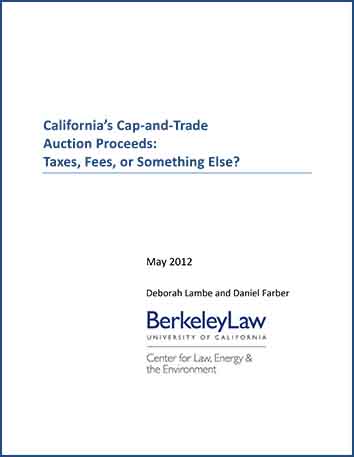
In 2006, California enacted the Global Warming Solutions Act, known as AB 32. Under that legislation, the state must reduce greenhouse gas emissions to their 1990 level by the year 2020. This paper examines the legal viability of a range of potential uses of the auction proceeds generated by AB 32’s market‐based mechanism.
March 2012
Trees and Power Lines: Minimizing Conflicts between Electric Power Infrastructure and the Urban Forest
Trees and overhead power lines are not e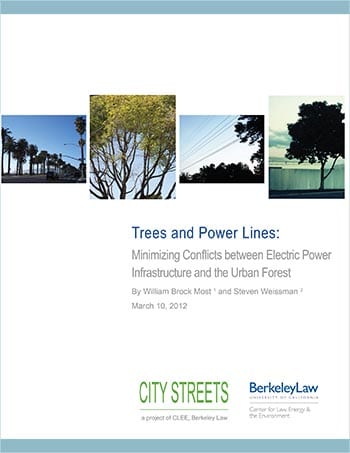 asy companions in the urban landscape. Cities and their inhabitants plant trees in order to provide safe and pleasant pedestrian environments, cool the urban landscape, improve storm water management, provide wildlife habitat, and mitigate climate change.
asy companions in the urban landscape. Cities and their inhabitants plant trees in order to provide safe and pleasant pedestrian environments, cool the urban landscape, improve storm water management, provide wildlife habitat, and mitigate climate change.
February 2012
The Statewide Benefits of Net-Metering in California & the Consequences of Changes to the Program
Net Metering is a policy that allows commercial and residential electricity 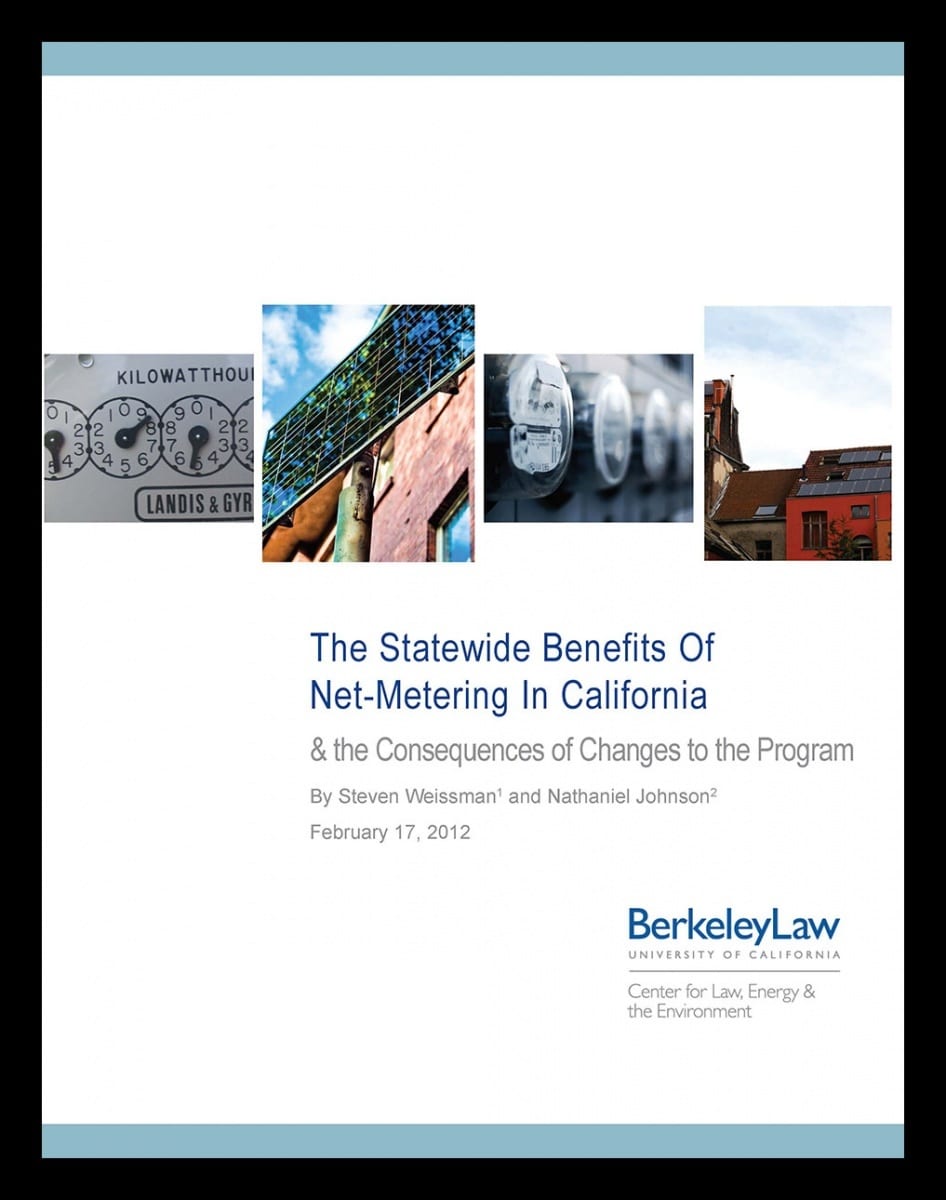 customers to receive credits on their utility bills for on-site renewable energy generation in excess of their electric load that is exported to the state’s electric grid. Recently, California’s net metering program has been called into question by some electric utilities, most noticeably, the San Diego Gas & Electric Company (SDG&E). This paper addresses these important questions about the net metering program, as well as the implication that the costs associated with the program outweigh the benefits.
customers to receive credits on their utility bills for on-site renewable energy generation in excess of their electric load that is exported to the state’s electric grid. Recently, California’s net metering program has been called into question by some electric utilities, most noticeably, the San Diego Gas & Electric Company (SDG&E). This paper addresses these important questions about the net metering program, as well as the implication that the costs associated with the program outweigh the benefits.
—2011—
November 2011
2020 Strategic Analysis of Energy Storage in California
As California progresses towards its goal of 33 percent renewable electricity 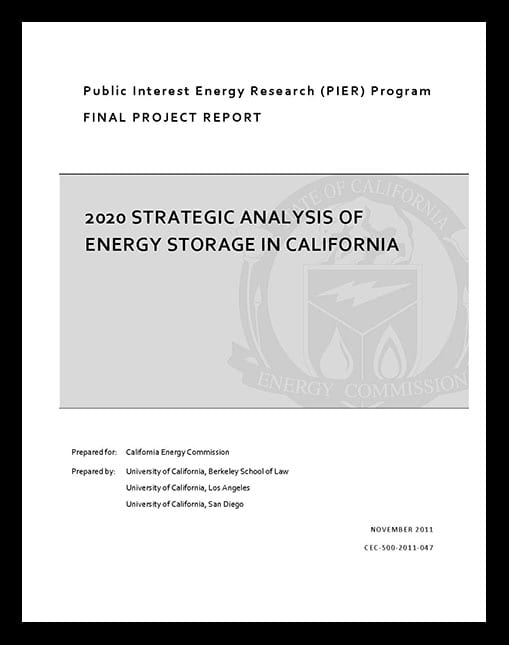 generation , the potential for energy storage to help integrate renewable resources and maintain a reliable and efficient electric grid takes on great significance. The report assesses current energy storage technologies, discusses the diverse policies affecting deployment in California, and outlines critical technology gaps, future research needs, and policy reforms.
generation , the potential for energy storage to help integrate renewable resources and maintain a reliable and efficient electric grid takes on great significance. The report assesses current energy storage technologies, discusses the diverse policies affecting deployment in California, and outlines critical technology gaps, future research needs, and policy reforms.
October 2011
Harvesting Clean Energy: How California Can Deploy Large-Scale Renewable Energy Projects on Appropriate Farmland
California’s ambitious renewable energy goals will require the deployment of 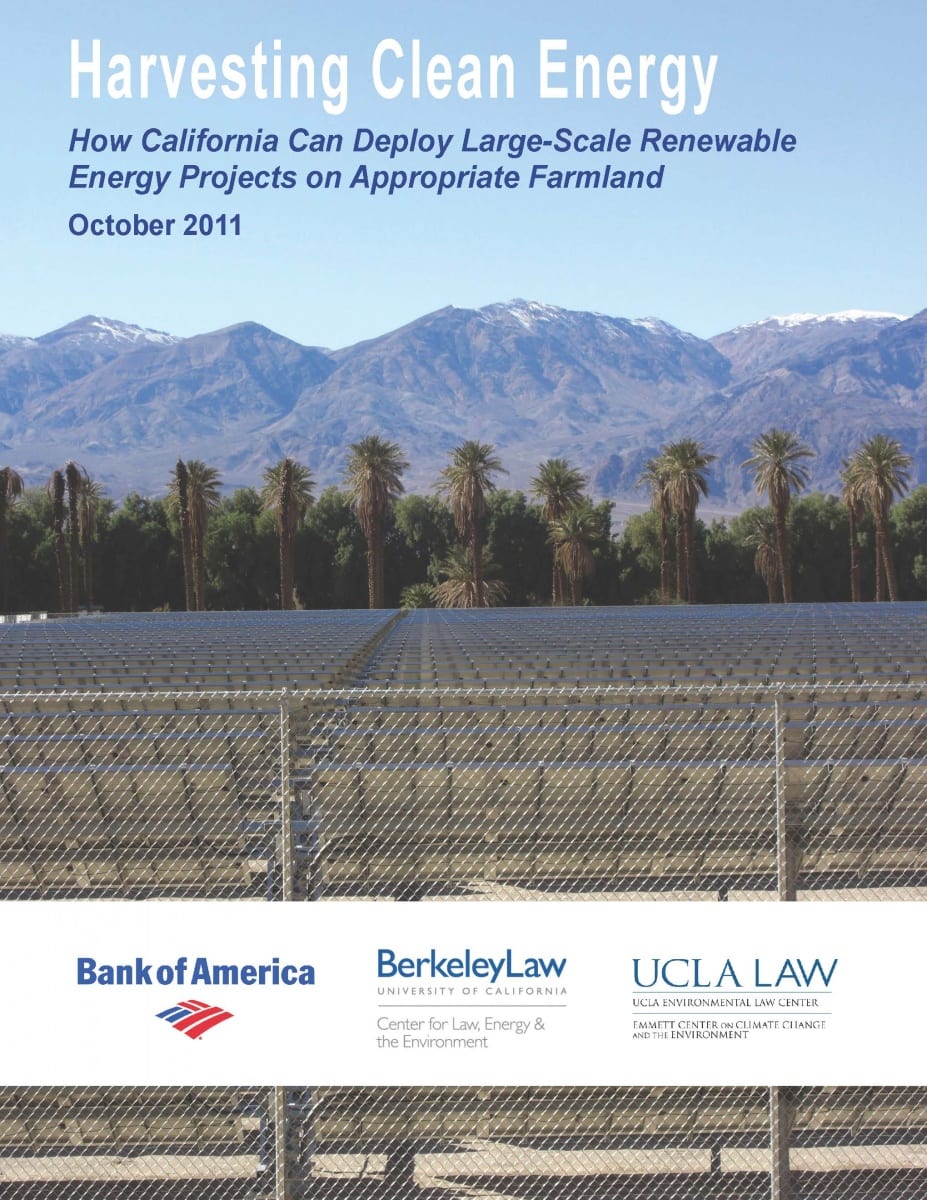 large scale renewable energy facilities. While the state and federal governments have strived to accommodate utility-scale renewable energy projects on public lands, developers in California are increasingly looking to agricultural land to site their projects. However, building large-scale solar facilities on farmland – whether impaired, marginal, or otherwise degraded – can compromise other valuable resources. State and local governments must therefore provide direction, mapping, and incentives to facilitate beneficial project site selection and avoid permit delays, litigation, and the potential for inefficient use of existing electricity infrastructure.
large scale renewable energy facilities. While the state and federal governments have strived to accommodate utility-scale renewable energy projects on public lands, developers in California are increasingly looking to agricultural land to site their projects. However, building large-scale solar facilities on farmland – whether impaired, marginal, or otherwise degraded – can compromise other valuable resources. State and local governments must therefore provide direction, mapping, and incentives to facilitate beneficial project site selection and avoid permit delays, litigation, and the potential for inefficient use of existing electricity infrastructure.
October 2011
Siting Renewable Energy Facilities on Agricultural Land
Submitted by Ethan Elkind
August 2011
Emissions Trading and Social Justice
Cap and trade is controversial in part because of claims that it is unjust, an issue that was highlighted by recent litigation against California’s proposed carbon market. This essay considers an array of fairness issues relating to cap and trade.
August 2011
State Policies on Energy Efficiency Upgrades
Submitted by Ethan Elkind
July 2011
Habitat Conservation Plans and Climate Change: Recommendations for Policy
Habitat conservation plans (HCPs) are critical tools for managing species and their habitats. Climate change poses special challenges for successful habitat conservation planning, but there are several steps to take to address these challenges. Key provisions in government regulations and guidance are at odds with considering climate change in HCPs, and revisions are recommended, including reliance on adaptive management. By looking to these recommended best practices, habitat conservation planning can be strengthened not only to address climate change, but to better reflect the changing context and environment in which HCPs must be implemented.
July 2011
All Aboard: How California Can Increase Investments in Public Transit
The buses, passenger rail cars, and shuttle vans that serve California’s 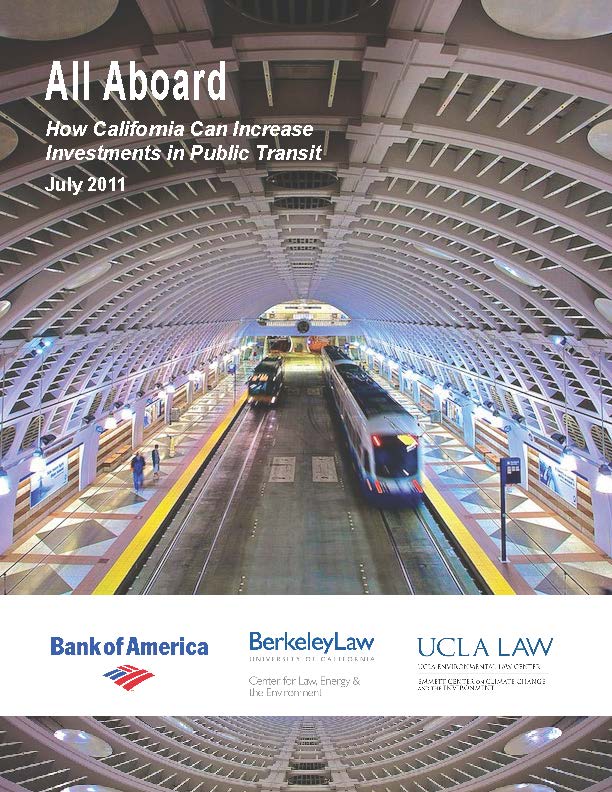 communities provide critical benefits to the state’s environment, economy, and quality of life. Current levels of funding for public transit, however, are insufficient to support the extensive system needed to achieve these economic and environmental benefits. Stabilizing and improving funds for transit will be necessary for California to improve its transit system and achieve the resulting benefits.
communities provide critical benefits to the state’s environment, economy, and quality of life. Current levels of funding for public transit, however, are insufficient to support the extensive system needed to achieve these economic and environmental benefits. Stabilizing and improving funds for transit will be necessary for California to improve its transit system and achieve the resulting benefits.
May 2011
Drops of Energy: Conserving Urban Water in California to Reduce Greenhouse Gas Emissions
Water use means energy use. The state pumps and treats water and consumers 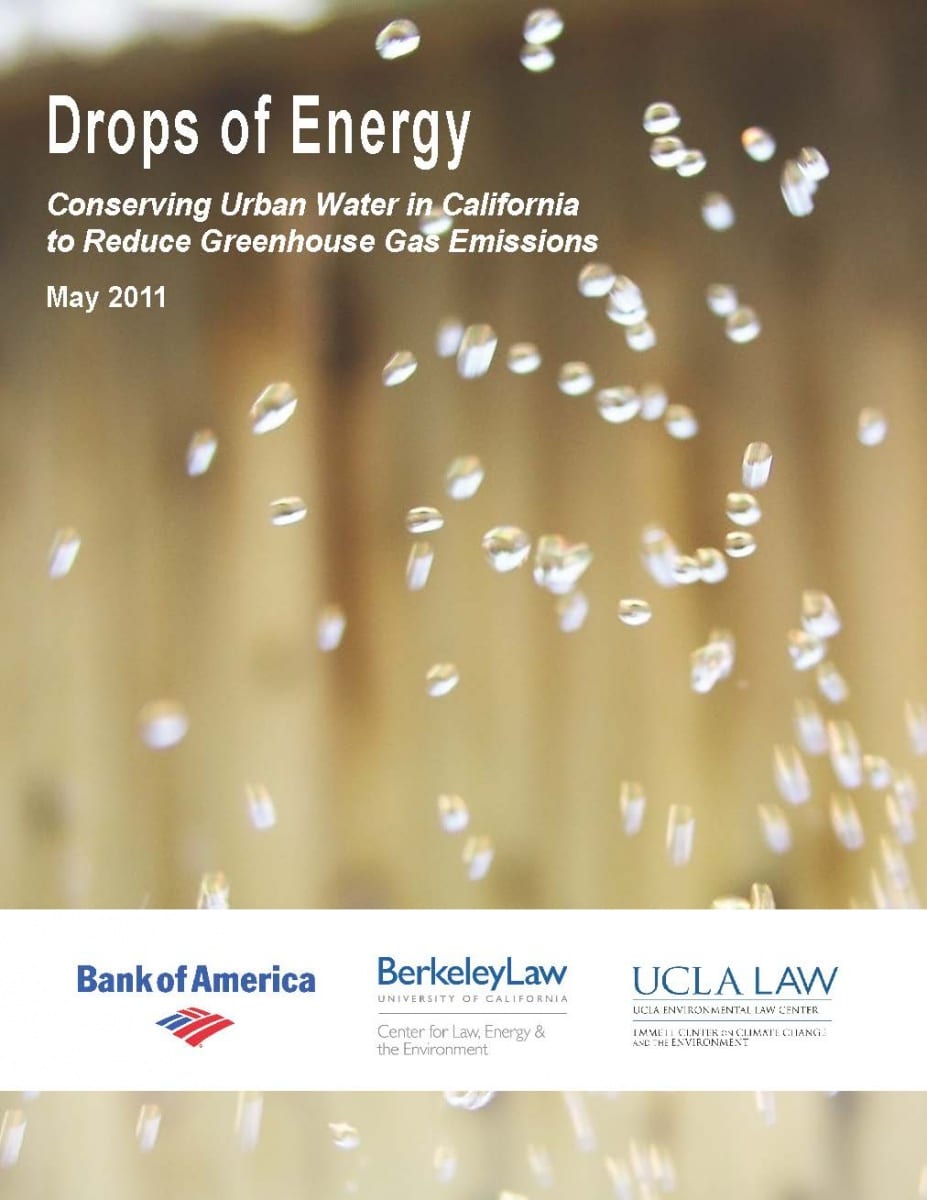 use water in energy-intensive ways, such as through water heating and pressurizing. Consequently, the consumption of water in California requires approximately 20 percent of the state’s electricity, 30 percent of its non-power plant natural gas, and 88 million gallons of diesel fuel annually. This paper focuses on urban water use, defined as usage by residents, non-farm businesses, industries, and municipalities.
use water in energy-intensive ways, such as through water heating and pressurizing. Consequently, the consumption of water in California requires approximately 20 percent of the state’s electricity, 30 percent of its non-power plant natural gas, and 88 million gallons of diesel fuel annually. This paper focuses on urban water use, defined as usage by residents, non-farm businesses, industries, and municipalities.
April 2011 and November 2011
State Policies for Deploying Energy Storage, Testimony at the California Energy Commission
Submitted by Ethan Elkind
April 2011
Making Good Use of Adaptive Management
Over the last two decades, natural resource scientists, managers, and 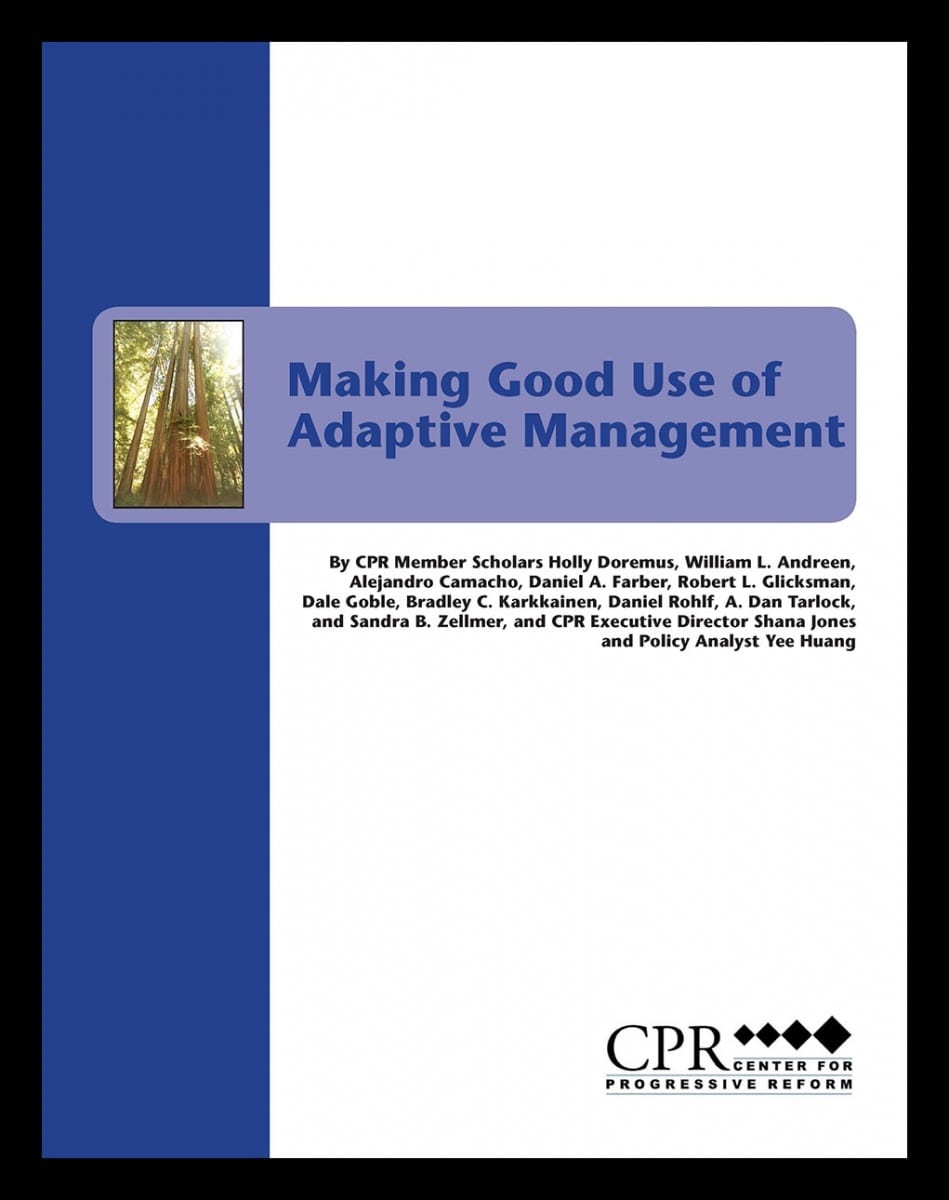 policymakers have increasingly endorsed “adaptive management” of land and natural resources. This approach, based on adaptive implementation of resource management and pollution control laws, is now mandated in a variety of contexts at the federal and state level. Yet confusion remains over the meaning of adaptive management, and disagreement persists over its usefulness or feasibility in certain contexts. This white paper is intended to help legislators, agency personnel, and the public better understand and use adaptive management.
policymakers have increasingly endorsed “adaptive management” of land and natural resources. This approach, based on adaptive implementation of resource management and pollution control laws, is now mandated in a variety of contexts at the federal and state level. Yet confusion remains over the meaning of adaptive management, and disagreement persists over its usefulness or feasibility in certain contexts. This white paper is intended to help legislators, agency personnel, and the public better understand and use adaptive management.
March 2011
State Policies for Deploying Energy Storage
Submitted by Ethan Elkind
—2010—
November 2010
Bringing the California Dream into the Twenty-First Century: Strategies for Sustainable Consumption and Communities
September 2010
California at the Crossroads: Proposition 23, AB 32, and Climate Change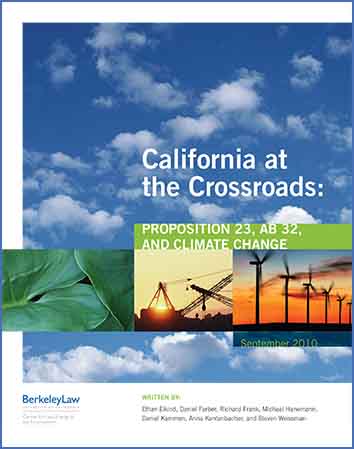
Proposition 23, an initiative appearing on California’s November 2010 general election ballot, would suspend the implementation and operation of California’s Global Warming Solutions Act of 2006, better known as AB 32, until state unemployment rates remain at or below 5.5 percent for four consecutive quarters. That level has been reached three times since the state began compiling these statistics in 1976. AB 32 requires California to reduce its greenhouse gas emissions to 1990 levels by 2020, a reduction of approximately 30 percent from projected business-as-usual levels for the same year.
July 2010
The Power of Energy Storage: How to Increase Deployment in California to Reduce Greenhouse Gas Emissions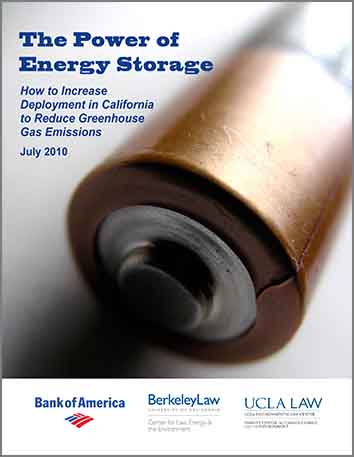
Energy storage, through technologies such as batteries, flywheels, and compressed air, will be critical to integrating intermittent renewable energy, like solar or wind, into the grid. Key policy recommendations: Revised utility and grid operator procurement policies that allow competition from energy storage technologies, tax benefits for energy storage projects, and the creation of a separate asset class for energy storage
July 2010
PLAN FOR THE FUTURE: HOW LOCAL GOVERNMENTS CAN HELP IMPLEMENT CALIFORNIA’S NEW LAND USE AND CLIMATE CHANGE LEGISLATION
Many local governments need assistance developing the land u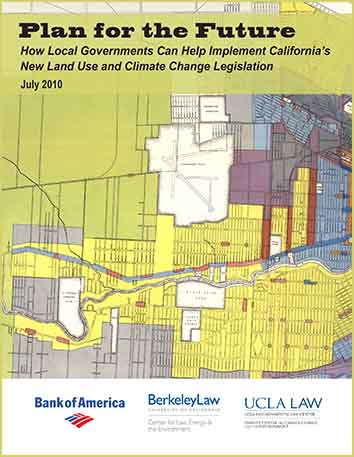 se plans necessary to implement SB 375, the state’s landmark law that coordinates transportation and land use planning at the regional level. Key policy recommendations: Improved public outreach to encourage citizen participation in developing a vision for population growth and transportation in local communities, expanded financing for local government planning efforts, and streamlined local land use codes and sharing of best practices.
se plans necessary to implement SB 375, the state’s landmark law that coordinates transportation and land use planning at the regional level. Key policy recommendations: Improved public outreach to encourage citizen participation in developing a vision for population growth and transportation in local communities, expanded financing for local government planning efforts, and streamlined local land use codes and sharing of best practices.
May 2010
Saving Energy: How California Can Launch a Statewide Retrofit Program for Existing Residences and Small Businesses
Energy efficiency retrofit programs in California have experienced several major 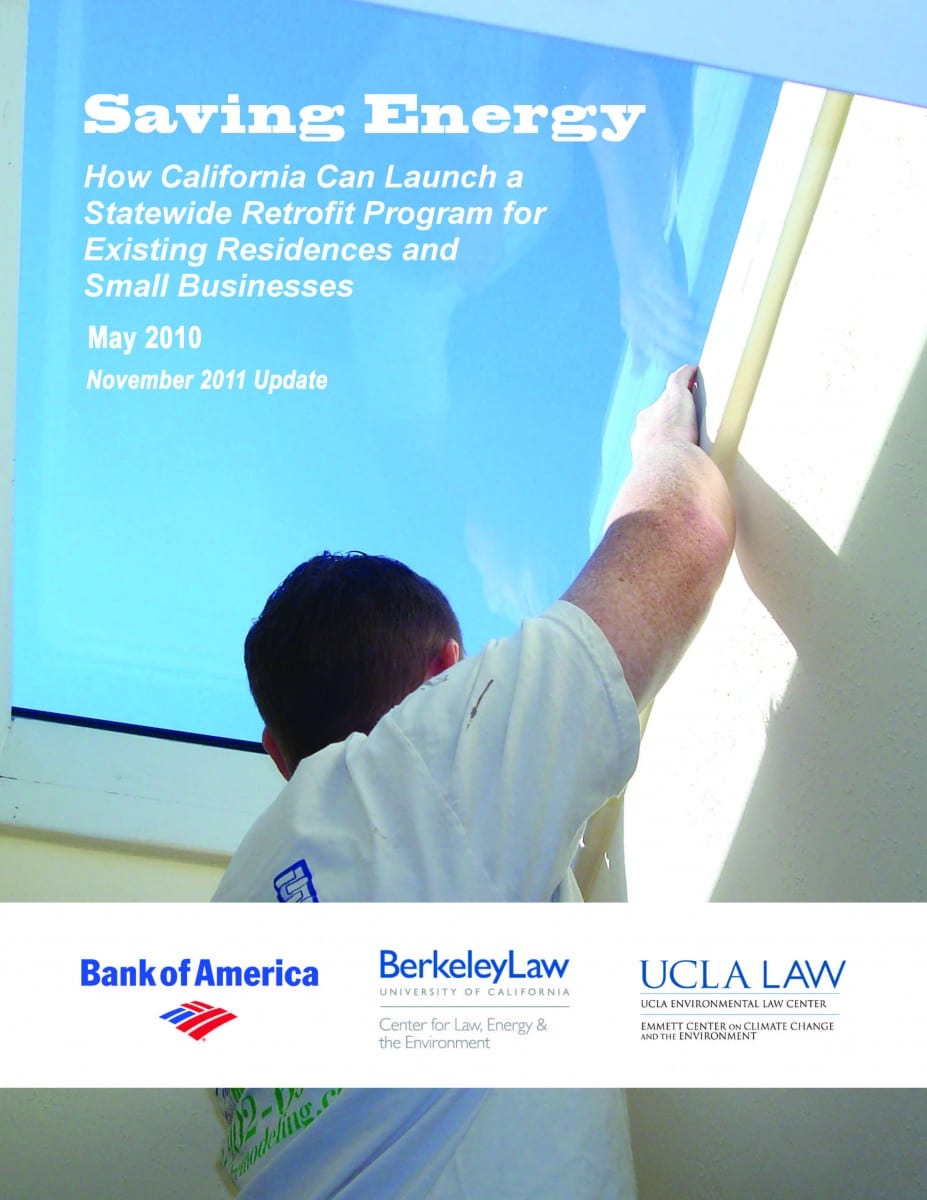 developments since Saving Energy was released in May 2010. At the local level, cities and counties have been experimenting with diverse strategies for implementing building retrofit programs. While California still requires additional policies to stimulate widespread residential retrofits, the heightened attention of policy makers to this issue, coupled with innovation by cities and counties to overcome the challenges, provide reasons for optimism.
developments since Saving Energy was released in May 2010. At the local level, cities and counties have been experimenting with diverse strategies for implementing building retrofit programs. While California still requires additional policies to stimulate widespread residential retrofits, the heightened attention of policy makers to this issue, coupled with innovation by cities and counties to overcome the challenges, provide reasons for optimism.
May 2010
California’s Proposition 16: An Analysis
April 2010
A Simple but Fundamental Step: Put all EISS and EAS on the Web
April 15, 2010 NEPA provides the basic federal process for illuminating the environmental costs and benefits of “proposals for legislation and other major Federal actions.” 42 U.S.C. 4332 (C). We have a simple suggestion, and one that we believe is in the interest of good and democratic government, but otherwise politically neutral: put the essential and already public documents of NEPA assessment on the web. Testimony for the President’s Council on Environmental Quality & The U.S. Institute for Environmental Conflict Resolution.
March 2010
Room to Grow: How California Agriculture Can Help Reduce Greenhouse Gas Emissions
Few business sectors in California have more to lose from the impacts of climate 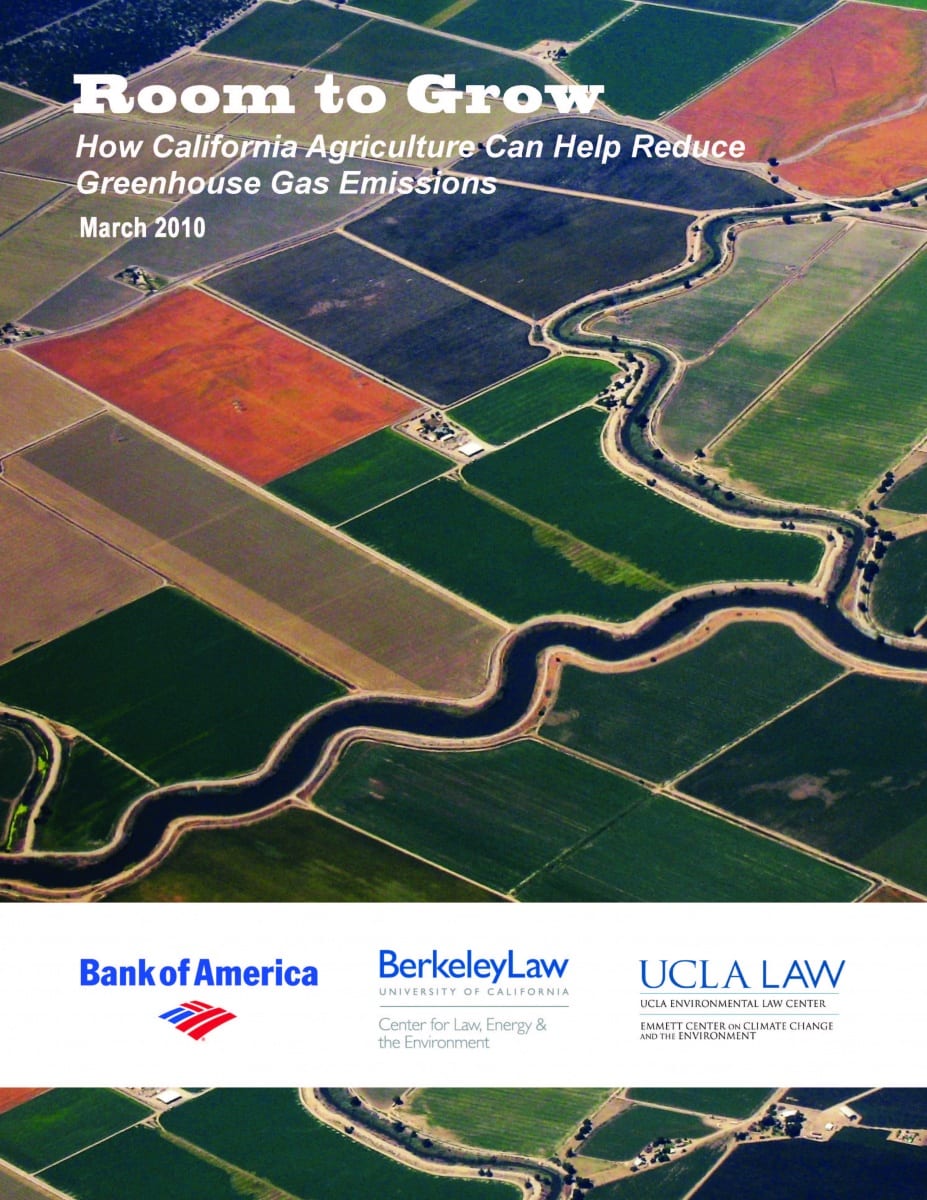 change than agriculture. To identify barriers and solutions for reducing GHG emissions, a group of leaders, academics, policy-makers, representatives, and water experts met. In the short term, agriculture leaders can adopt immediate and cost-effective practices that will reduce GHG emissions. In the long-term, policy-makers will need to assist industry efforts to generate renewable energy from agricultural byproducts and to research new and cost effective practices and technologies to reduce GHG emissions from agricultural commodities.
change than agriculture. To identify barriers and solutions for reducing GHG emissions, a group of leaders, academics, policy-makers, representatives, and water experts met. In the short term, agriculture leaders can adopt immediate and cost-effective practices that will reduce GHG emissions. In the long-term, policy-makers will need to assist industry efforts to generate renewable energy from agricultural byproducts and to research new and cost effective practices and technologies to reduce GHG emissions from agricultural commodities.
January 2010
Testimony on Performance of California Department of Fish & Game
In January 2010, CLEE Executive Director Richard Frank testified before joint California Assembly and Senate Committees on the legal mandates of California’s Department of Fish & Game, and the record of the Department in fulfilling those mandates. Frank testified at the request of the California Legislature, surveyed the Department’s legal responsibilities, and assessed the Department’s record in recent years in each of those subject areas.
—2009—
December 2009
In Our Backyard: How to Increase Renewable Energy Production on Big Buildings and Other Local Spaces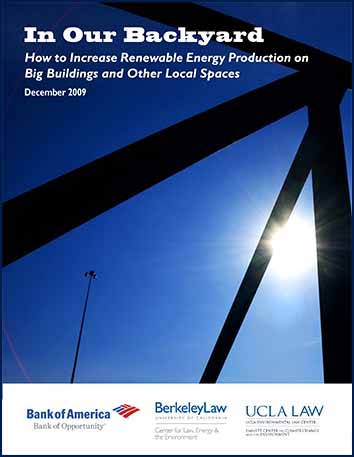
In California’s effort to combat climate change, few other sectors present as many opportunities as renewable energy. But climate change and the state’s aggressive renewable energy requirements require immediate action. To address these barriers and formulate solutions, a group of representatives met at the UC Berkeley School of Law in June 2009. . Based on that discussion, this paper identifies the immediate and longer-term actions that government leaders, private industry, and public agencies must take to address the barriers.
Fall 2009
Testimony Before California’s Little Hoover Commission on State Water Rights Law
In the fall of 2009, CLEE Executive Director Richard Frank testified at the invitation of California’s Little Hoover Commission on the subjects of California’s water rights system and the State Water Resources Control Board’s effectiveness in administering that system. He offered his perspective as to deficiencies in California’s current system, and suggested possible means of reforming water rights administration in the state.
October 2009
CLEE Files Amicus Brief with U.S. Supreme Court in Property Rights Case
In October 2009, the Center for Law, Energy & the Environment filed a friend-of-the-court brief with the U.S. Supreme Court in a major property rights case. CLEE submitted the brief on behalf of the Coastal States Organization, in support of the State of Florida’s efforts to protect coastal beaches in the wake of natural disasters. Florida homeowners challenged those efforts in court, claiming that the Florida program violates their private property rights under the Fifth Amendment to the U.S. Constitution. The case remains pending before the Supreme Court. Amicus brief for the Coastal States Organization filed with the U.S. Supreme Court.
August 2009
Removing the Roadblocks: How to Make Sustainable Development Happen Now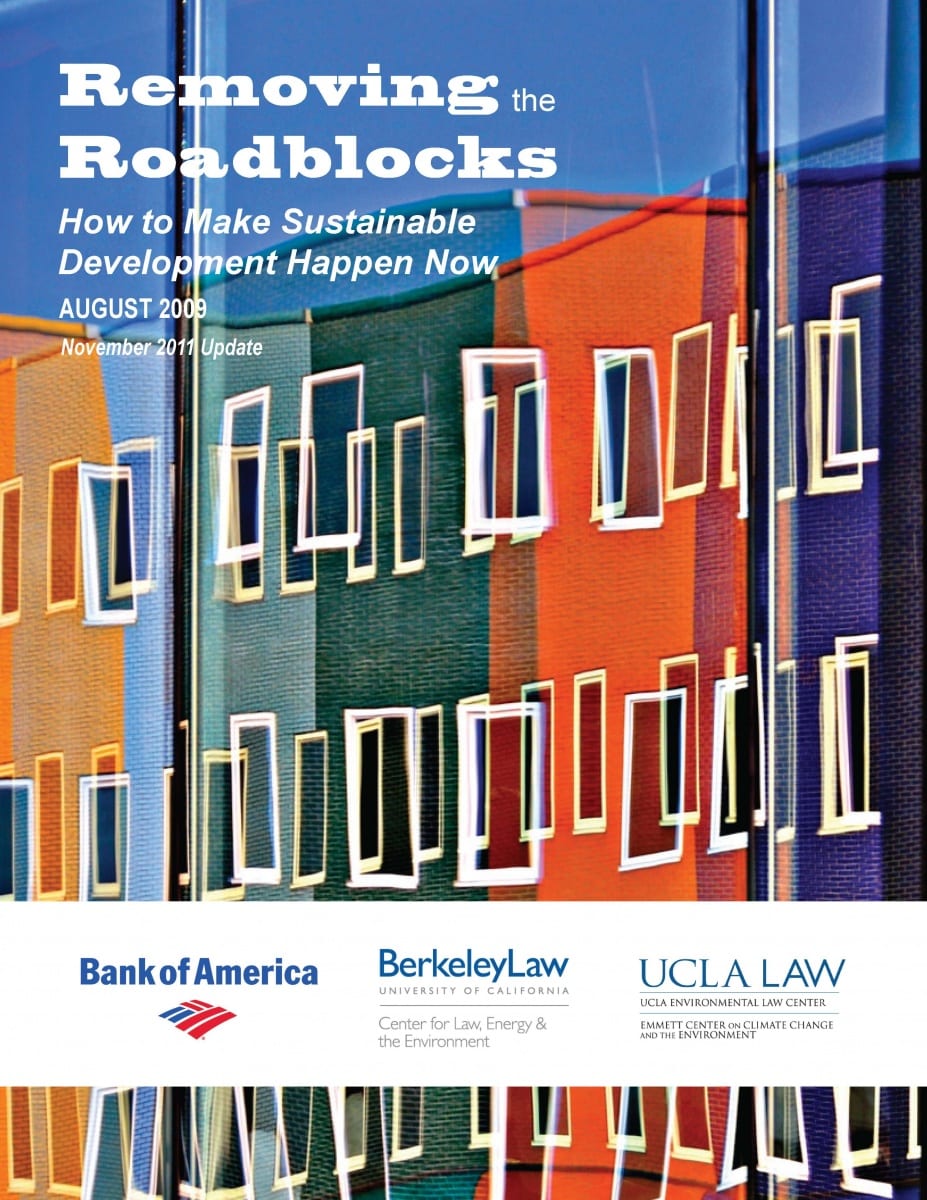
Since Removing the Roadblocks was released in August 2009, new business, policy, and market developments have addressed or implemented some of the conclusions contained in the document. The topic of sustainable development continues to be of prime importance for achieving the state’s greenhouse gas emission reduction goals, meeting market demand for diverse housing options close to transit and services, and helping the residential construction sector recover from the economic downturn.
July 2009
Current Policy and Legal Issues Affecting Recreational Use of Public Lands in the American West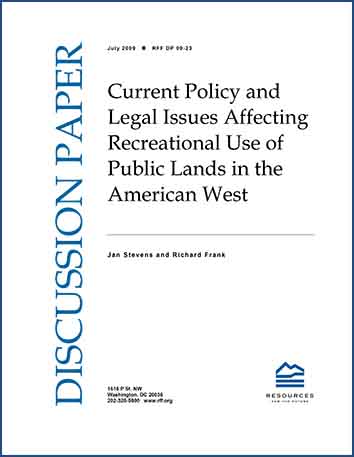
Federally owned and managed public lands occupy approximately 30 percent of the land area of the United States, and anywhere from 50 percent to more than 80 percent of the land area of many of the western states. Determining the appropriate use of these lands involves balancing objectives related to economic, recreational, and conservation interests. This paper examines established and emerging conflicts within and across these objectives through both a narrative discussion of specific topics and a series of case studies.
July 2009
Addressing Regulatory Barriers to Construction of Biomass Facilities in California
This document describes renewable energy benefits of biomass facilities such as dairy methane digester systems, identifies permitting and regulatory obstacles faced by entities wishing to construct new methane digester systems in California, suggests areas of research to understand better the identified obstacles, and recommends evaluation of potential policy solutions.
March 2009
California’s Salmon Crisis – Hearing Before the California Assembly Committee on Water, Parks and Wildlife
March 10, 2009 In March 2009, Holly Doremus, Faculty Co-Director, Center for Law, Energy & the Environment, Berkeley Law and Richard Frank, Lecturer in Residence, Executive Director, Center for Law, Energy & the Environment, Berkeley Law testified before the California Assembly Committee on Water, Parks and Wildlife. The testimony addressed the current salmon and steelhead spawning declines (which had been found by the American Fisheries Society, in 1991, to include extinction of 106 Pacific salmon runs and 101 more at high risk) and assesses the future risks which global climate change might bring with ocean and river fluctuations. It also offered proposed solutions to the problems of regulatory overlap, regulatory fragmentation, inertia, lack of necessary fiscal and staff resources, and political will within the conservation effort’s regulatory system. Testimony on California’s Salmon Crisis.
—2008—
November 2008
Supporting the State of California’s Climate Change Initiatives in Federal Court
The Center for Law, Energy & the Environment filed a friend-of-the-court brief filed November 24, 2008, in a major environmental case, on behalf of U.S. Senators Feinstein and Boxer, Speaker of the House Pelosi, and most of California’s Congressional delegation. The brief, filed with the U.S. Court of Appeals for the District of Columbia, endorsed the State of California’s legal challenge to the Bush Administration’s refusal to allow California to implement important greenhouse gas emission controls needed to reduce global warming. The brief supported California’s position that the Administration’s action violates federal Clean Air Act. (The case ultimately settled on terms favorable to the State of California in early 2009, following the change in federal administrations.) Amicus Curie Brief for State of California vs. U.S. EPA
October 2008
California’s Proposition 7: An Analysis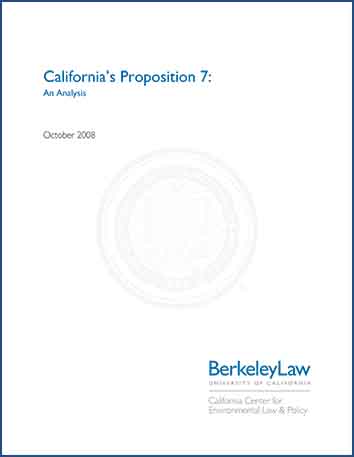
California has one of the most ambitious renewable energy electric generation programs in the country. In the meantime, current state law blocks regulators from imposing a standard higher than 20 percent, and energy providers are struggling to meet that goal. The proponents of Proposition 7, on California’s November 2008 ballot, seek to apply the 20 percent obligation to all electricity providers, including municipal utilities, and to further require providers deliver at least 40 percent renewable power by 2020.
August 2008
Comments from Environmental Law Professors, Re: Proposed Rule – Interagency Cooperation under the Endangered Species Act
The enactment of the Endangered Species Act (“ESA”) in 1973 marked a watershed in development of law for the preservation of biological diversity. In sweeping terms, the 1973 Act extended the federal sphere of influence over wildlife to include every parcel of land or stretch of ocean in the United States or on the high seas required for the survival of any protected species.

